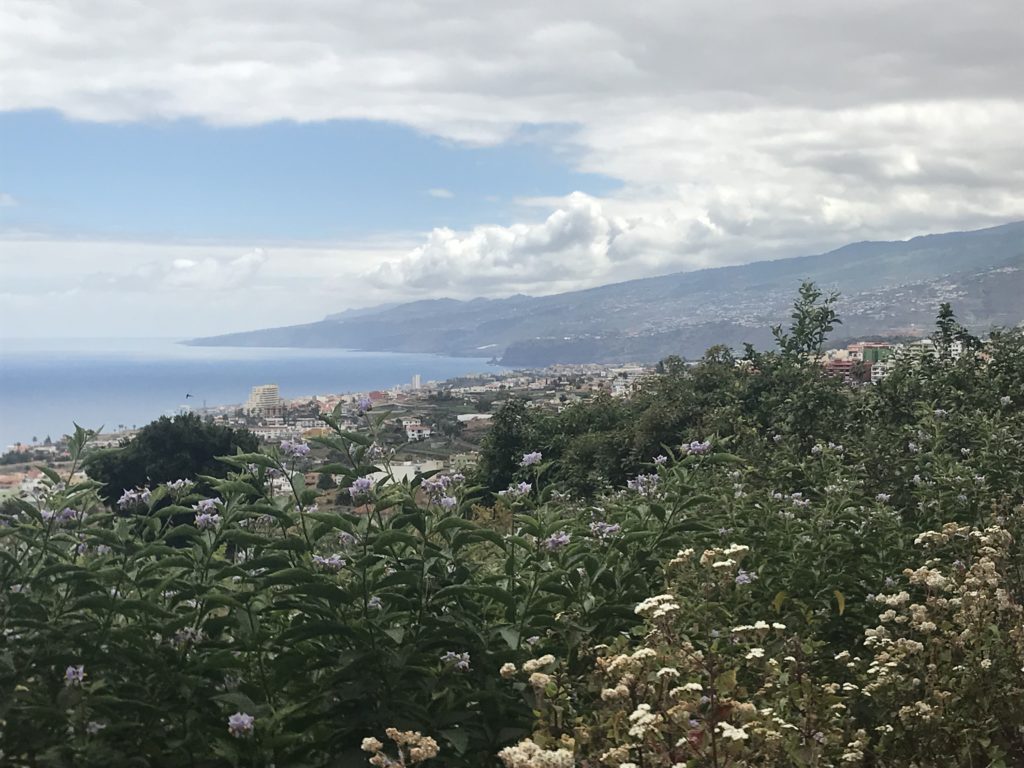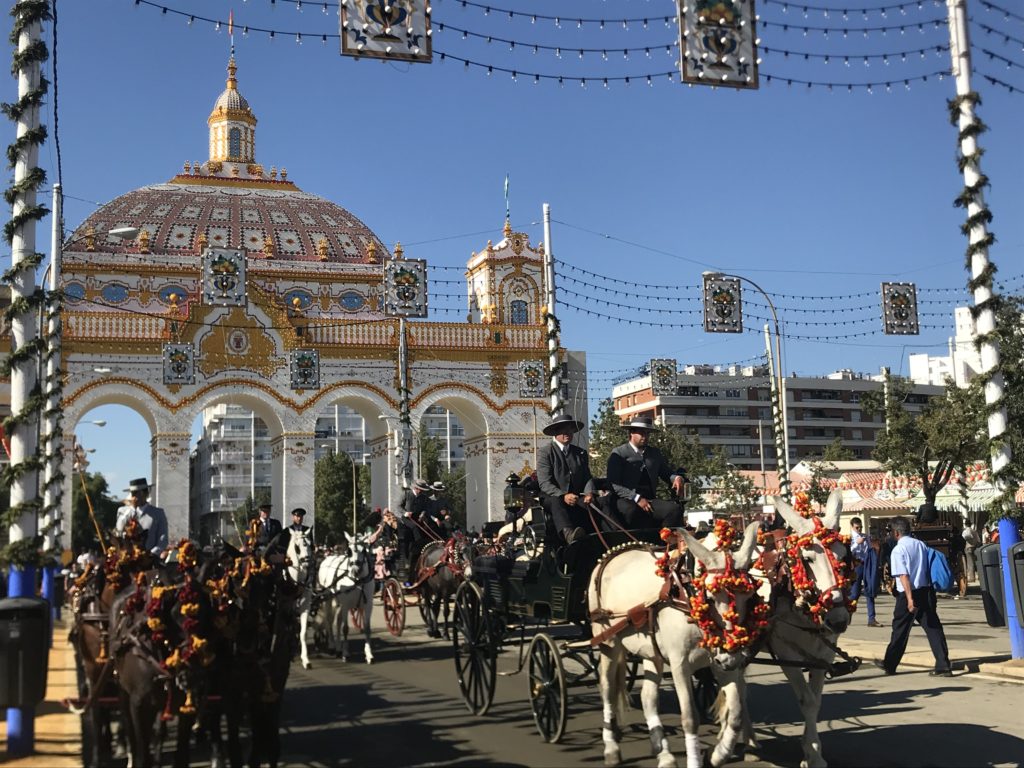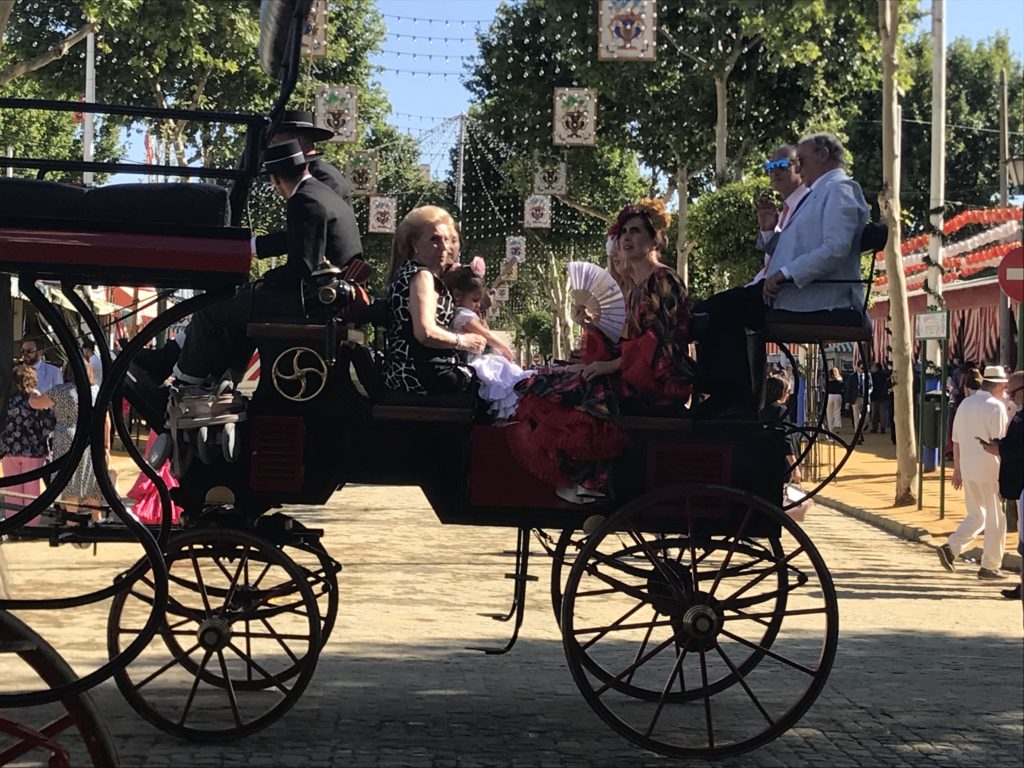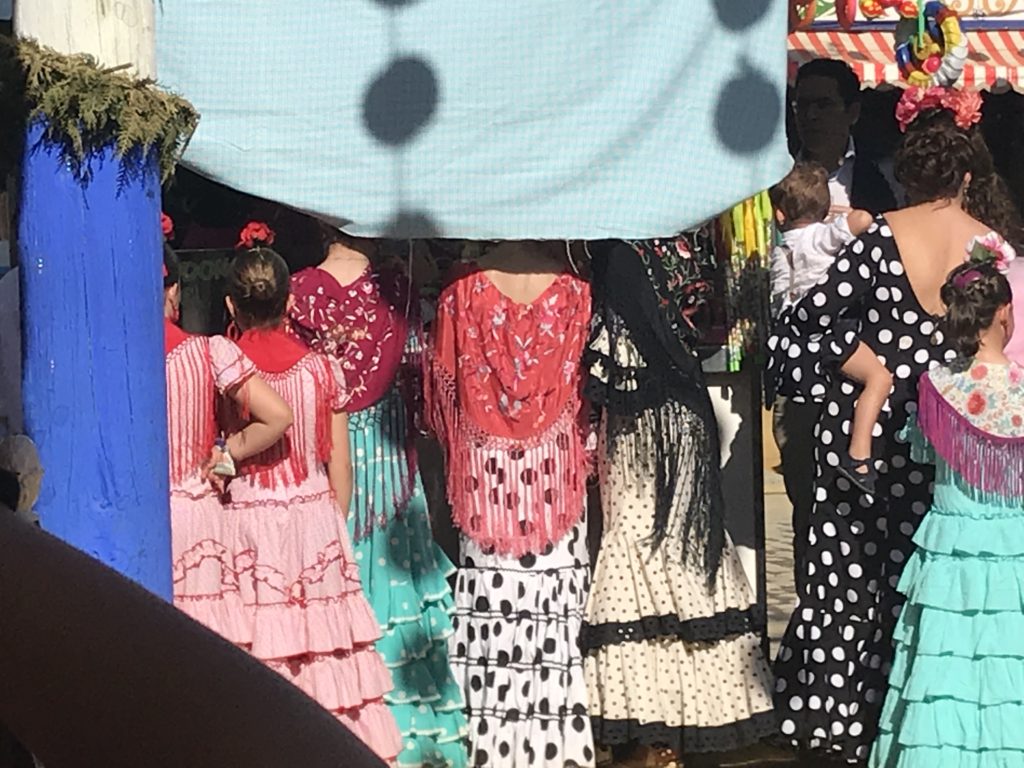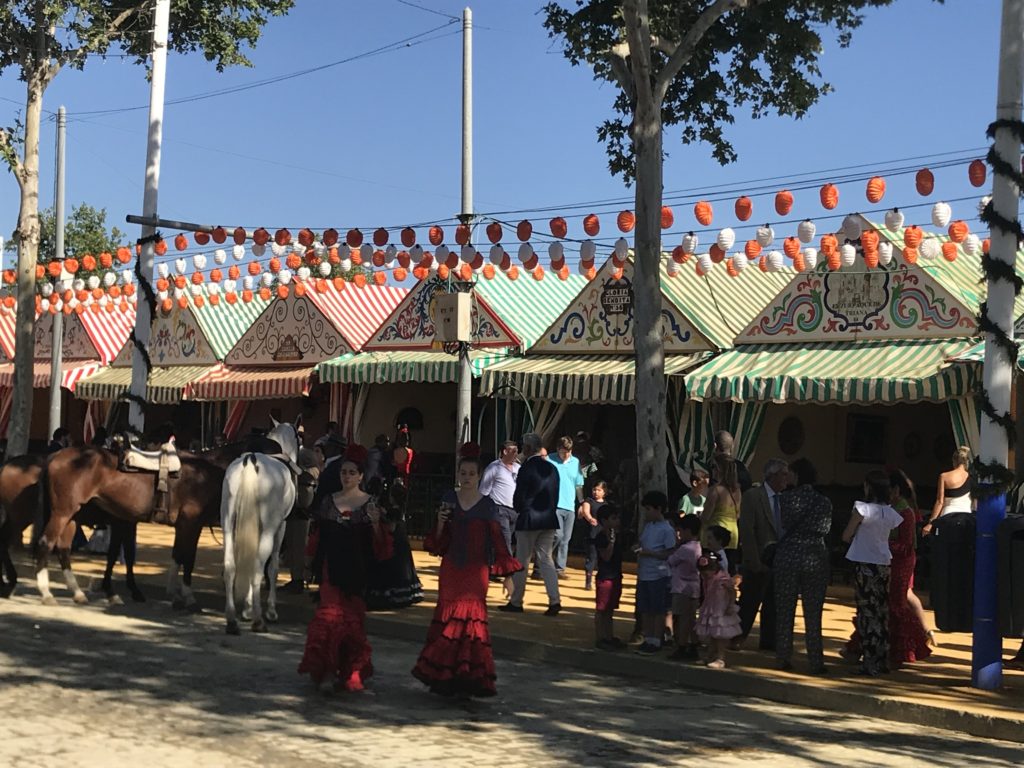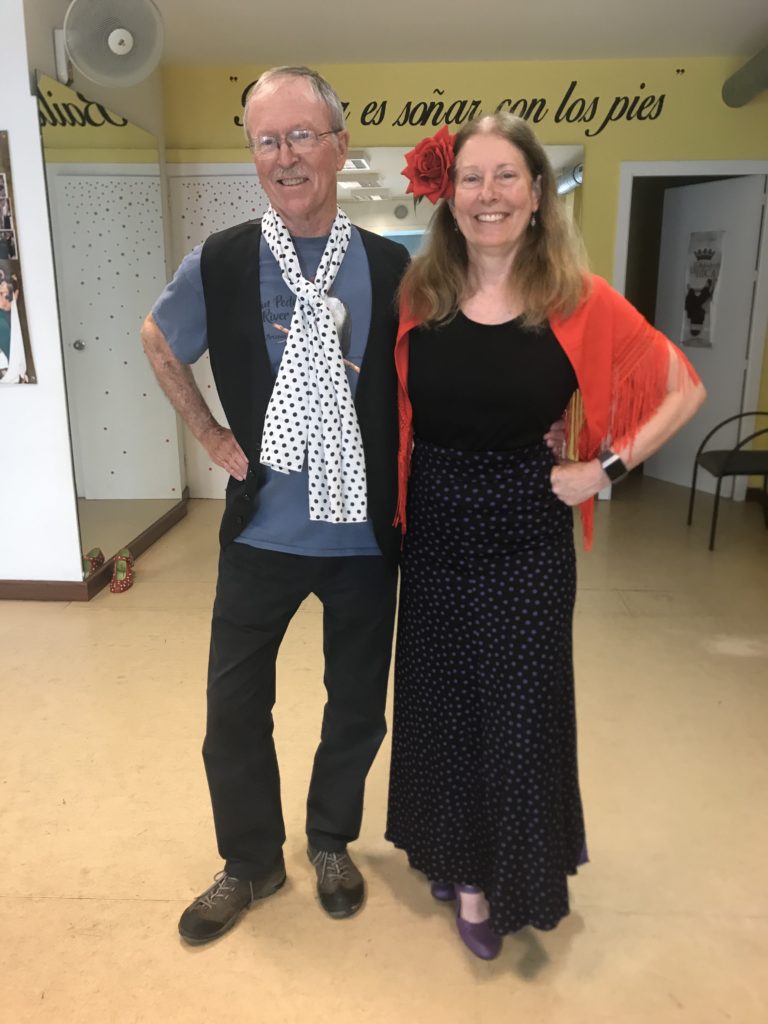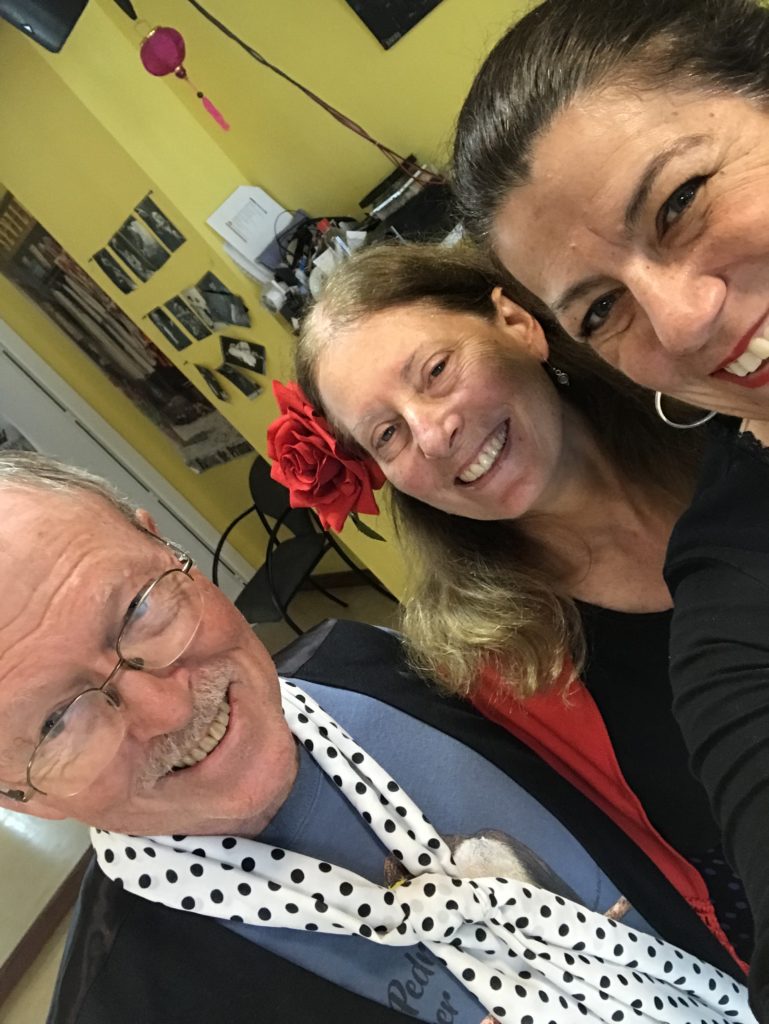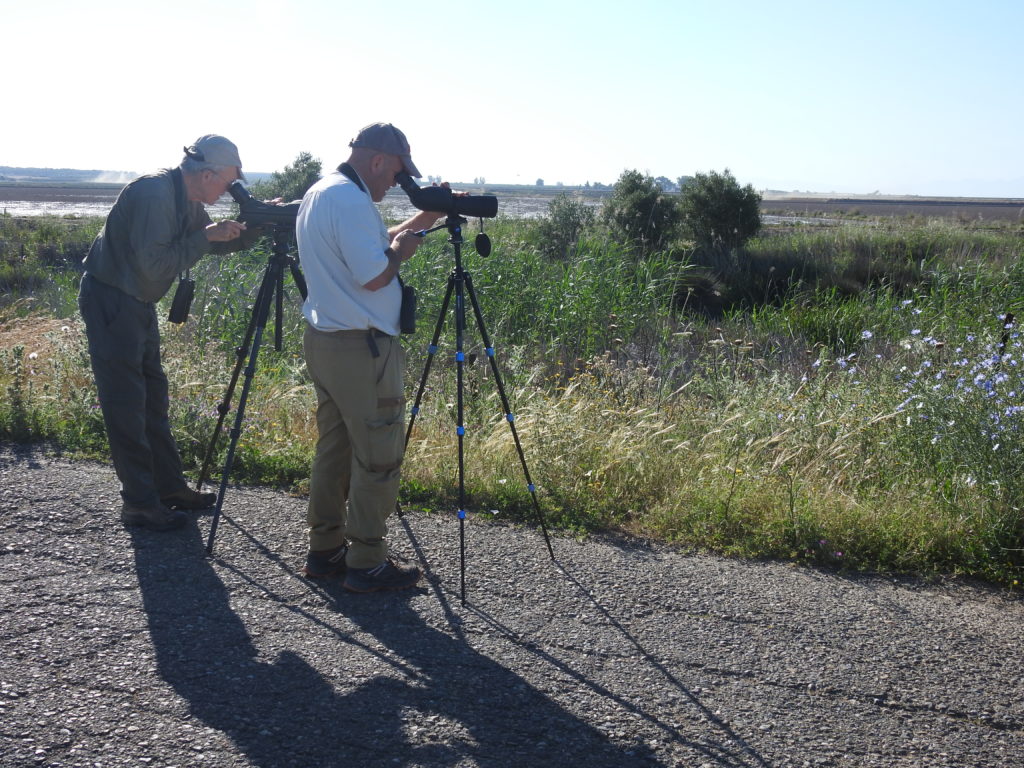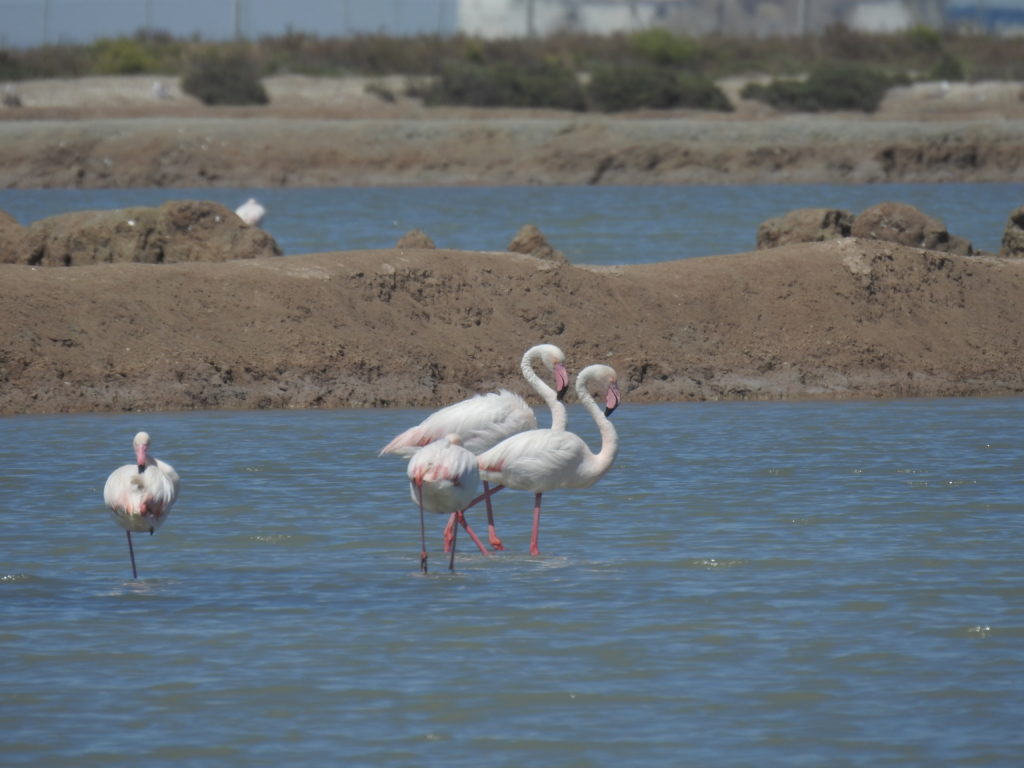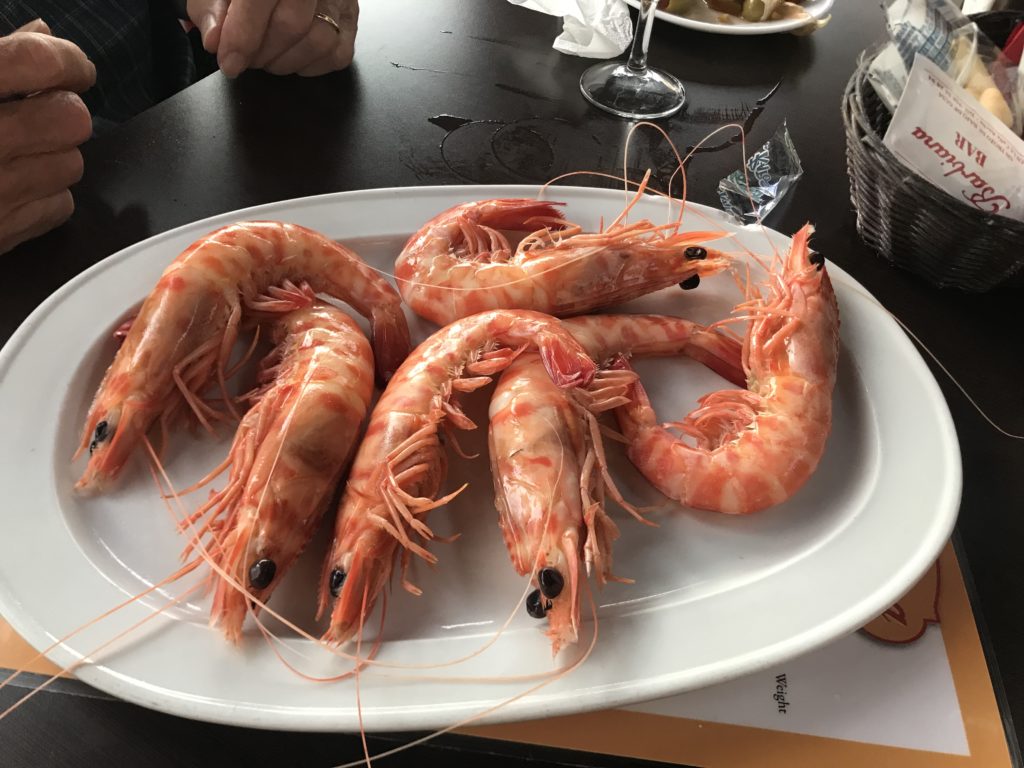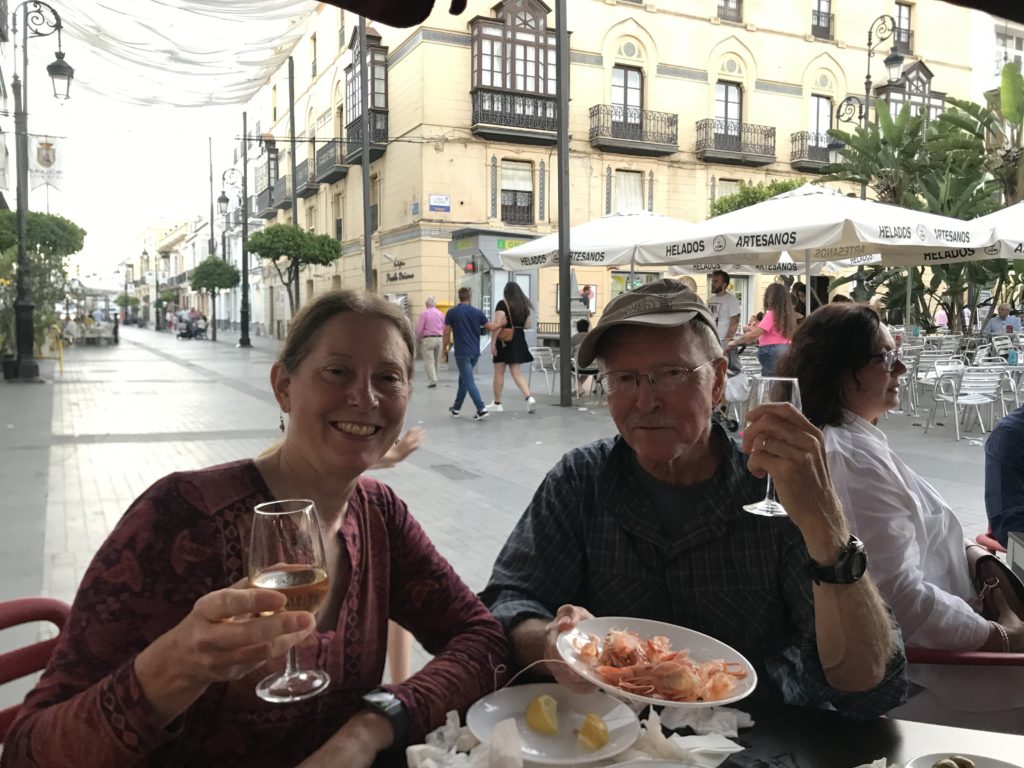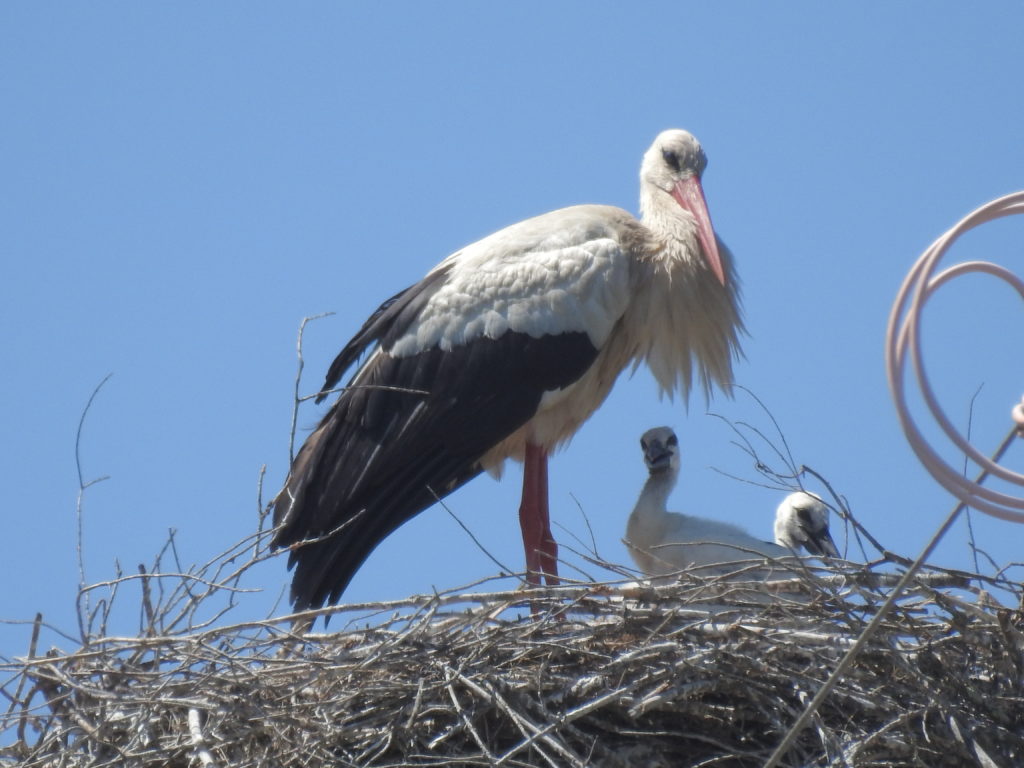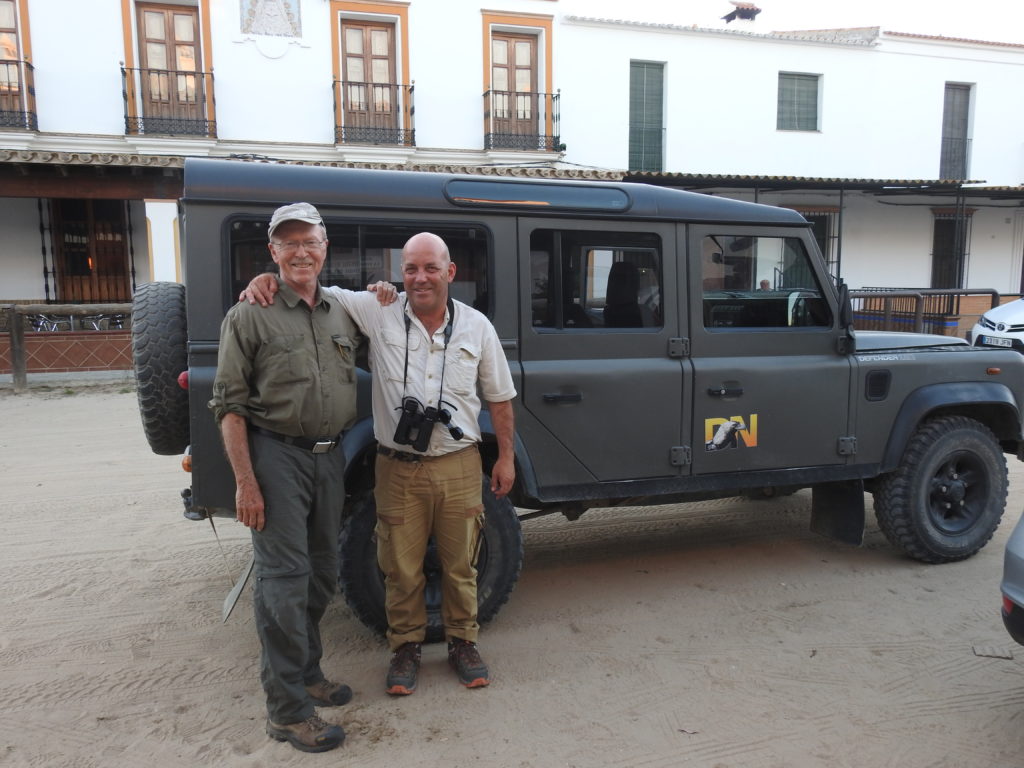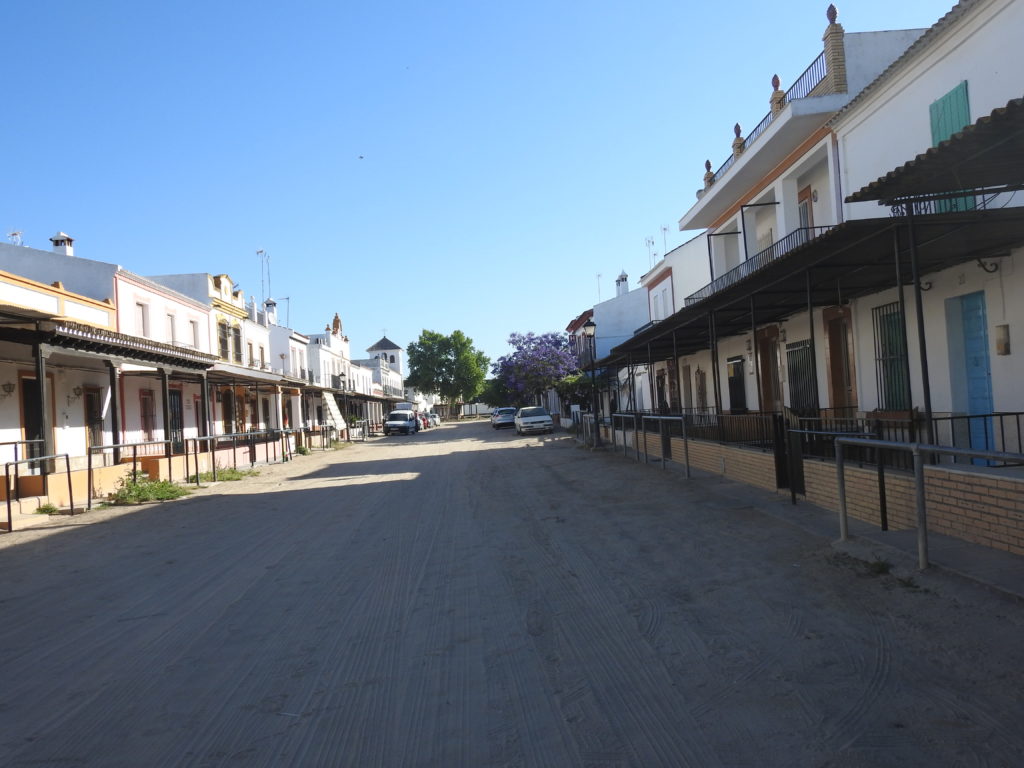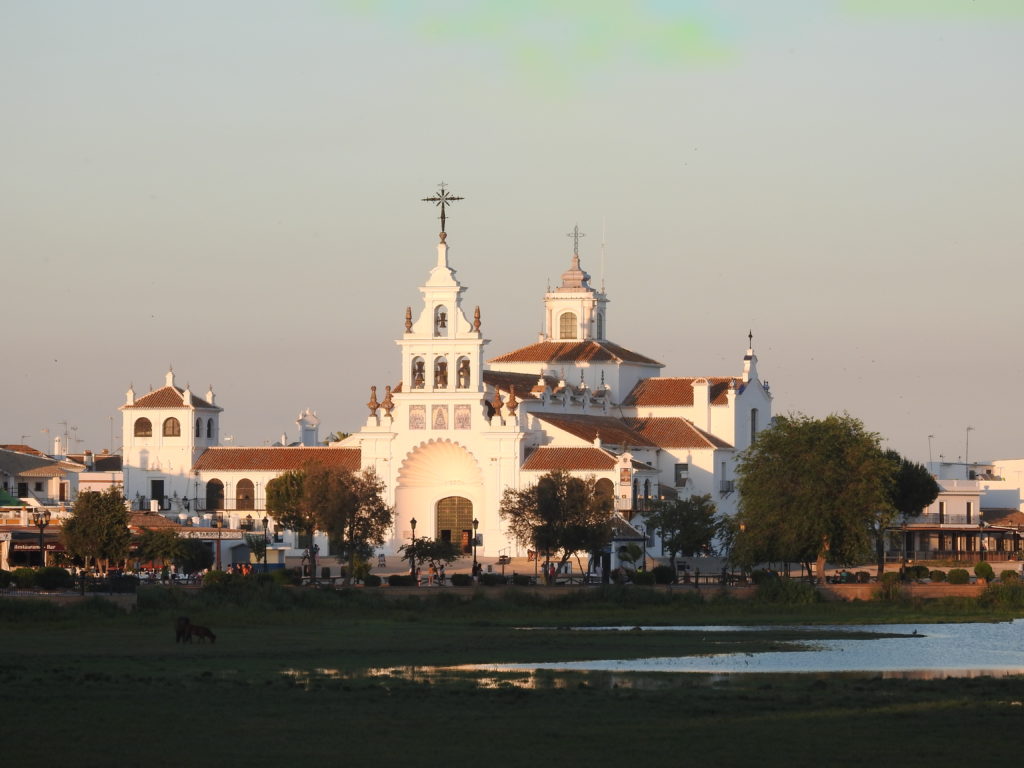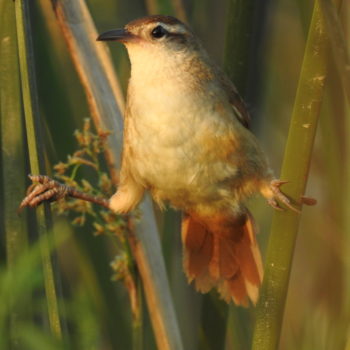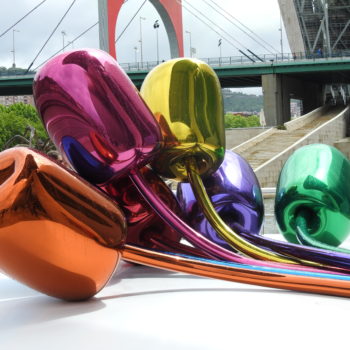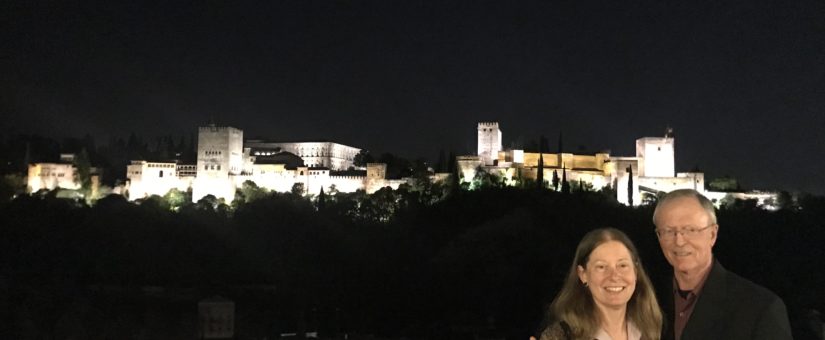
Spain in Spring
- On March 2, 2020
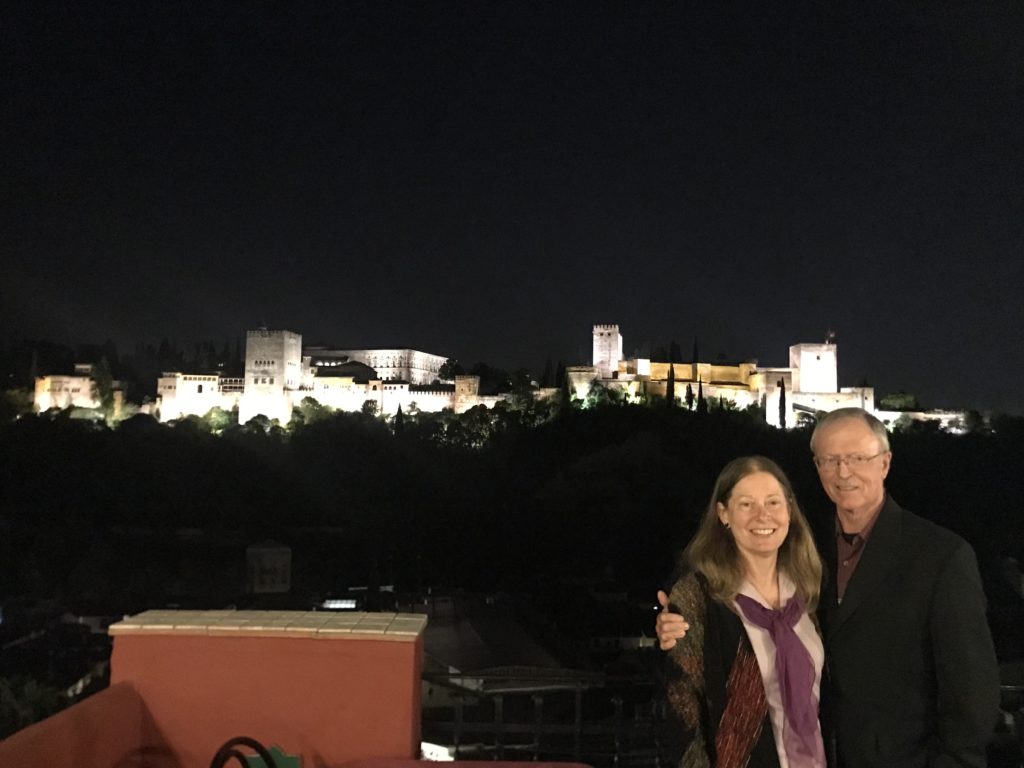
We had planned to visit Spain in 2018, but delayed the trip after Karen’s parents passed away. We packed a lot into this trip — places Karen visited (with her mom, sister and nephew) in 2014, birding areas, diverse cities and unique islands. Here are the highlights.
Our first stop was in Granada. The Alhambra had been the main reason Karen’s mom wanted to do the trip in 2014, and Karen wanted to show it to Terry. We had a lovely room with terrace next to the Alhambra and spent several days exploring the Alhambra, Generalife and surroundings.
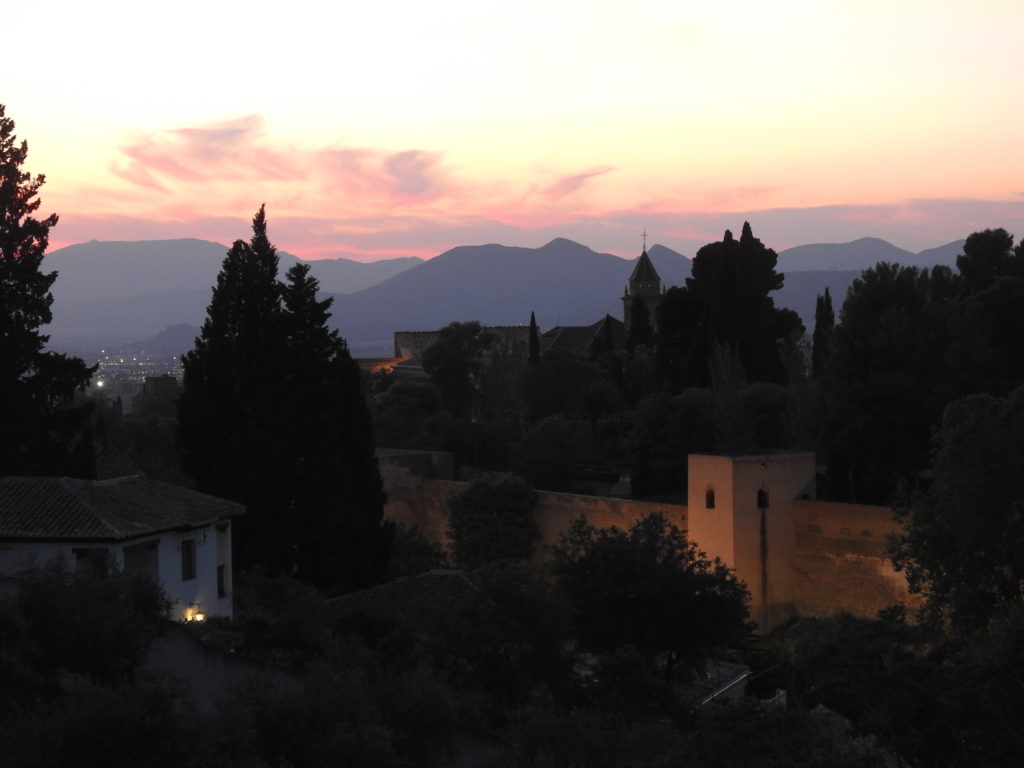
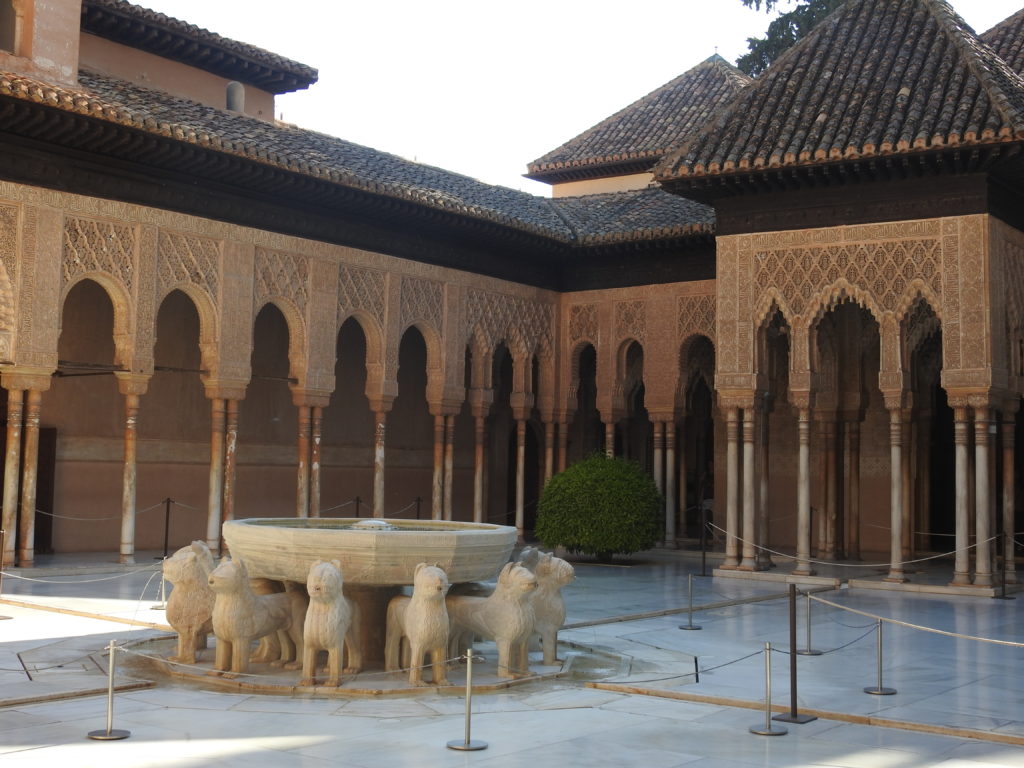
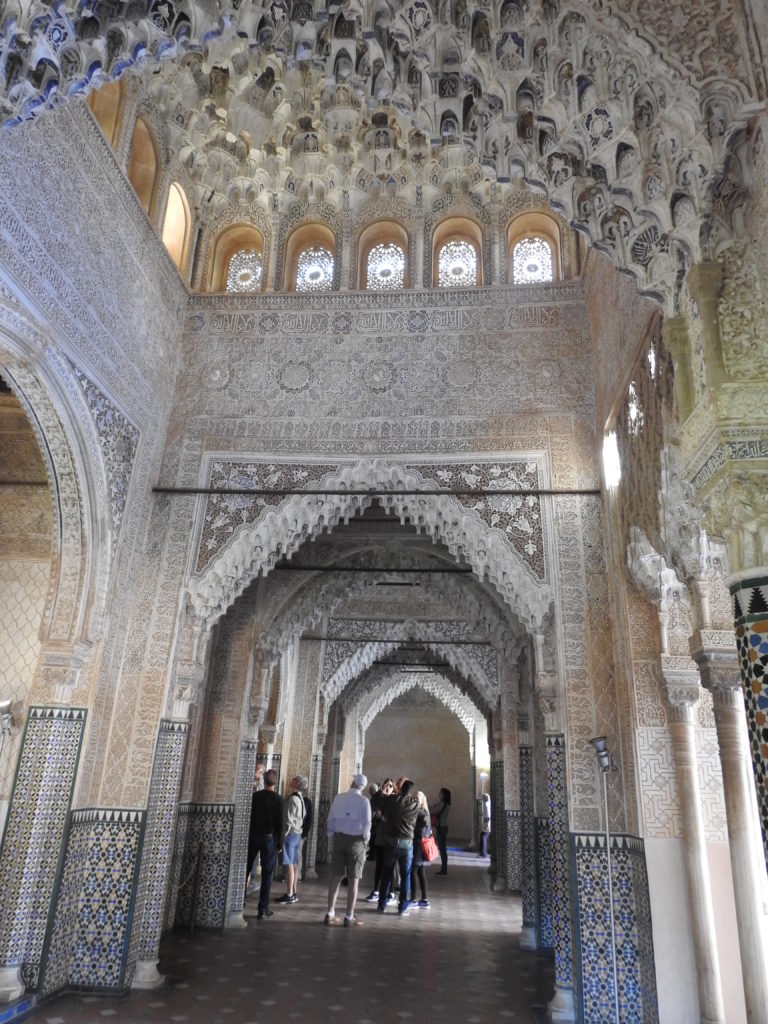
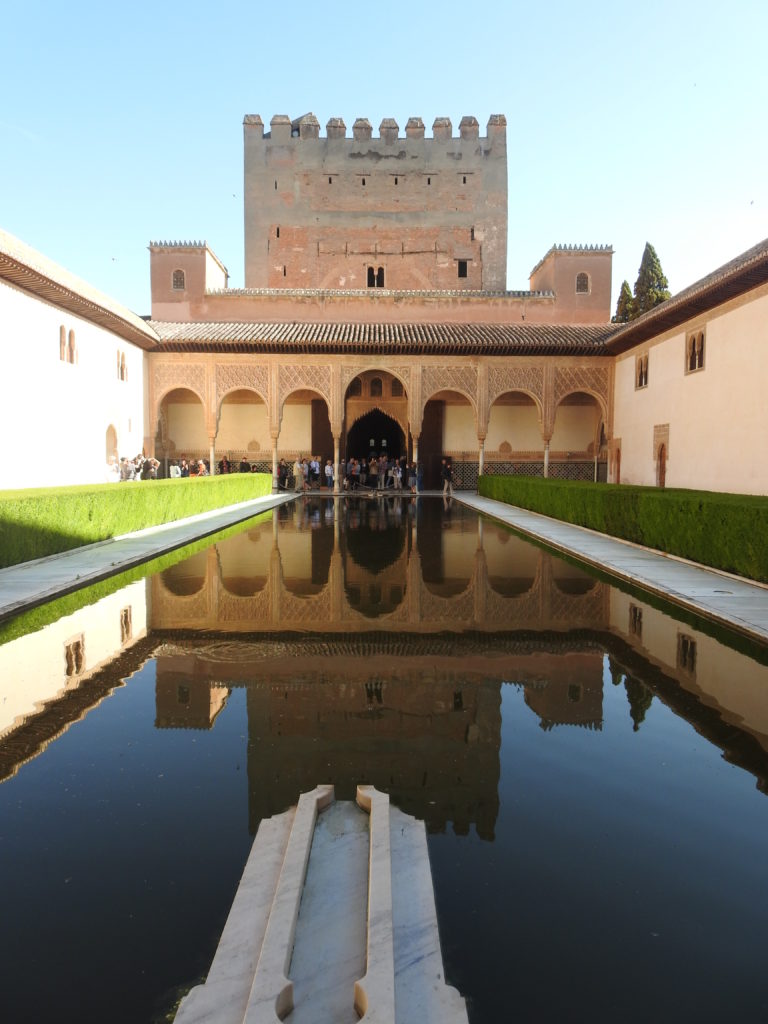
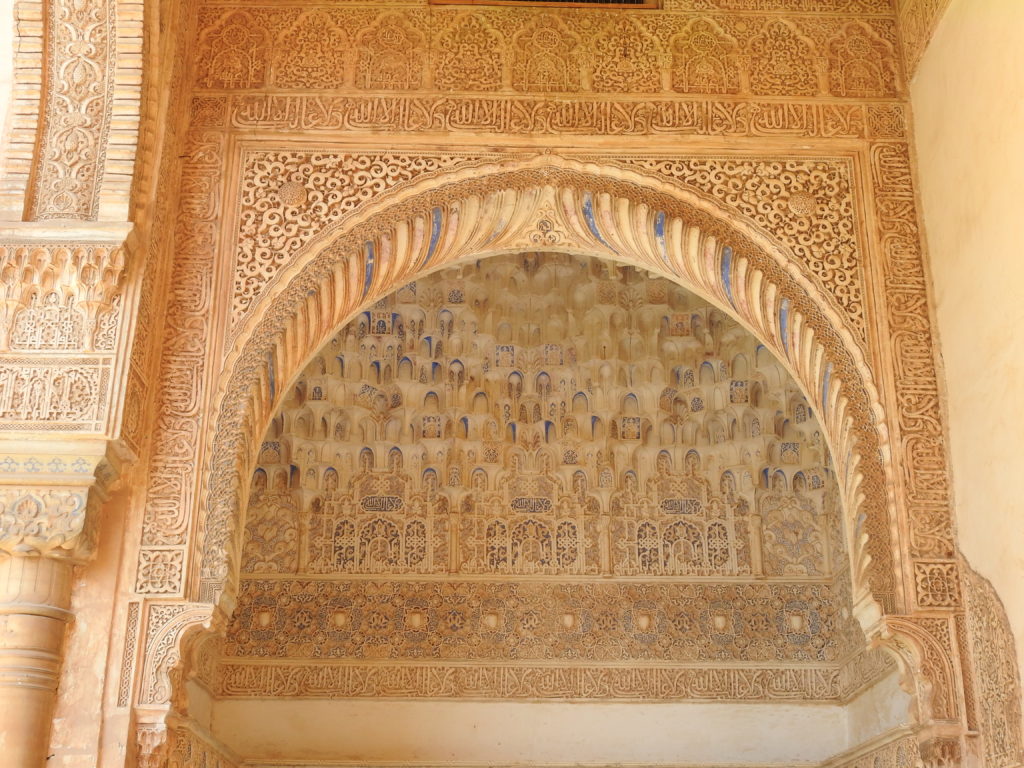
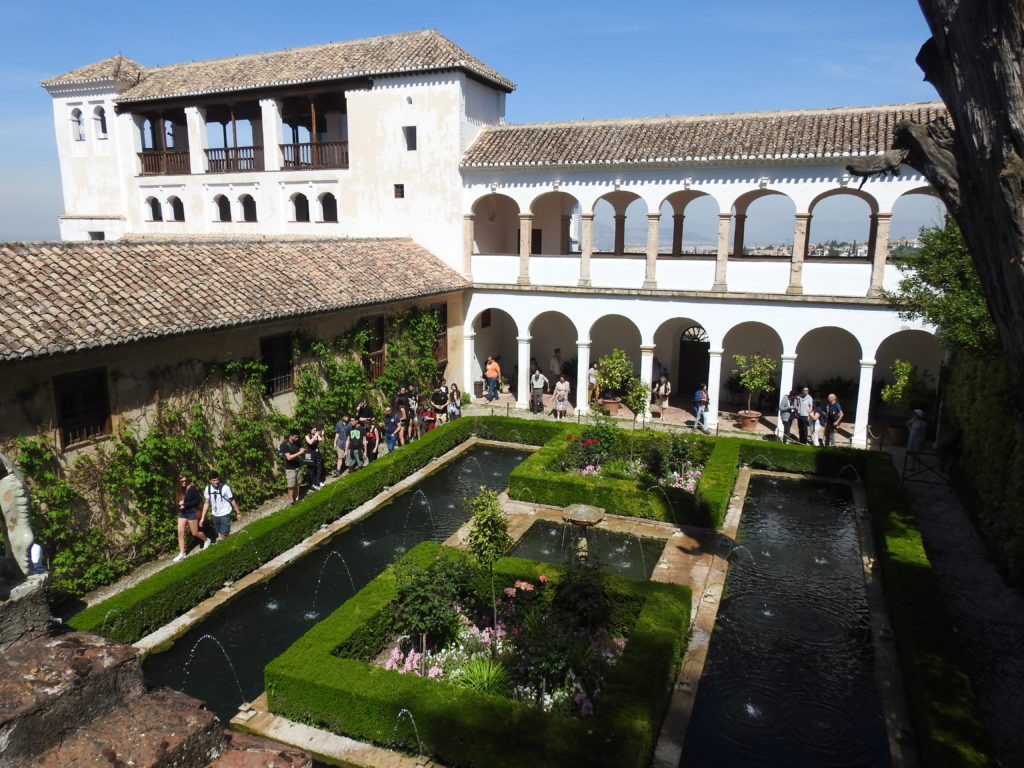

The Alhambra at night, from our restaurant Carmen del Aixa
We got a rental car when we left Granada, and drove from there to Seville (the other city we visited from the 2014 trip). It turned out we were there during the Feria de Abril, Seville’s biggest annual celebration and a tradition since 1846. It was quite an experience!
It was fun to show Terry the Seville Cathedral, which is (among other things) Christopher Columbus’ final resting place, and the Giralda Tower, a remnant of the mosque that previously occupied the site.
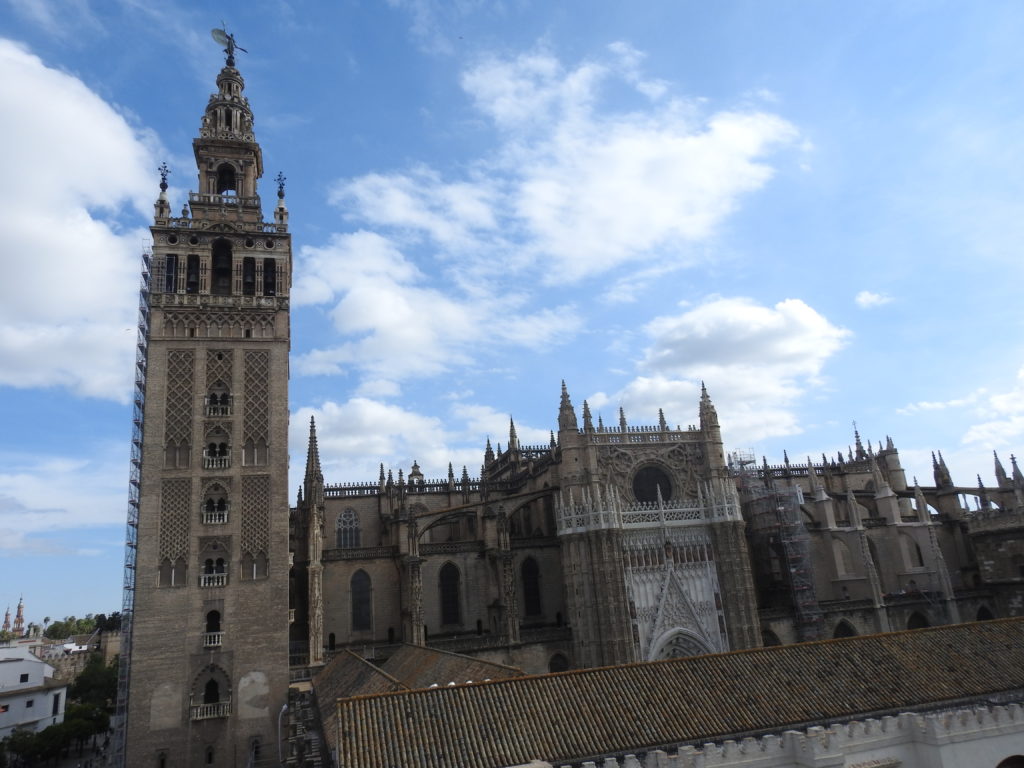
The Giralda and part of the Cathedral 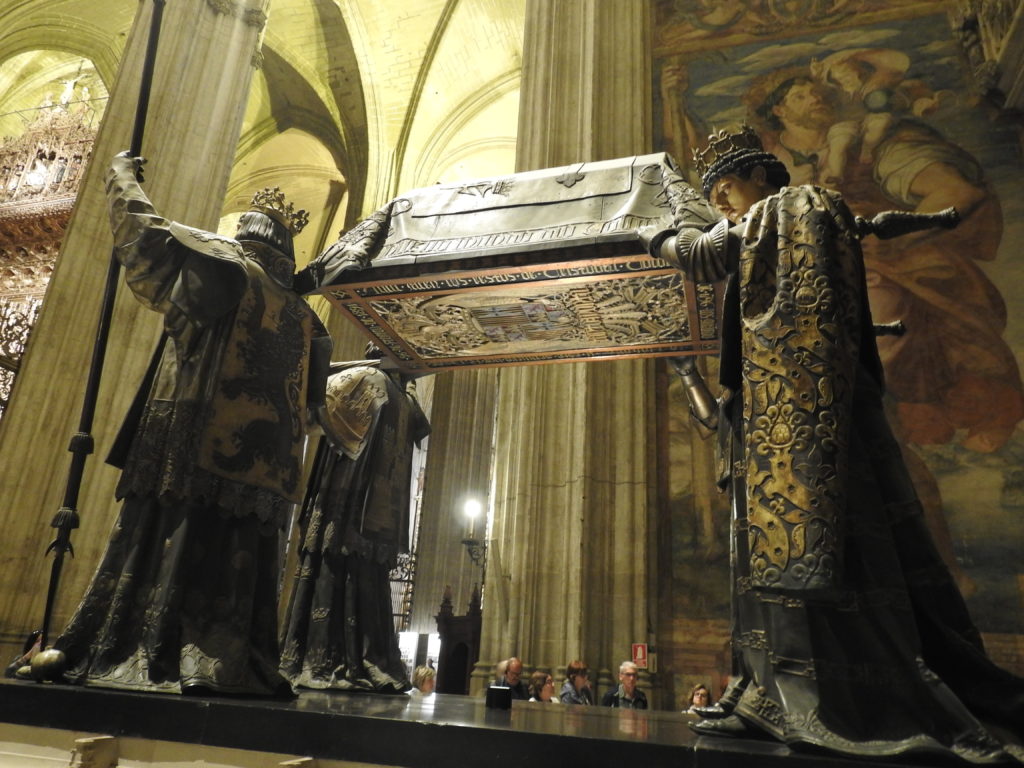
Christopher Columbus 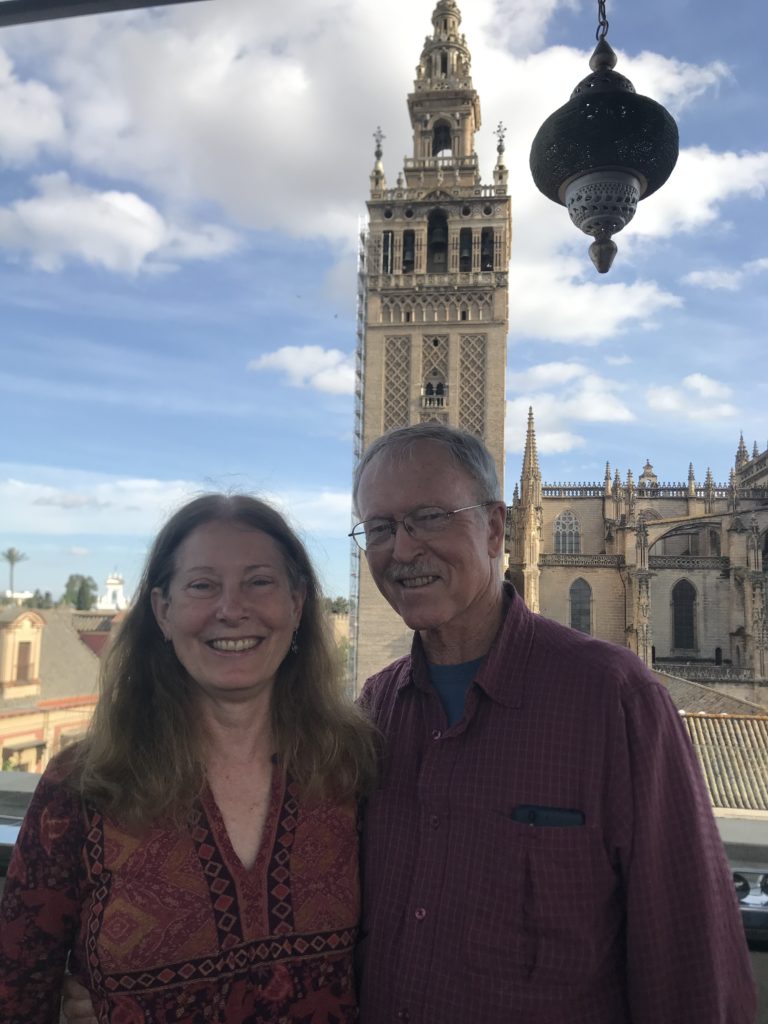
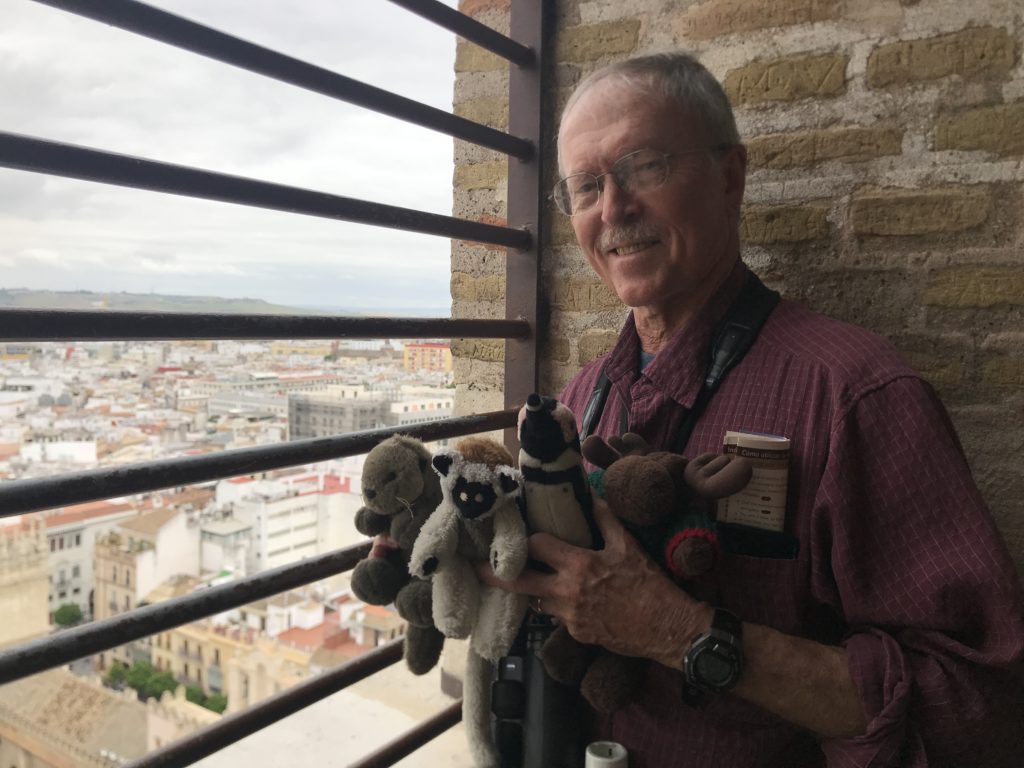
Our traveling pals — Ollie, Amanda, Maggie and Joe — with Terry at the top of the Giralda. 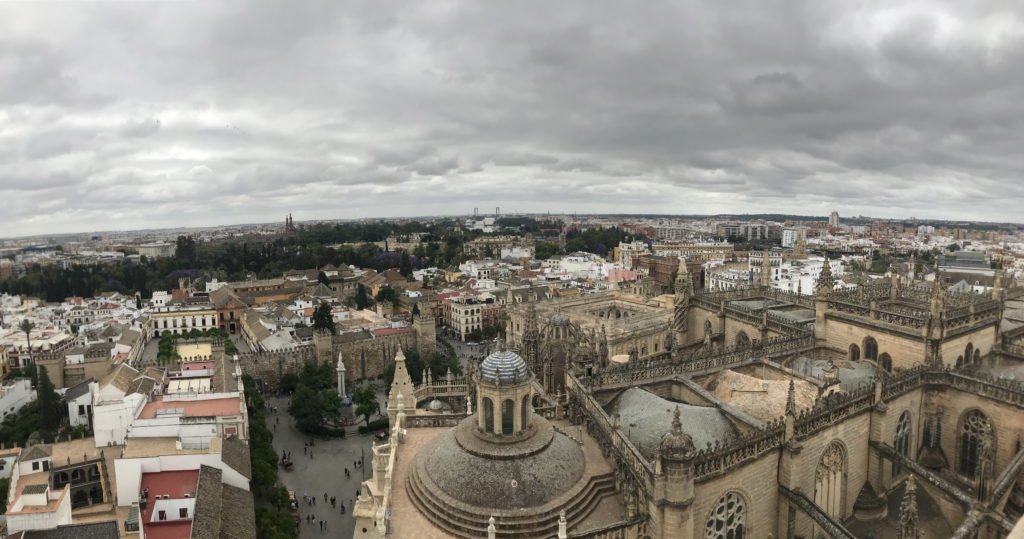
Cathedral and city from the top of the Giralda
We also enjoyed flamenco in Seville — both a performance at the Museo del Baile Flamenco and a lesson from Eva in the San Telmo neighborhood.
After Seville, we embarked on a series of outdoor adventures. The first was still in Andalucia Province. Donana National Park includes the wetlands where the Guadalquivir River runs out to the Atlantic Ocean. It’s the largest wetland remaining in Europe. Our guide Sergio Gonzalez Asian took us to some key areas in the park and to the towns of Sanlucar de Barrameda and El Rocio. El Rocio (population 1,400) seemed deserted and its sand streets were quiet. But on the Sunday before Pentecost, it’s the destination of about a million people — and their horses! — for the largest pilgrimage in Spain, held since 1653, to honor the Virgin of El Rocio, a 13th century statue in the church here.
We left Andalucia and headed north to Extremadura, the province where many Spanish conquistadores were born. It has a reputation of being hot, dry, barren and challenging. But we found it to be a beautiful place of grasslands, small villages and mountain canyons. We stayed in Torrejon del Rubio at the Casa Babel Monfrague. Its owner, Jose Arias, also guided us for two days.
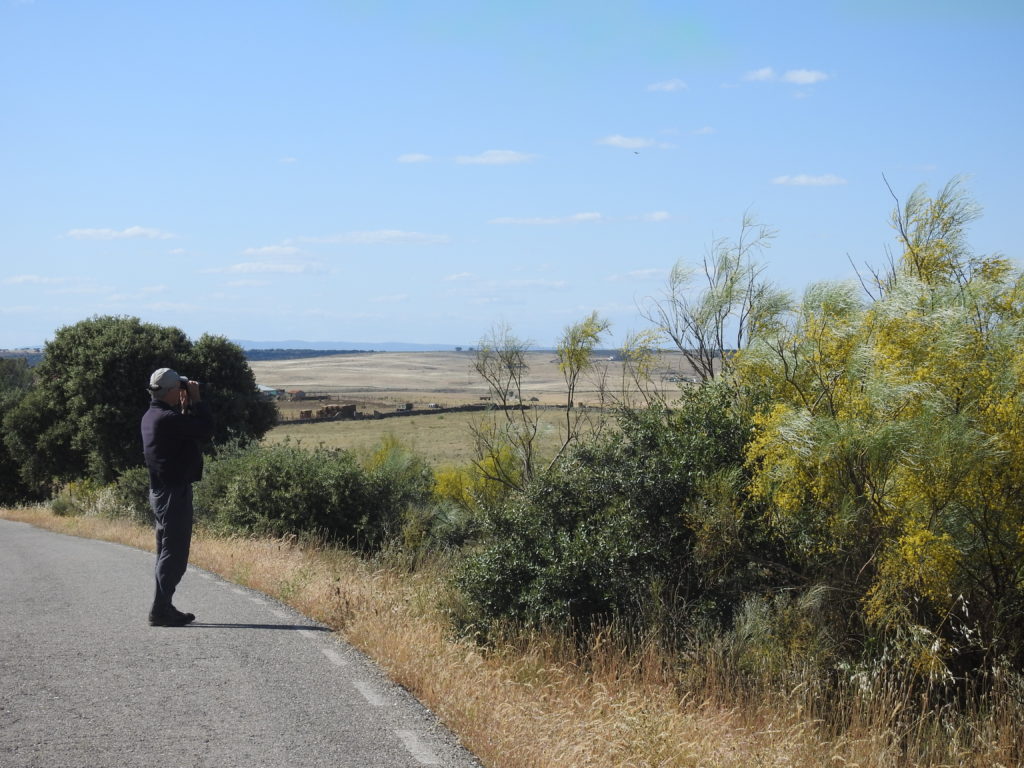
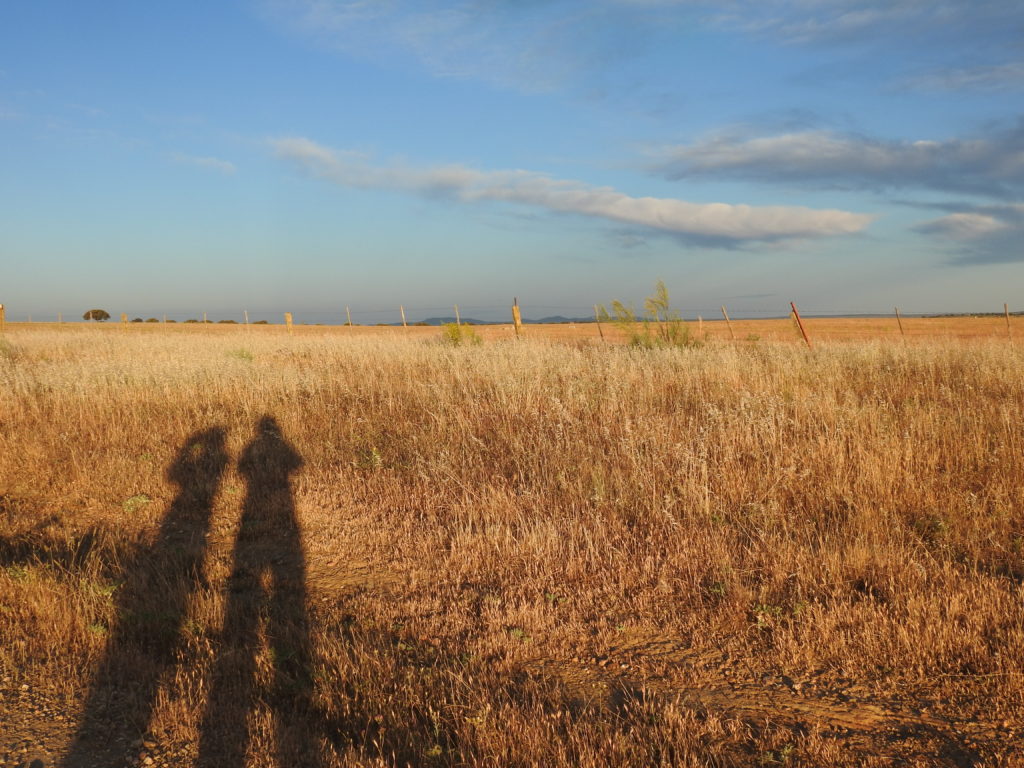
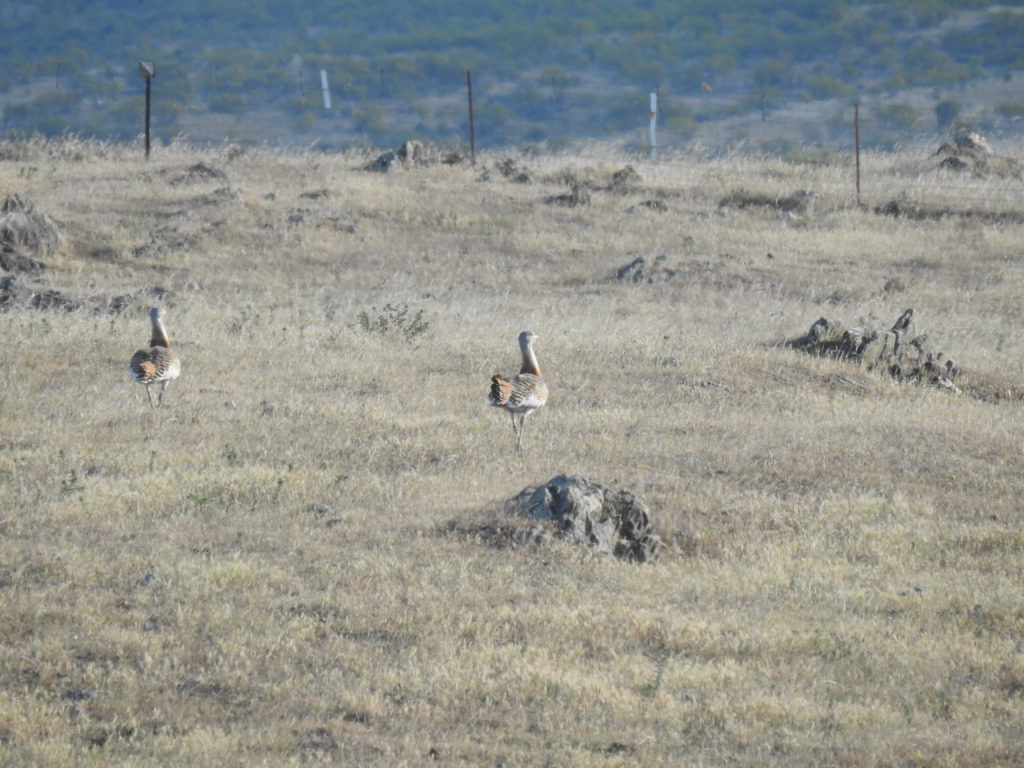
Great bustards 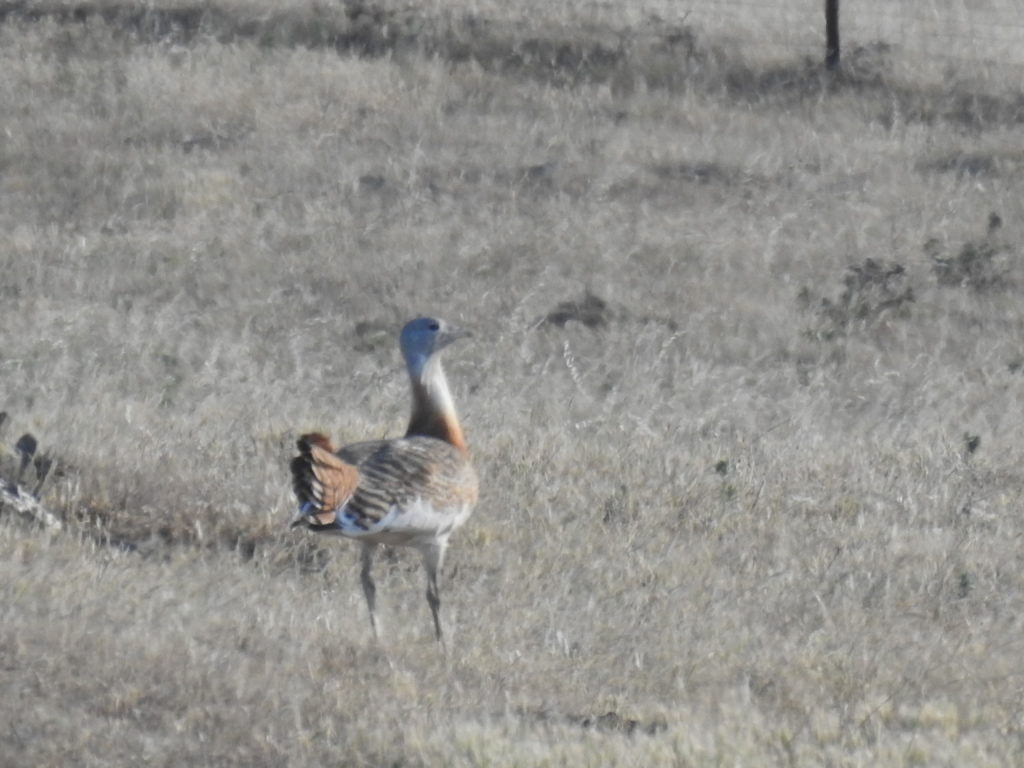
A really great Great Bustard 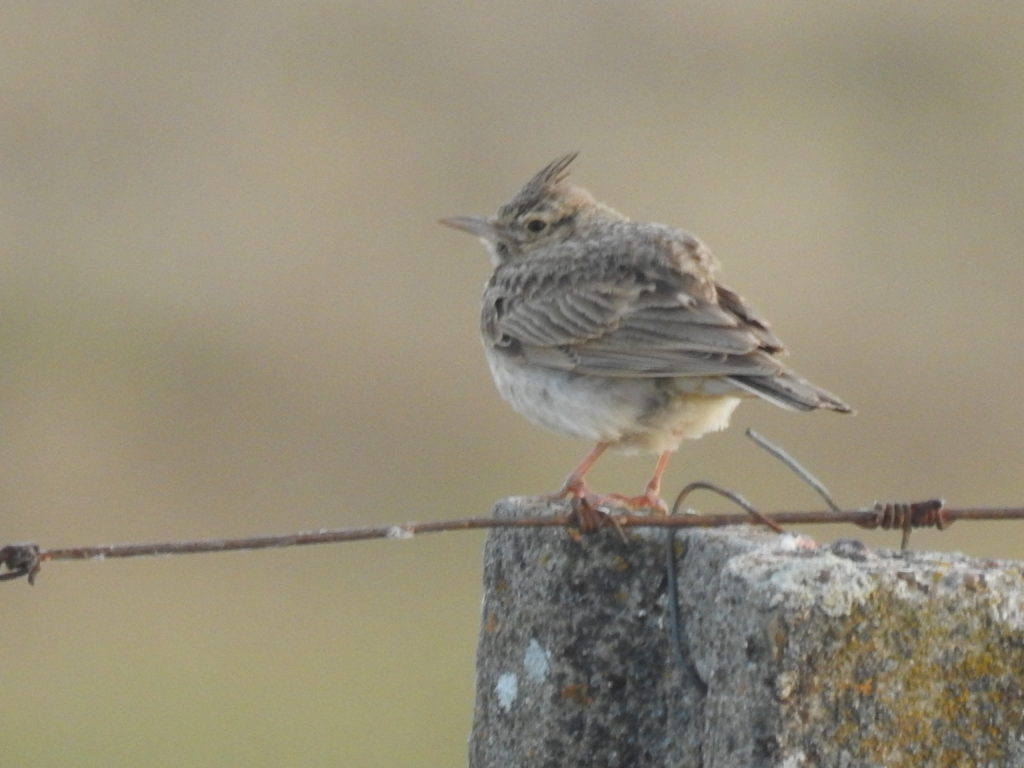
Crested lark 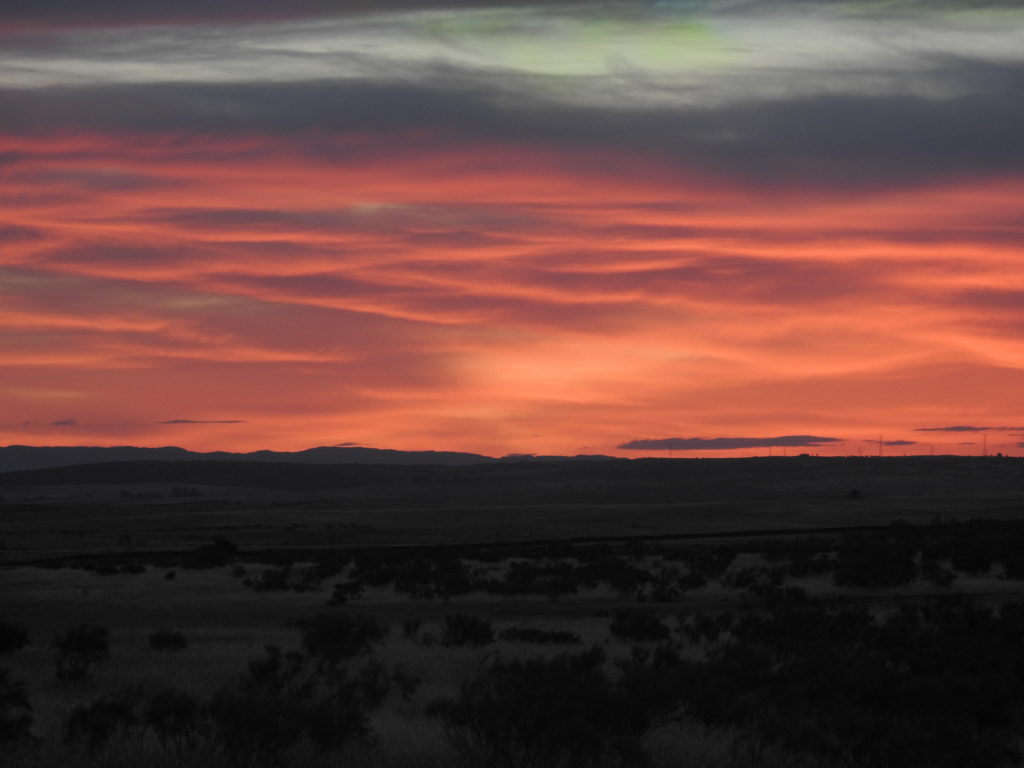
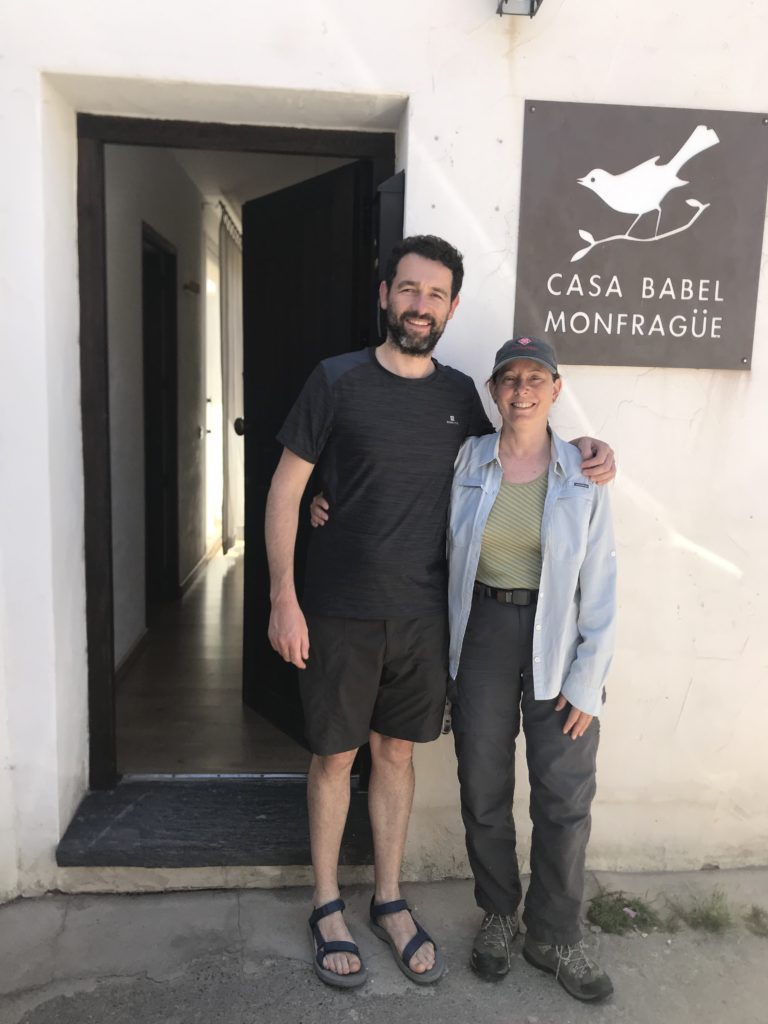
Jose Arias with Karen 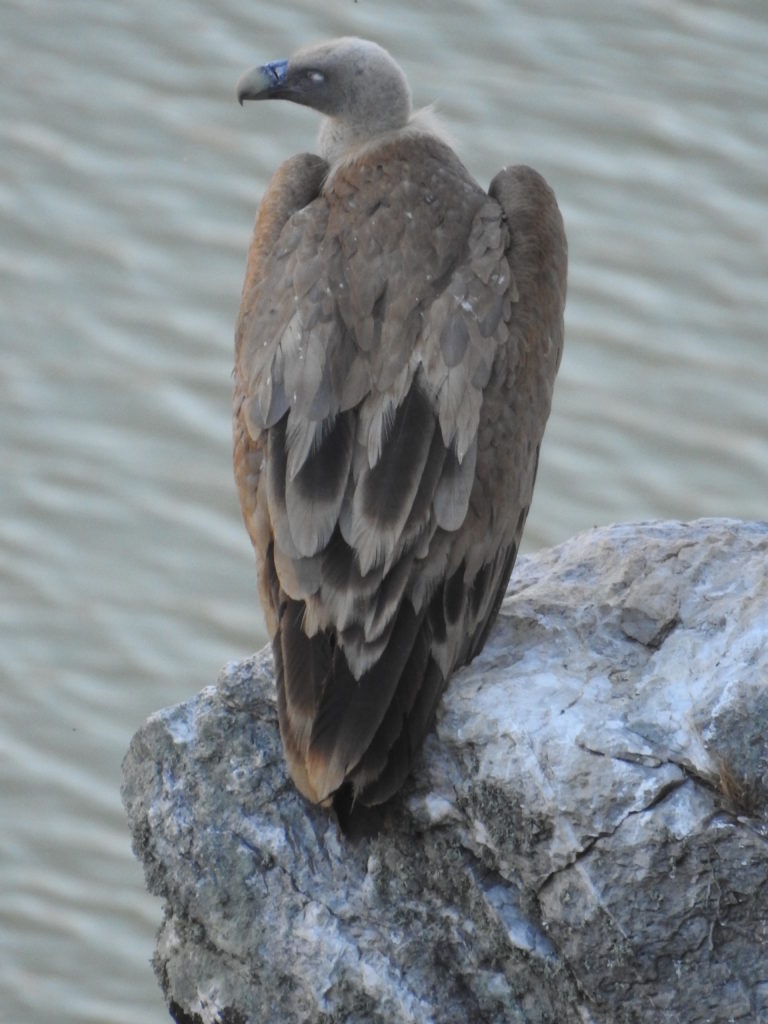
Eurasian Griffon 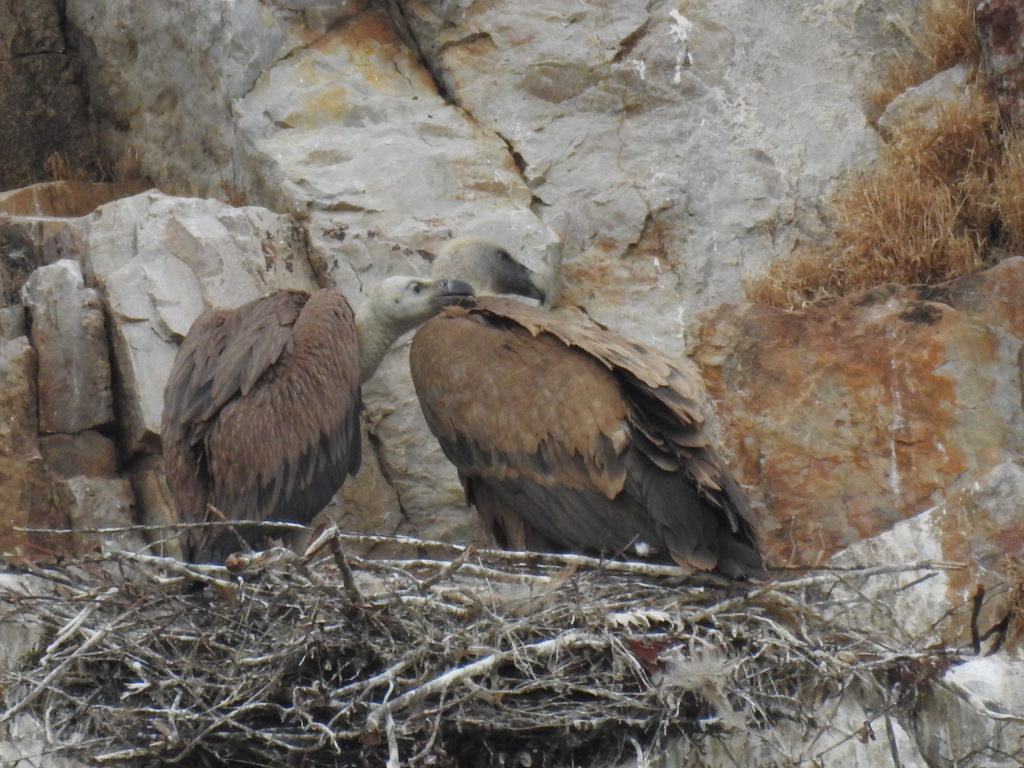
A young Griffon and its mother 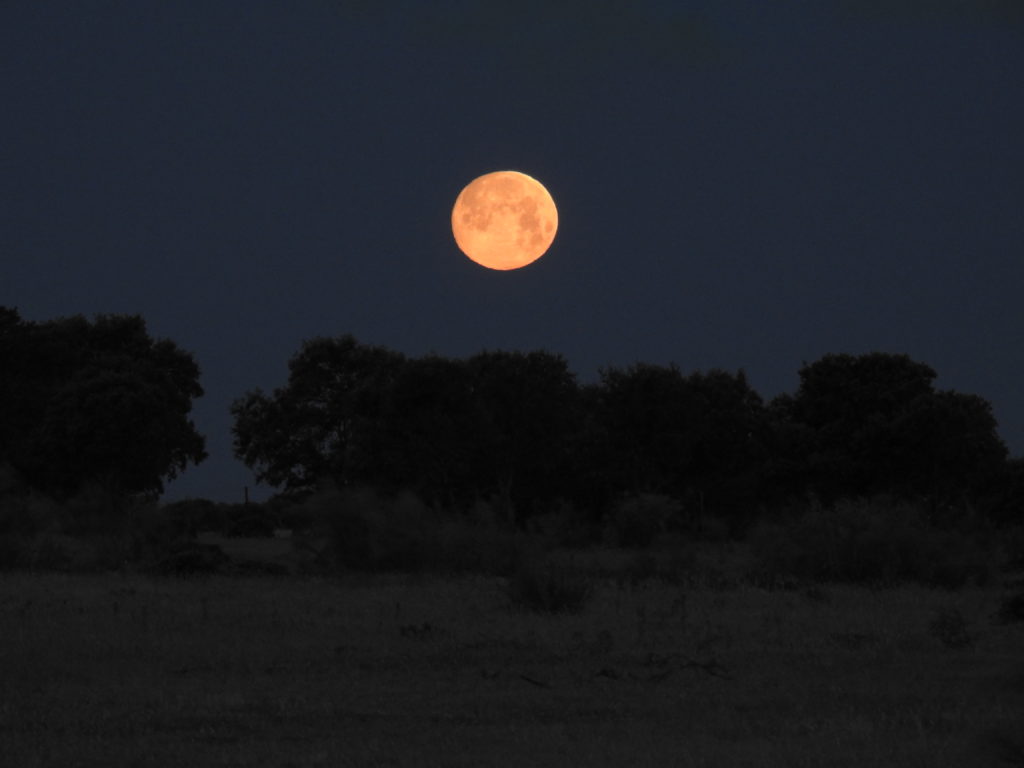
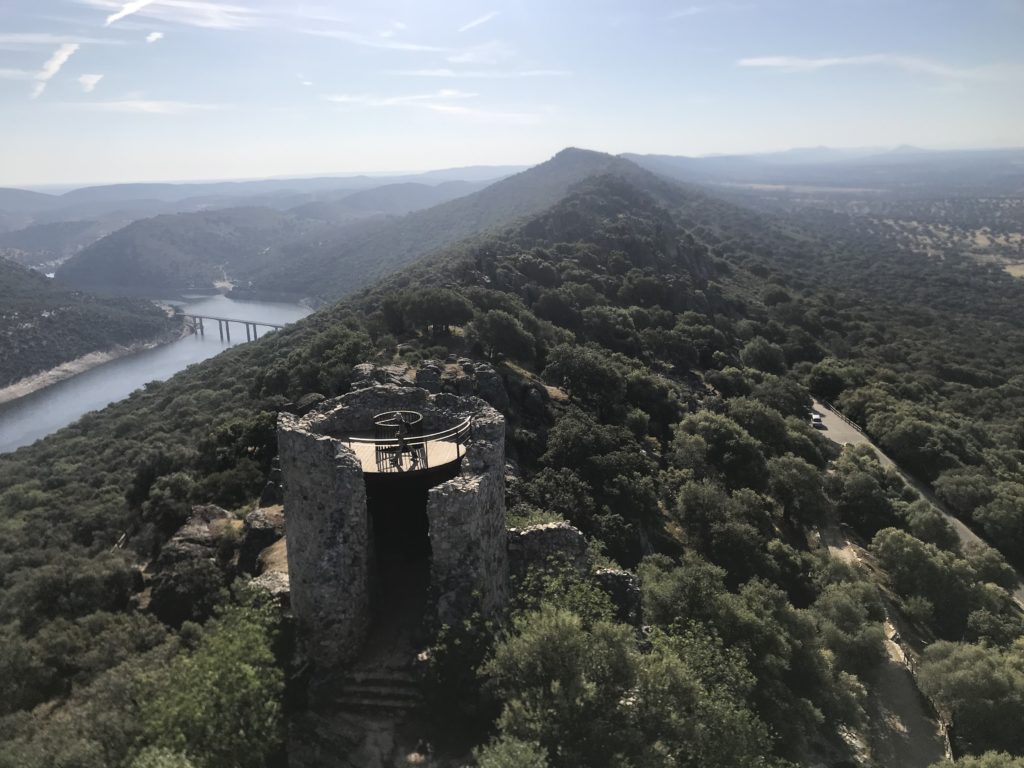
Views in Monfrague National Park 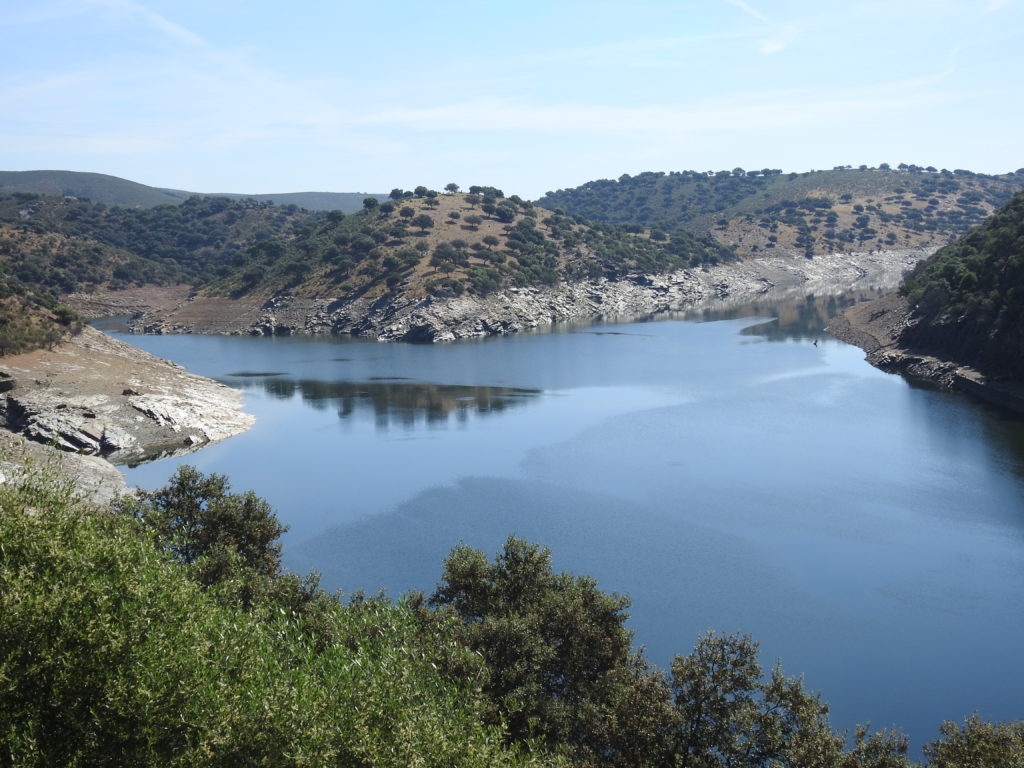
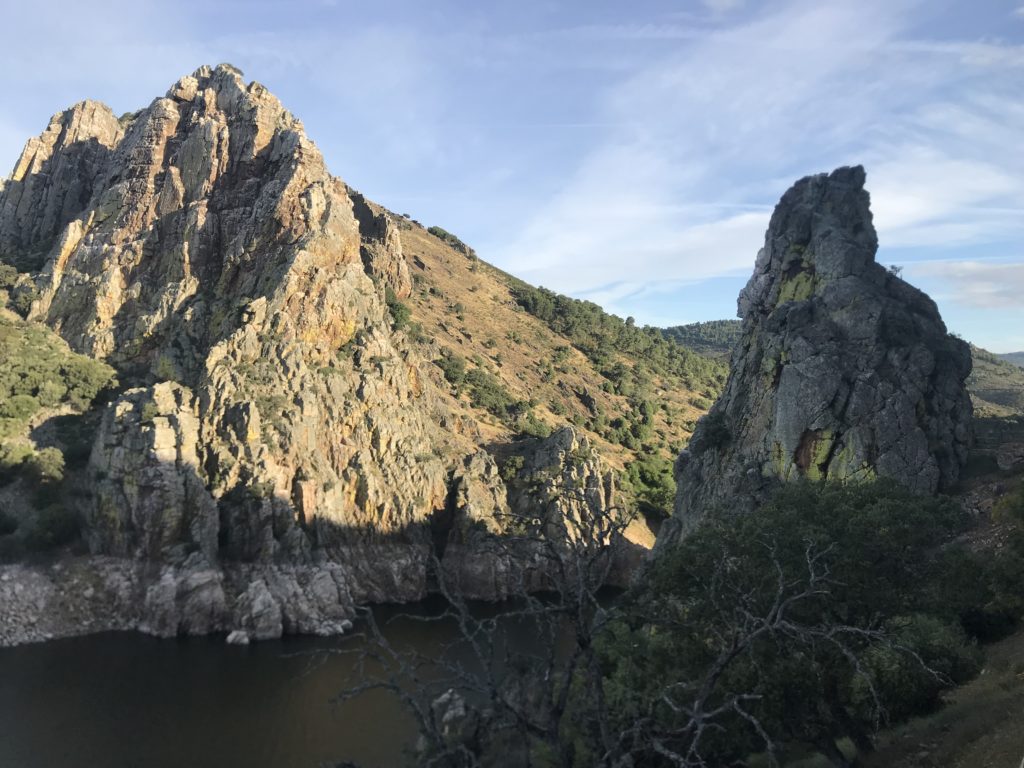
The gypsy’s leap in Monfrague
Leaving the grasslands, we headed inland and uphill to the Gredos, one of Spain’s spectacular mountain ranges. Paradors are historic or unusual buildings operated as lodges by the Spanish government. We stayed in the Parador de Gredos, which was the original parador, converted from a royal hunting lodge by King Alfonso XIII in 1928. We enjoyed our stay here, as well as hiking and birding in the natural park.
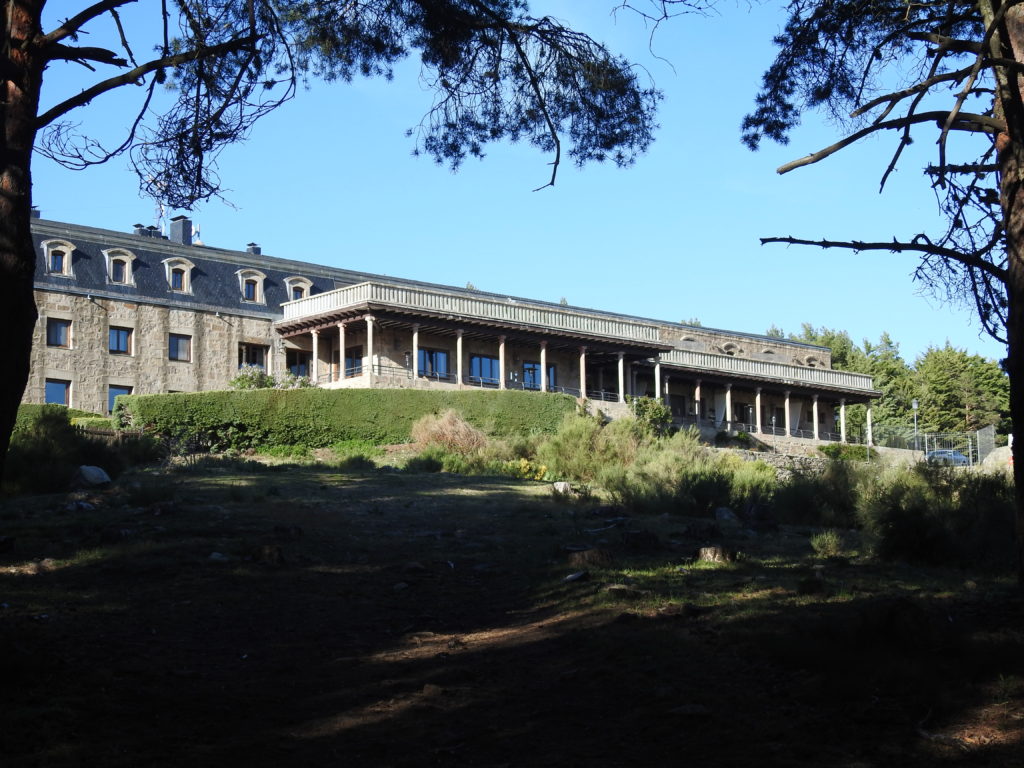
Parador de Gredos 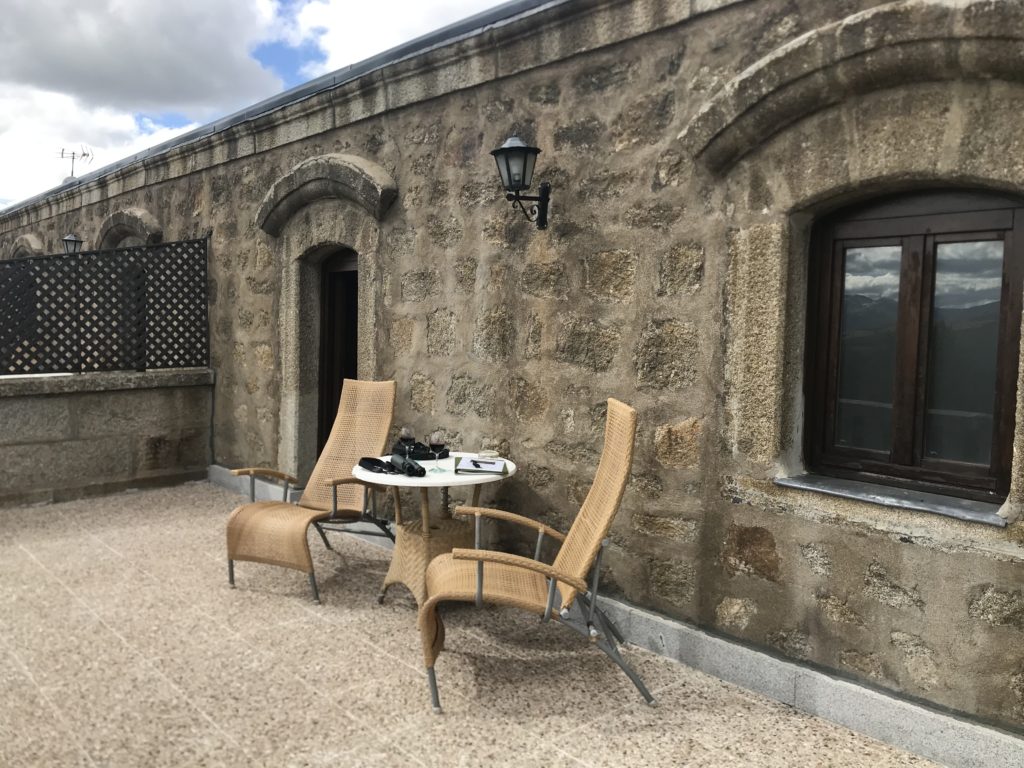
Our balcony 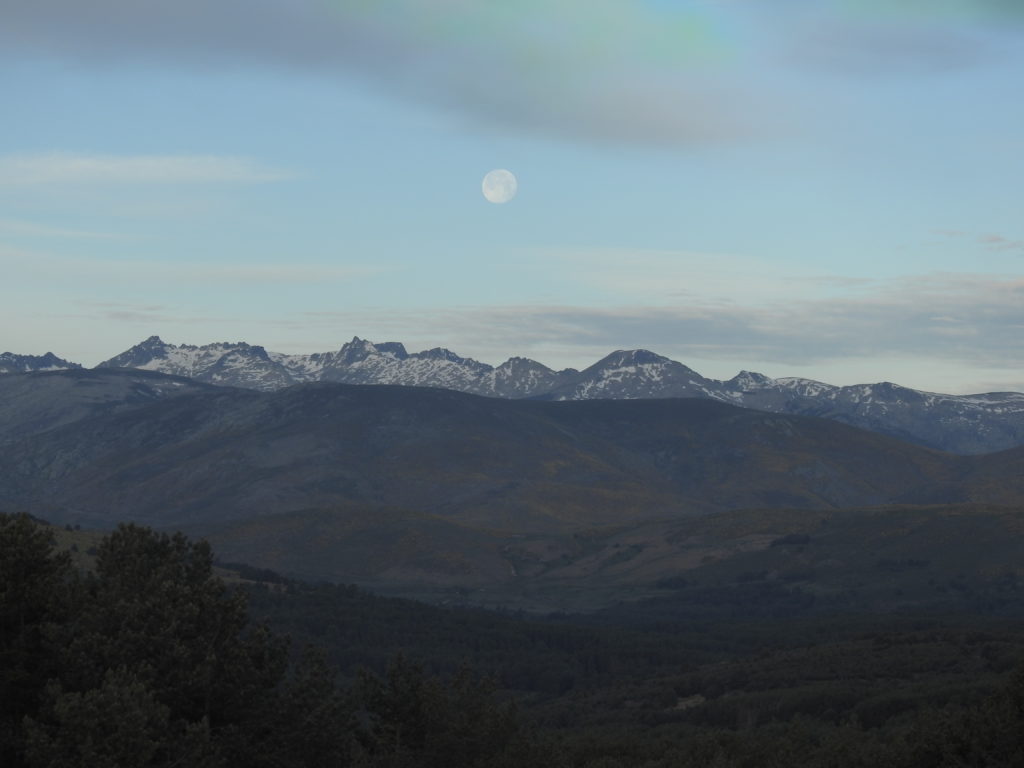
Full moon from our balcony 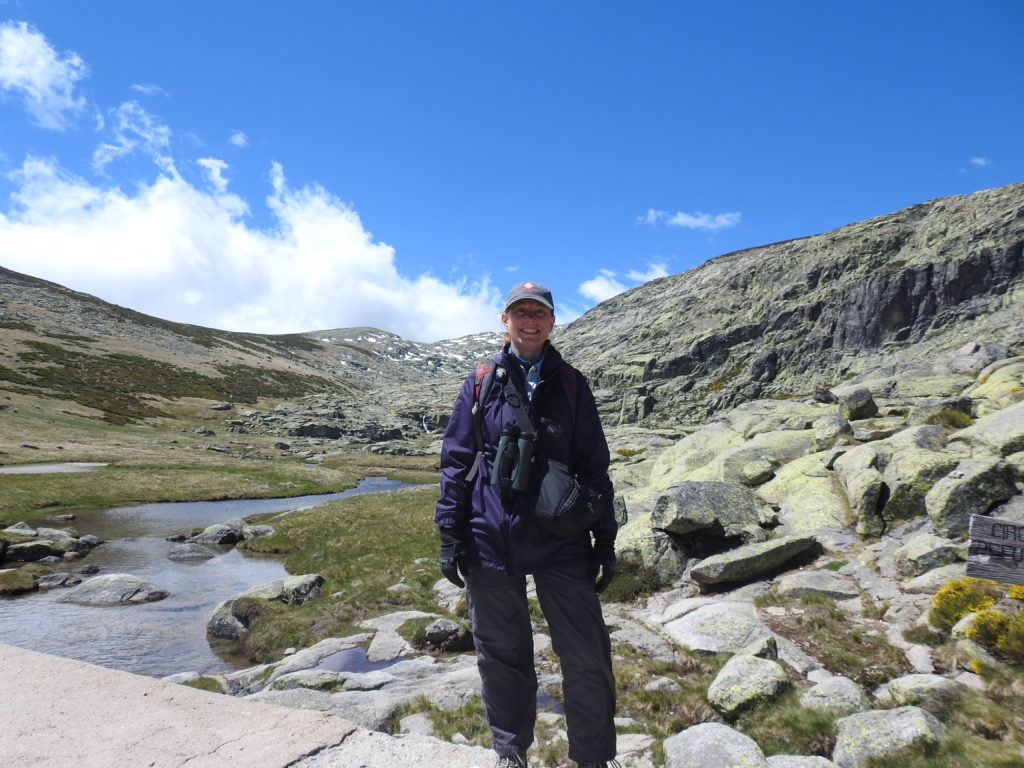
Hiking at La Plataforma de Gredos
Our next stop took us even higher into the mountains. Picos de Europa National Park contains some of the highest mountains in Spain. We stayed in the Parador here too, in the little village of Fuente De’. We were looking for the Wallcreeper, a tiny and enigmatic bird that lives in the scree slopes at the highest elevations of the park. Our guide, Teresa Farino, took us up the teleferico and along trails into the snow. No wallcreeper! The next day, we went back to the same area and got a quick but beautiful look at it!
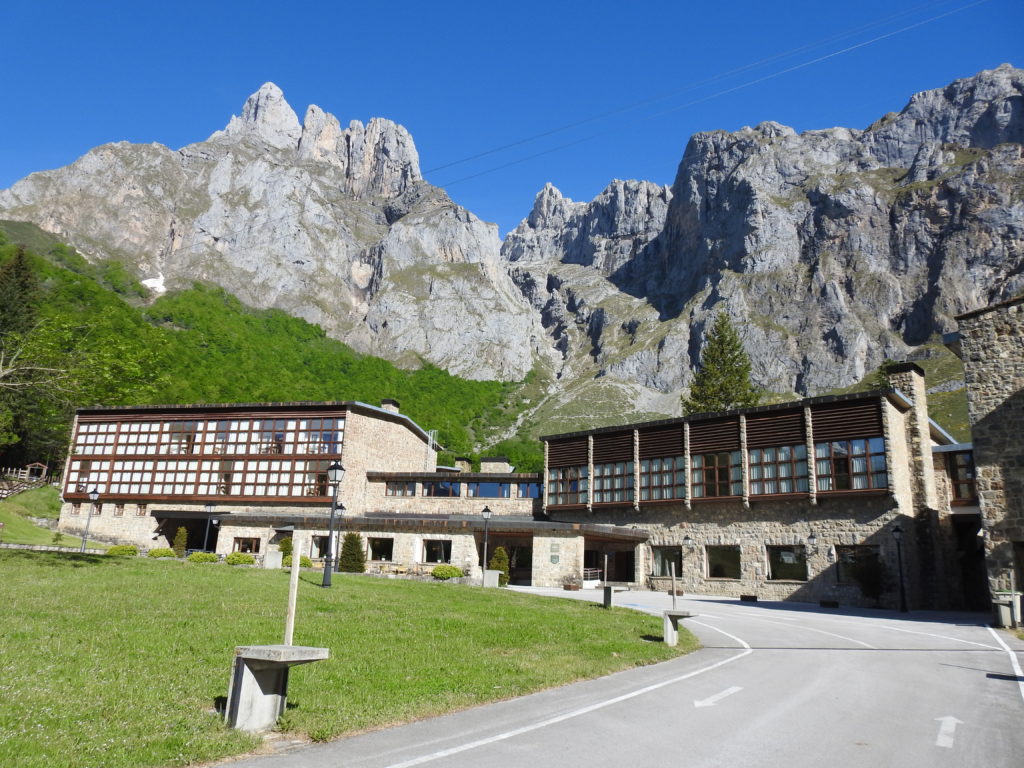
Parador de Fuente De’ 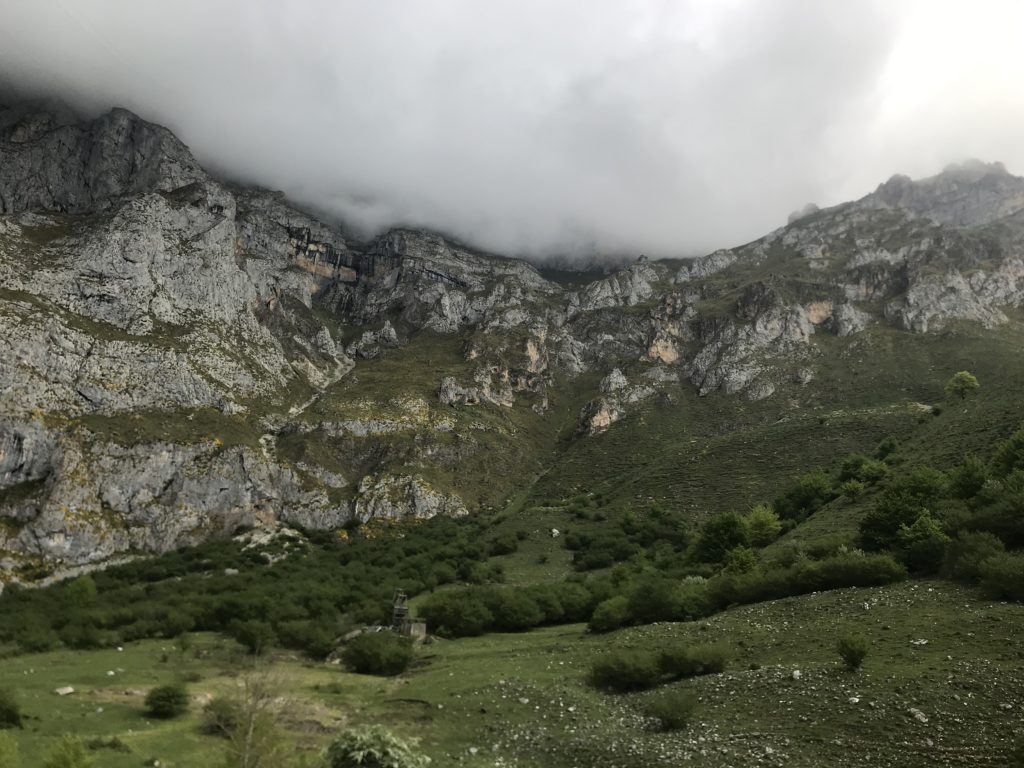
The view from our terrace 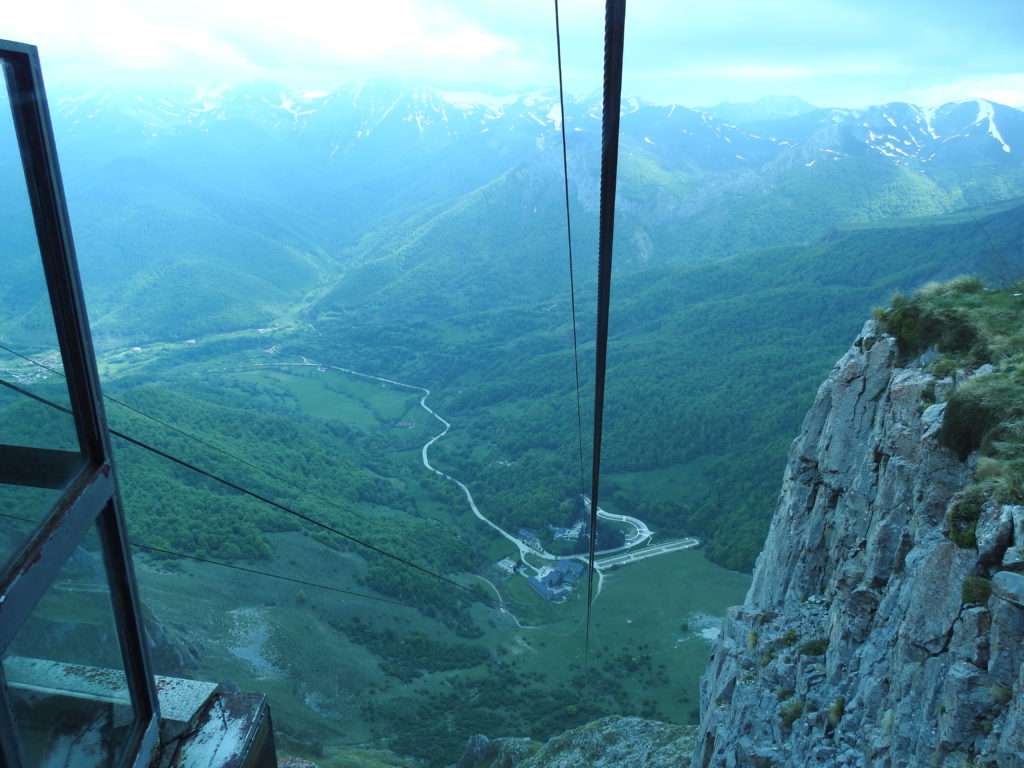
The Parador is at the bottom of this Teleferico cable! 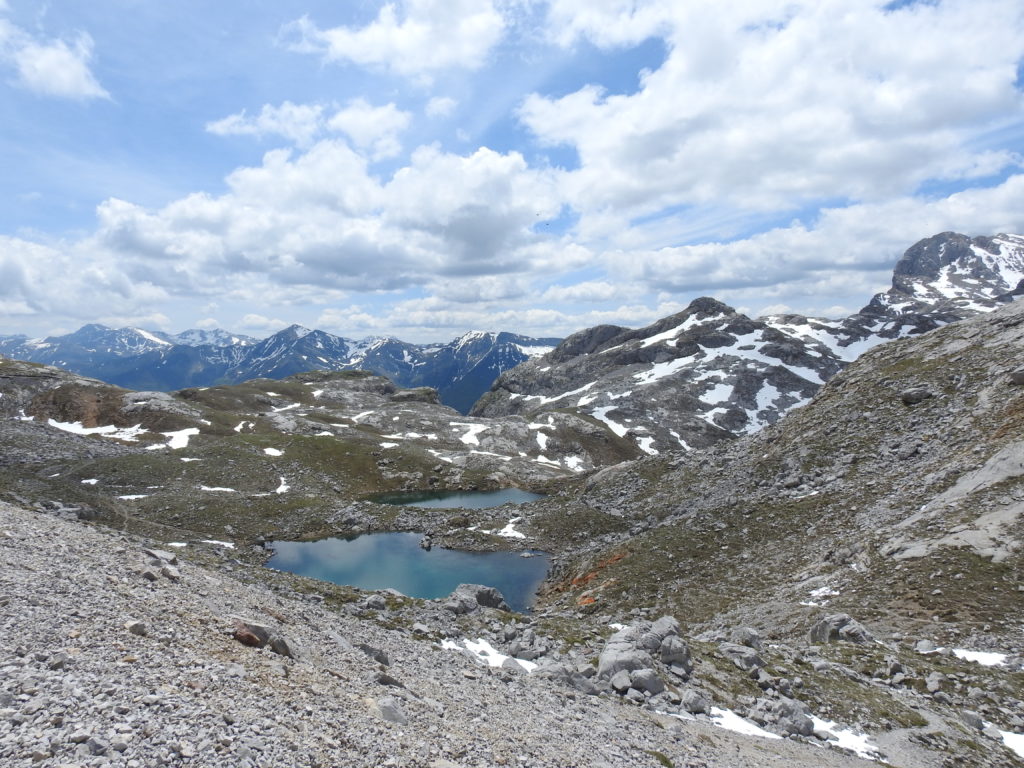
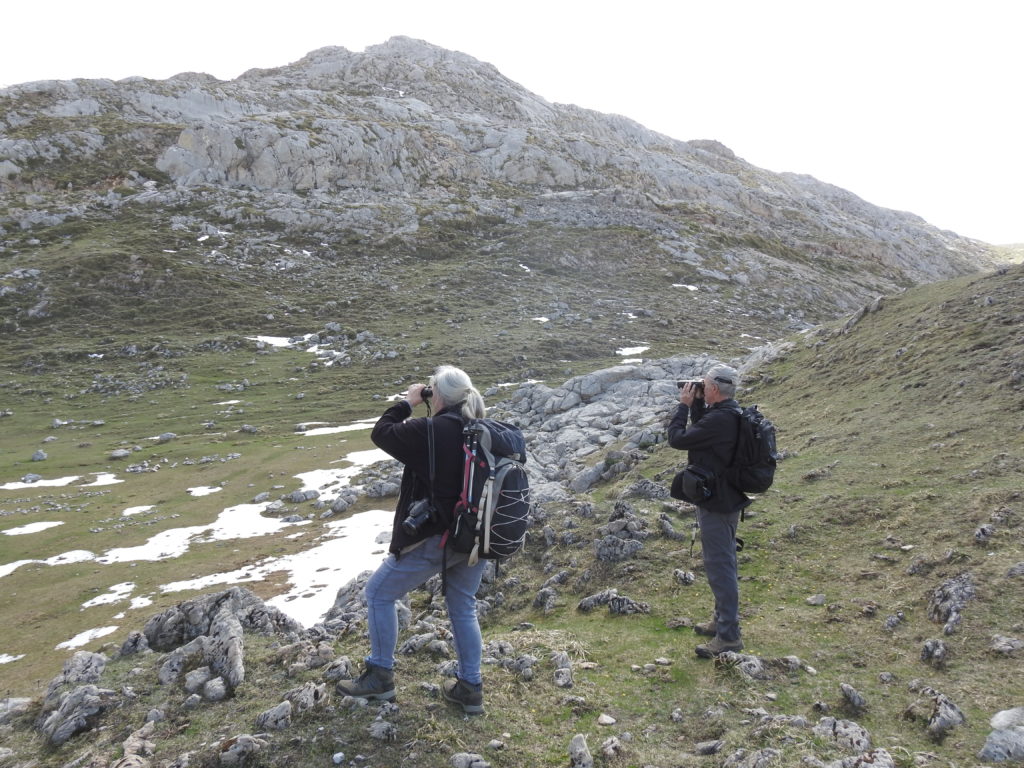
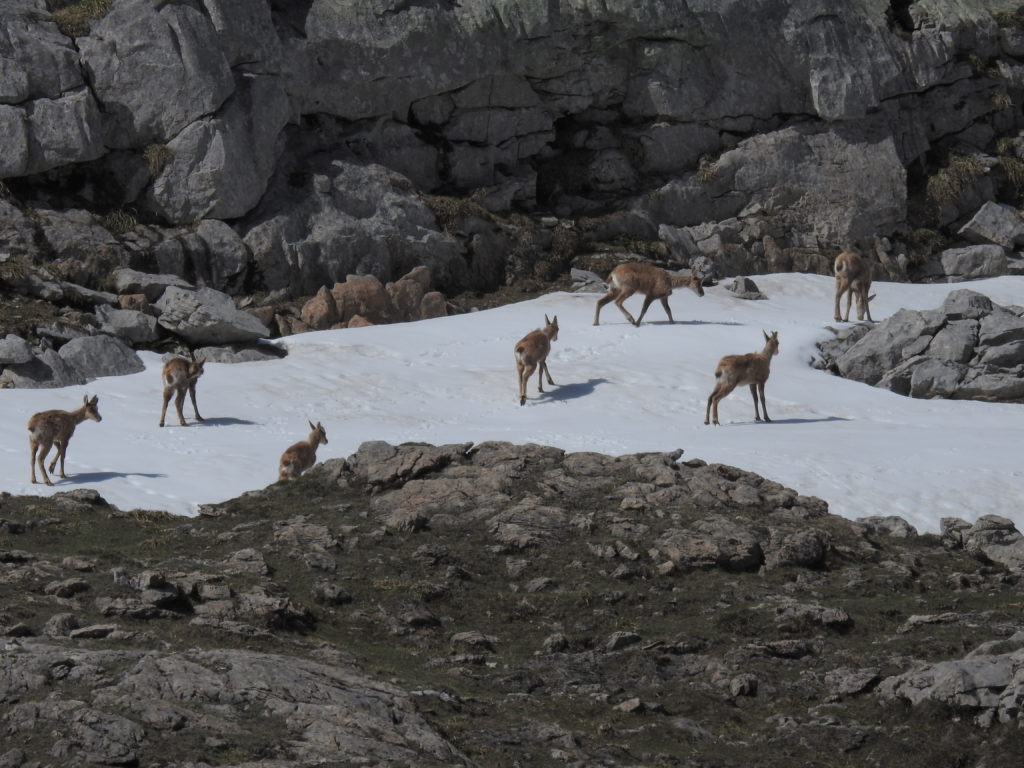
Cantabrian Chamois 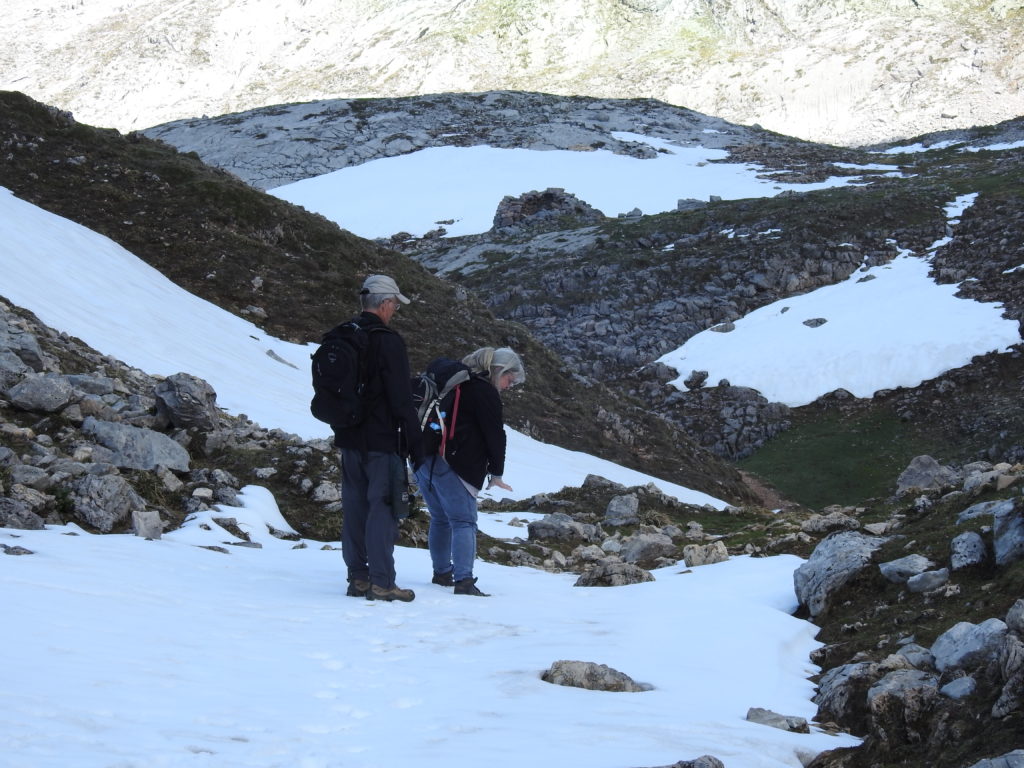
Looking for … 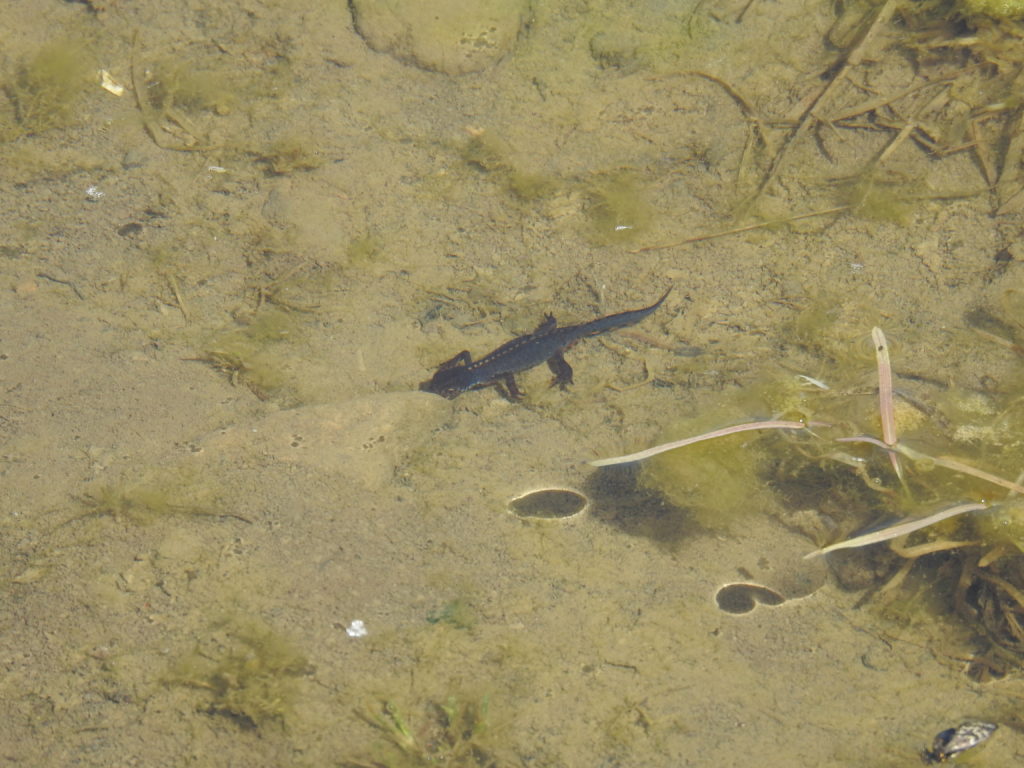
… a rare salamander that lives in this snowy valley 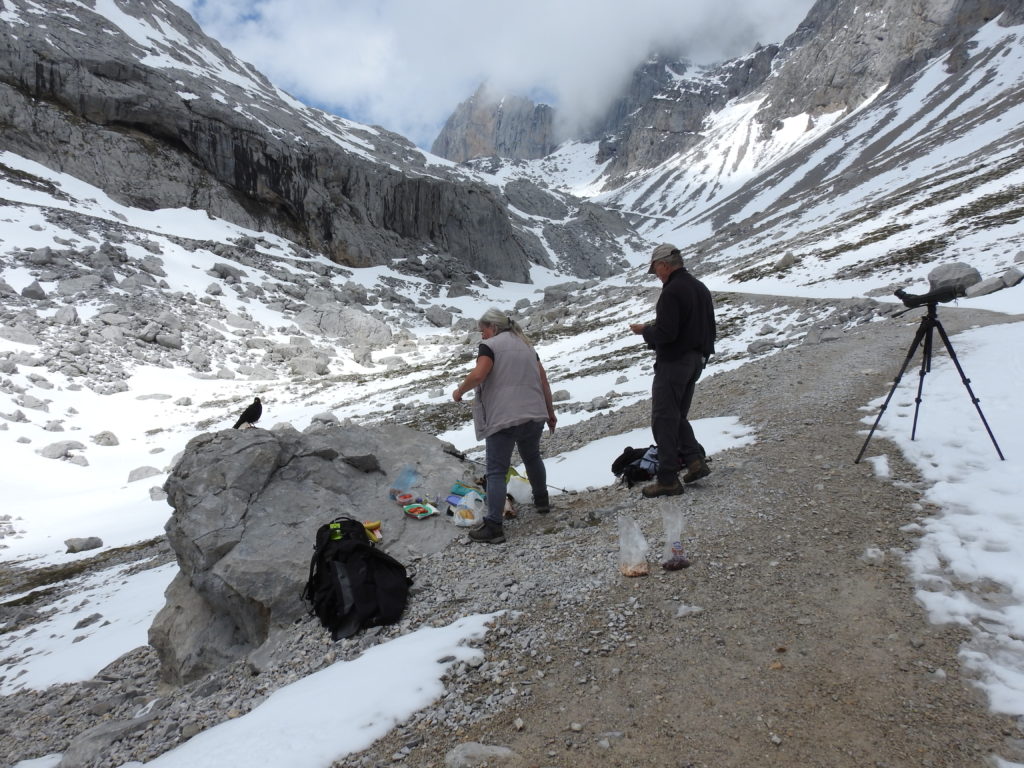
Nice spot for a picnic lunch! 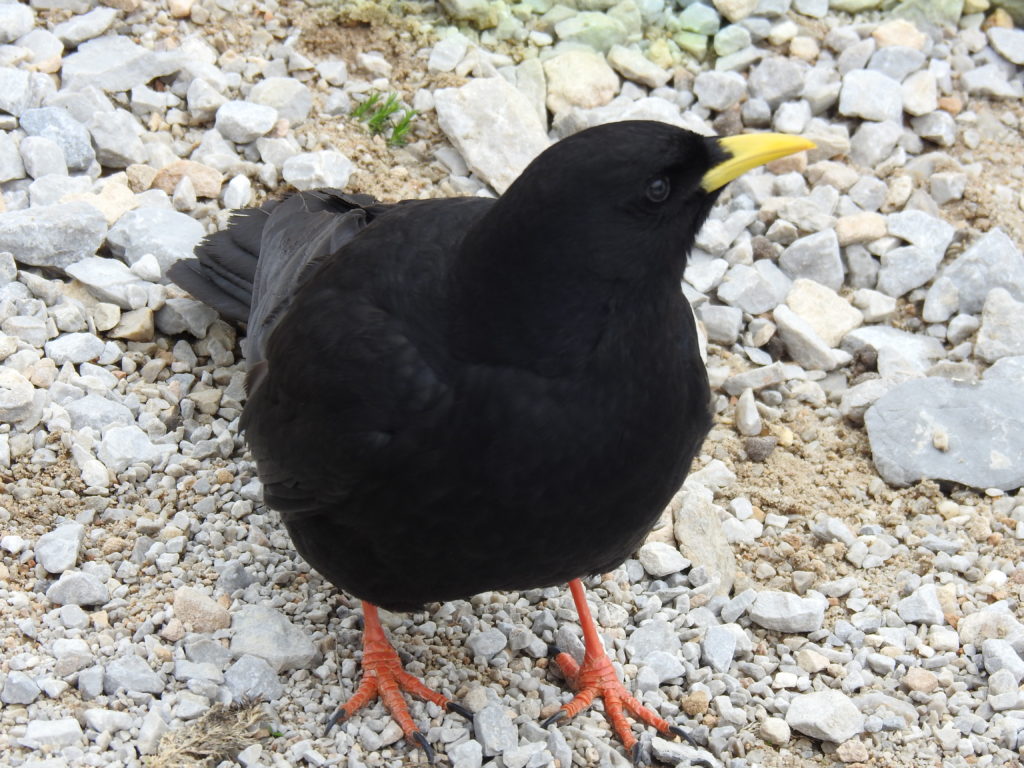
The Yellow-Billed Chough expects lunch too 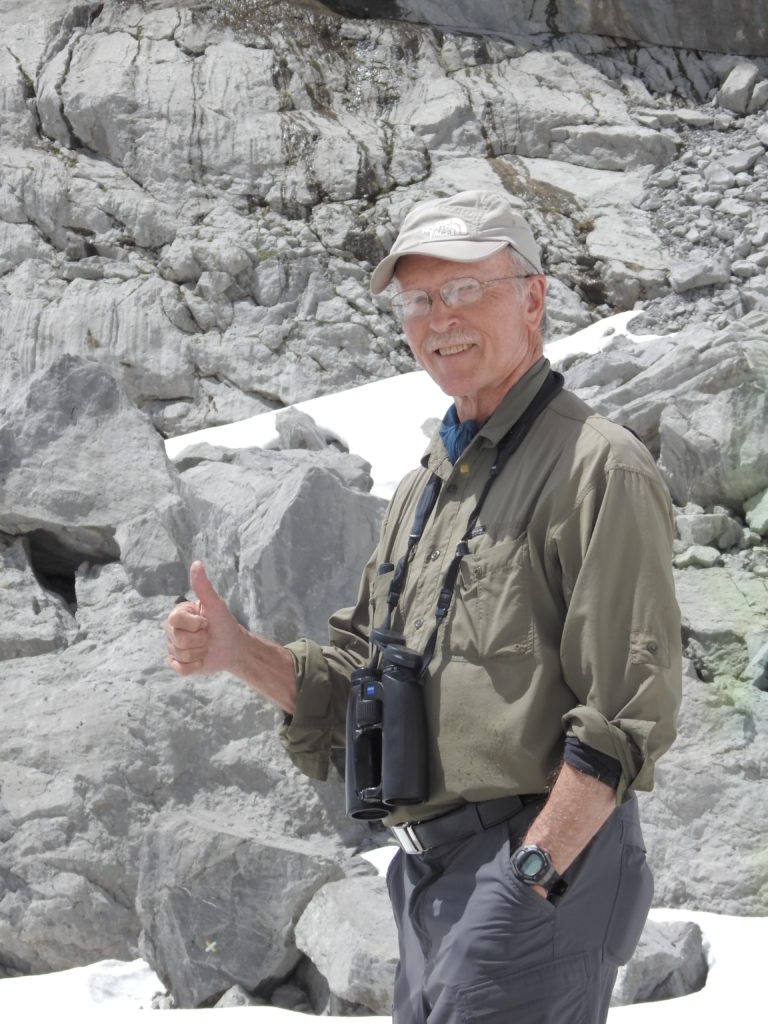
Got it! 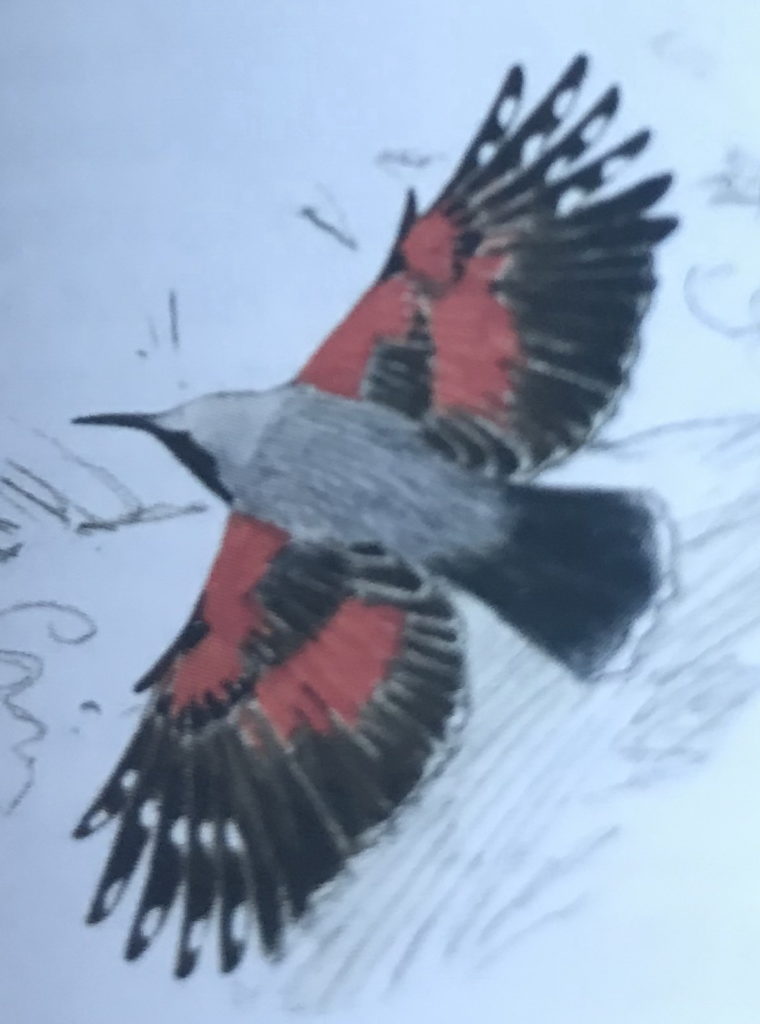
The Wallcreeper (from the bird book) 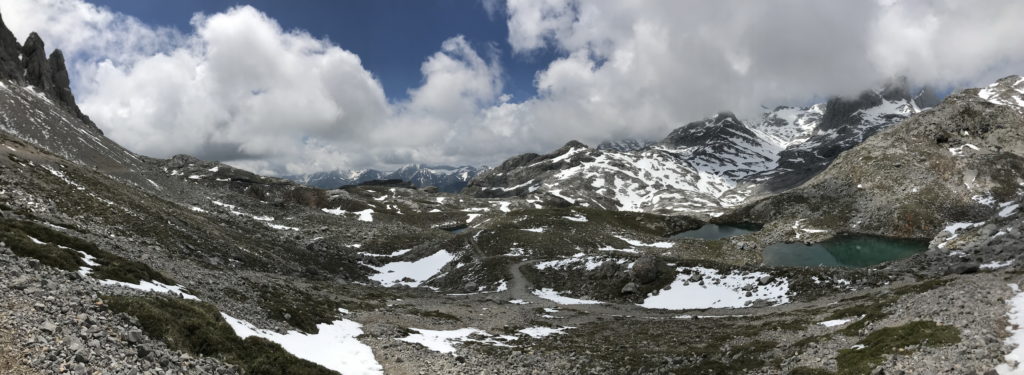
Picos de Europa
A windy drive through a steep mountain canyon took us west and north to Basque Country. We spent two days in Bilbao. Once a gritty manufacturing city, it has been transformed into an international art mecca because of the Guggenheim Museum, designed by Frank Gehry and opened in 1997. It’s fantastic! The central parts of Bilbao are also very walkable, with enjoyable shops, plazas and cafes.
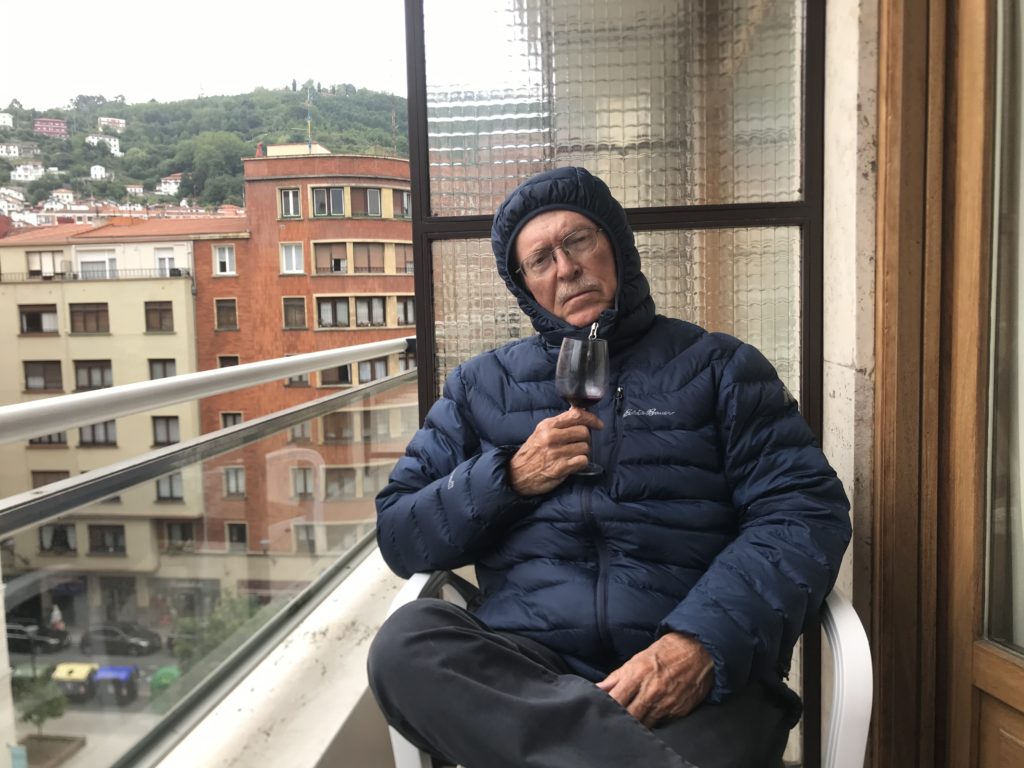
Cold! 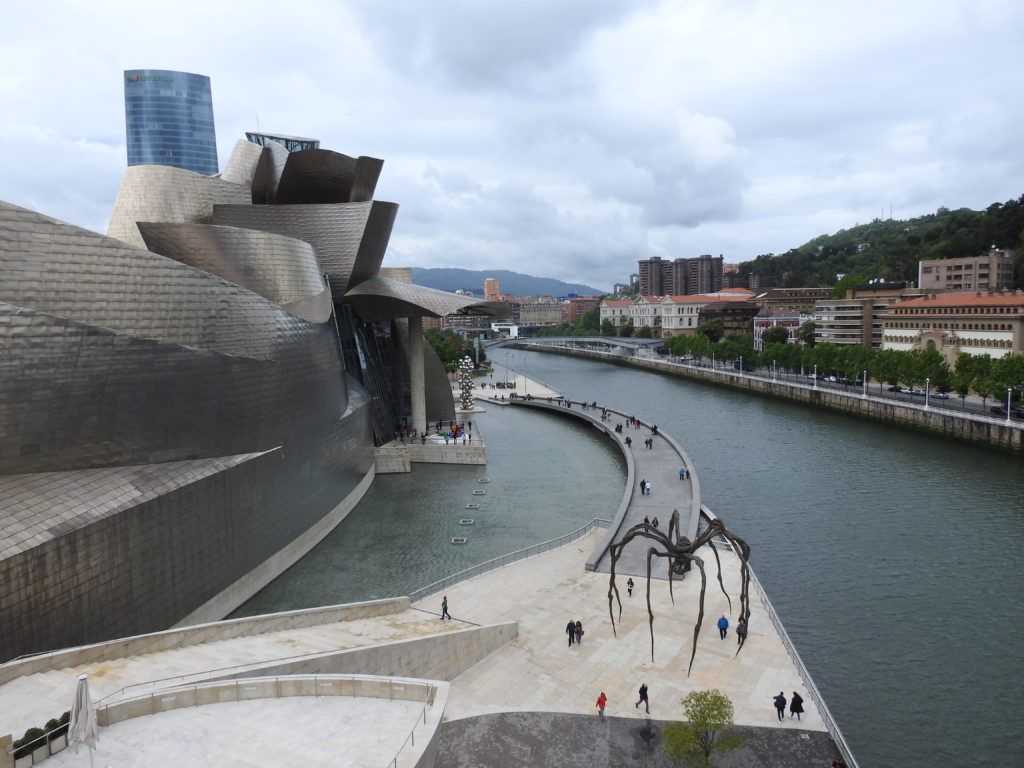
The Guggenheim and Rio Nervion 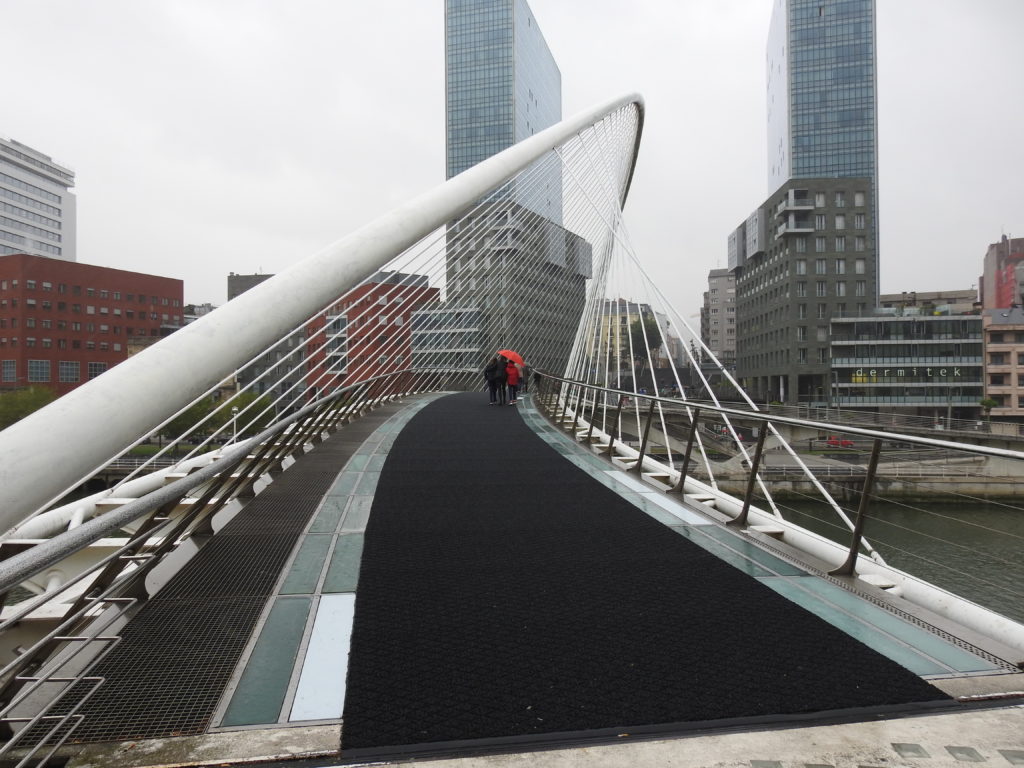
Zubizuri pedestrian bridge by Santiago Calatrava 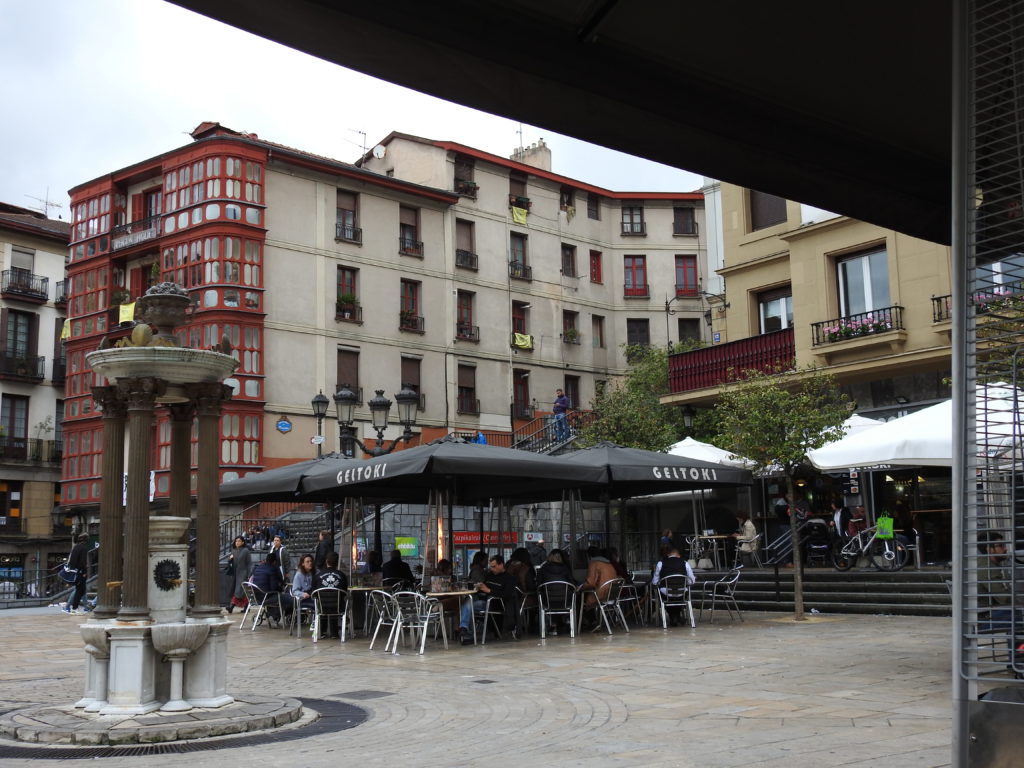
Plazas and cafes
From Bilbao, we drove to the Basque region’s coast. San Sebastian Donostia is one of the major cities there, with beaches, casinos and other entertainment. Unfortunately, it was cold, windy and rainy most of the time we were there so we didn’t get the opportunity to really enjoy it. We did, though, have some amazing meals here and in nearby seaside towns.
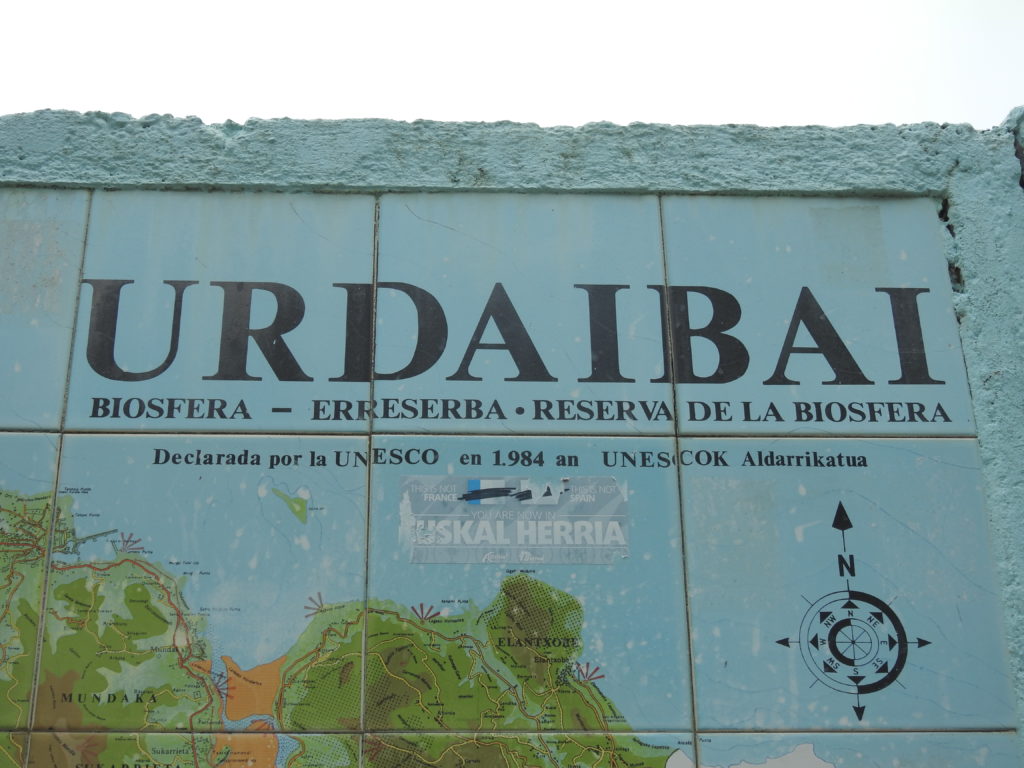
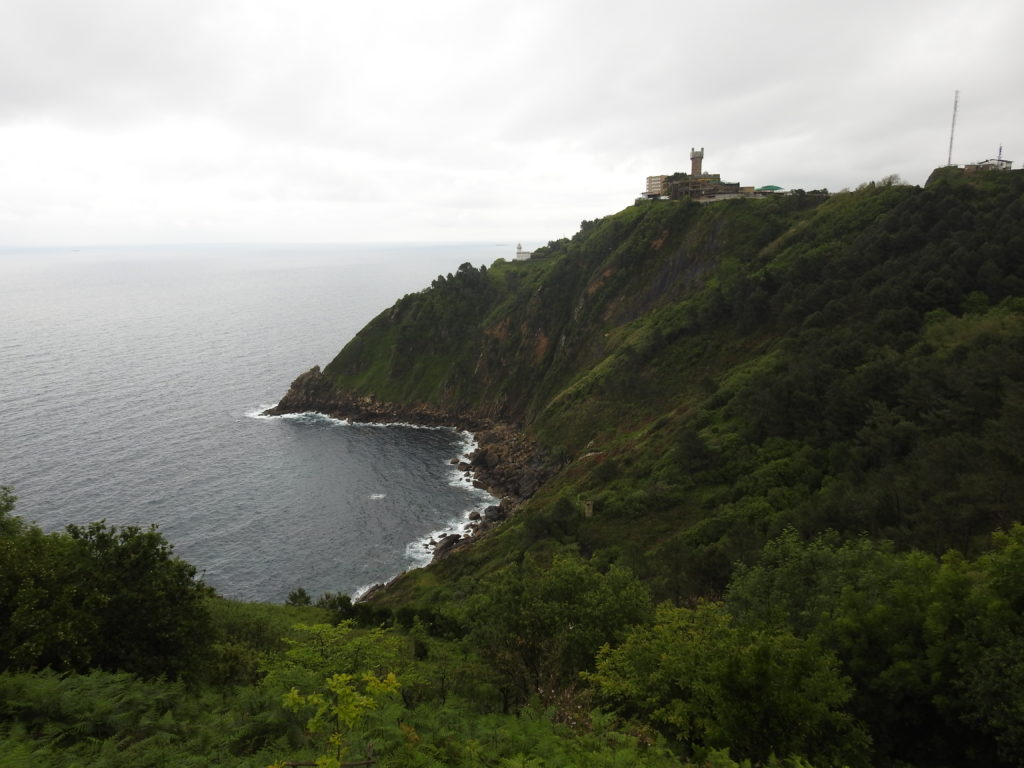
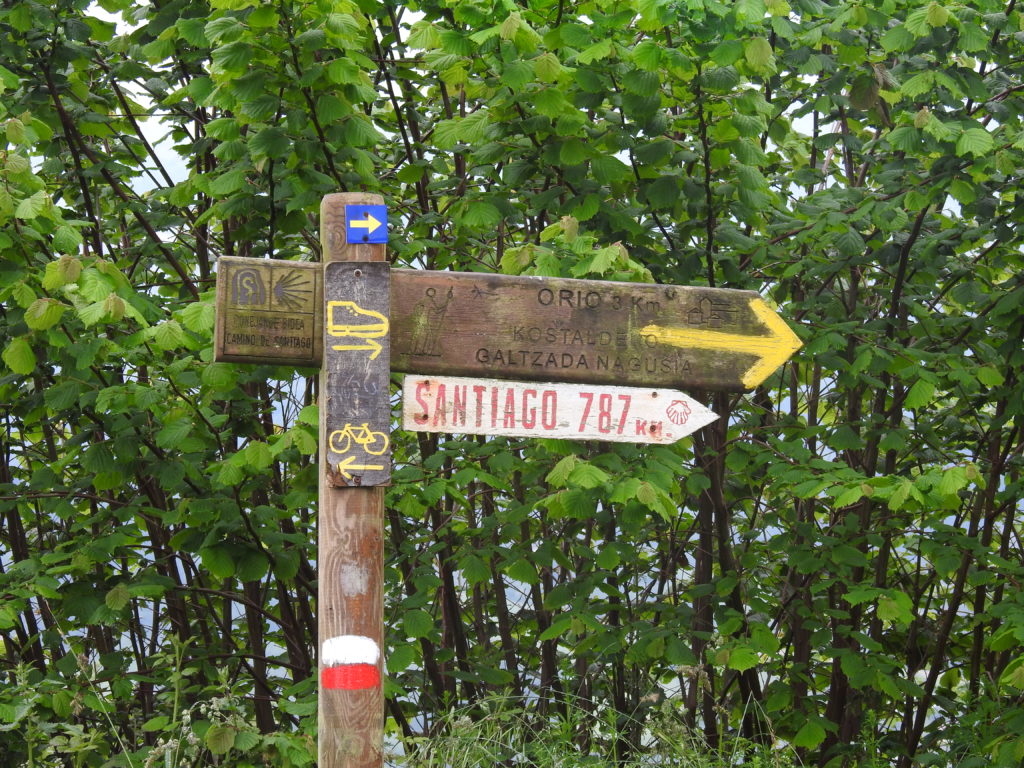
We were on the Camino de Santiago 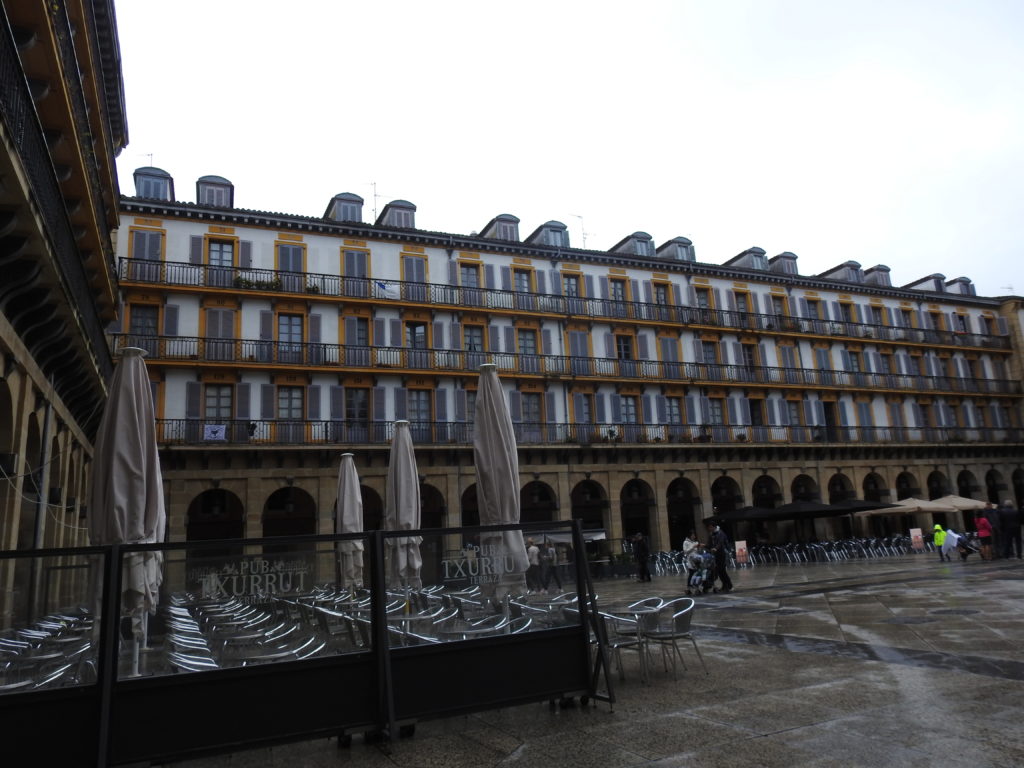
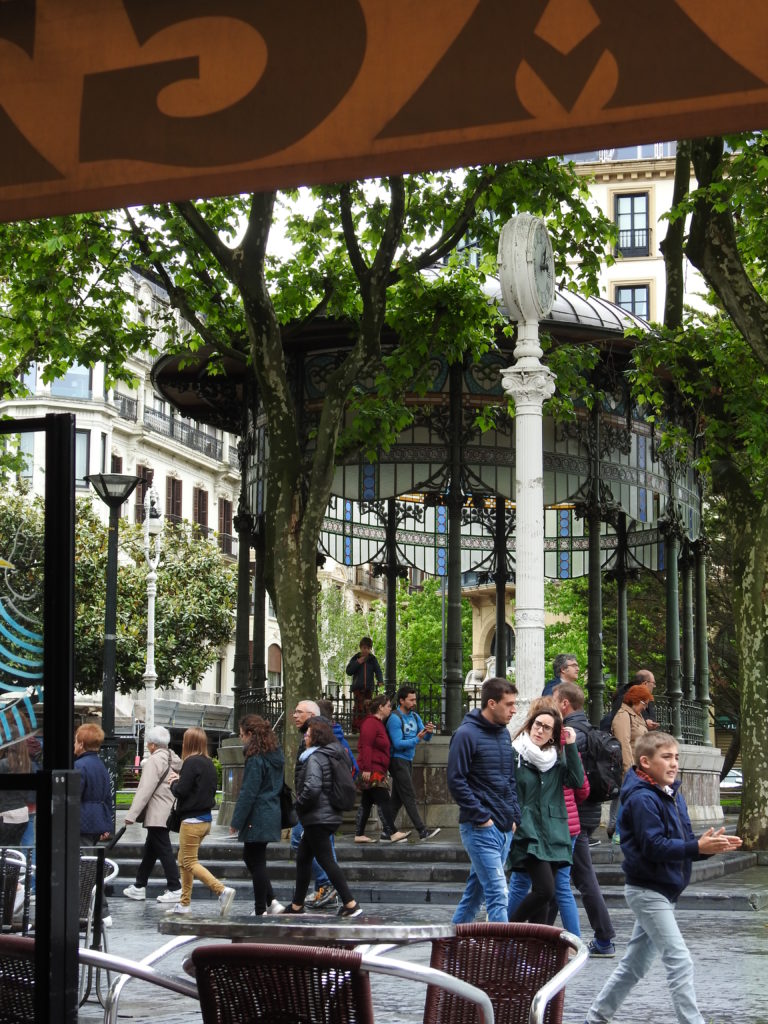
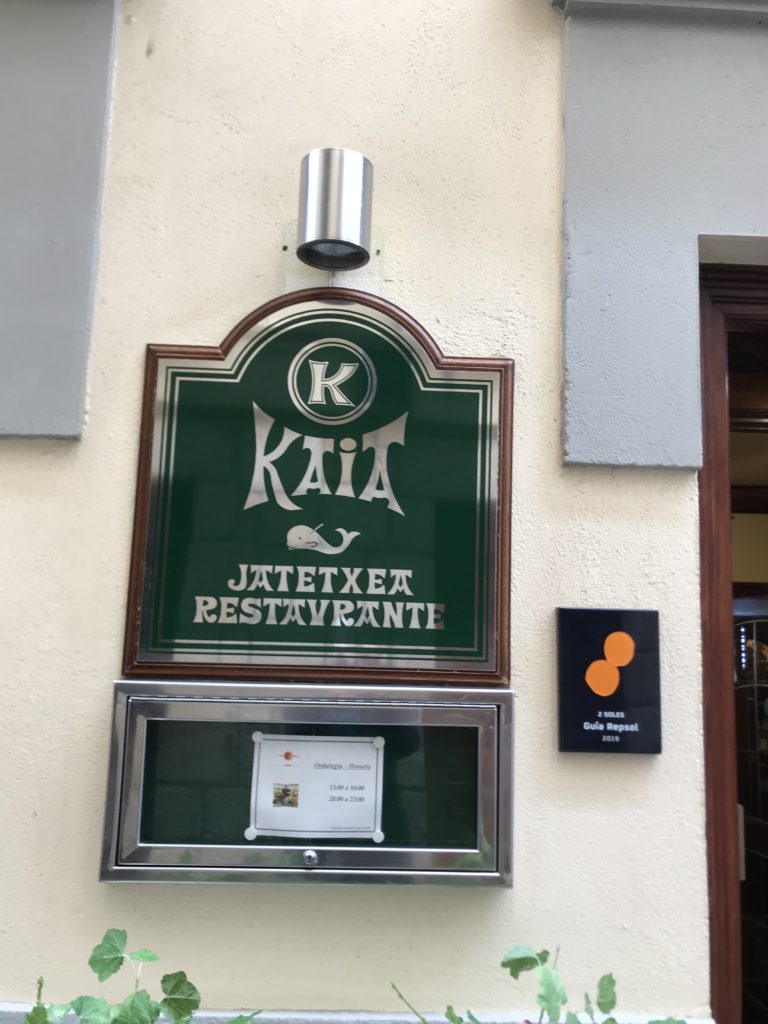
Amazing fish lunch! 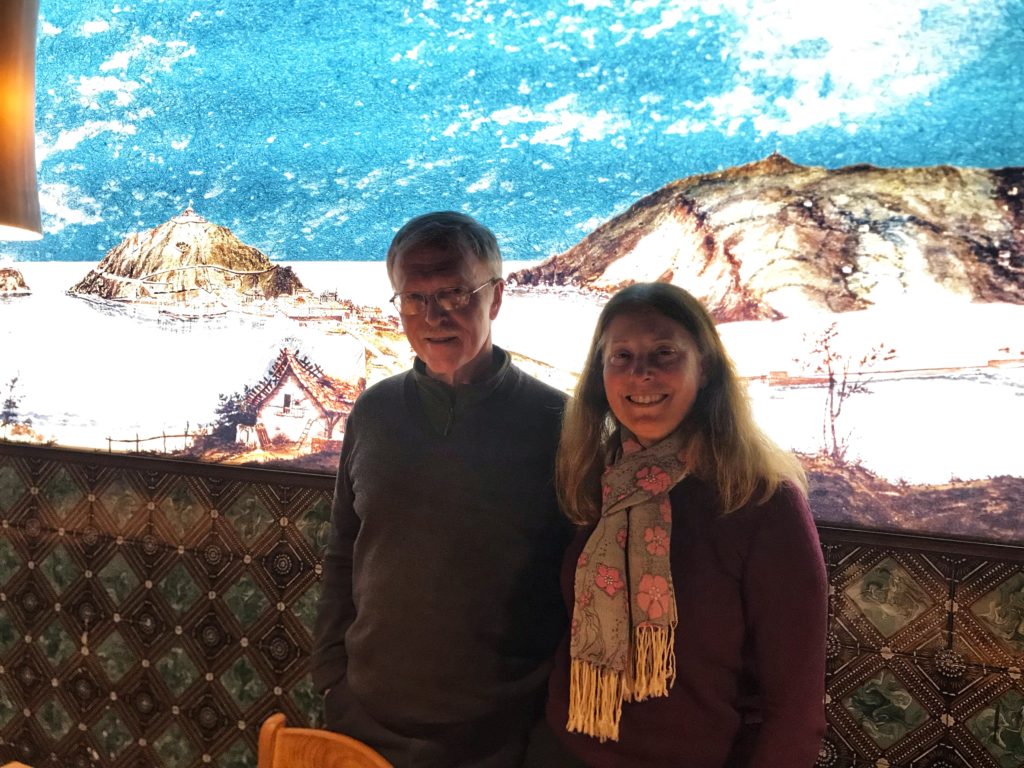
Terry’s birthday dinner at Bodegon Alejandro, recommended by our nephew Brian
We drove from the coast back to Madrid and turned in our rental car at the airport. From there, we got a cab into the central part of the city. We enjoyed two nights at the Madrid Palace Hotel (opened 1912), one of the grand old city hotels. Then we spent four nights staying with our nephew Tyler and his girlfriend Leah in their cool apartment in the Lavapies neighborhood. They spent two years here teaching English and having all kinds of great experiences. We really enjoyed hanging out with them and visiting their favorite parks, restaurants and bars (as well as touring museums while they were working). It turned out we were there at the time of the playoff match for European soccer — the UEFA Champions League finals — which featured the British teams Tottenham Hotspur and Liverpool this year. So Madrid was full of rowdy Brits!
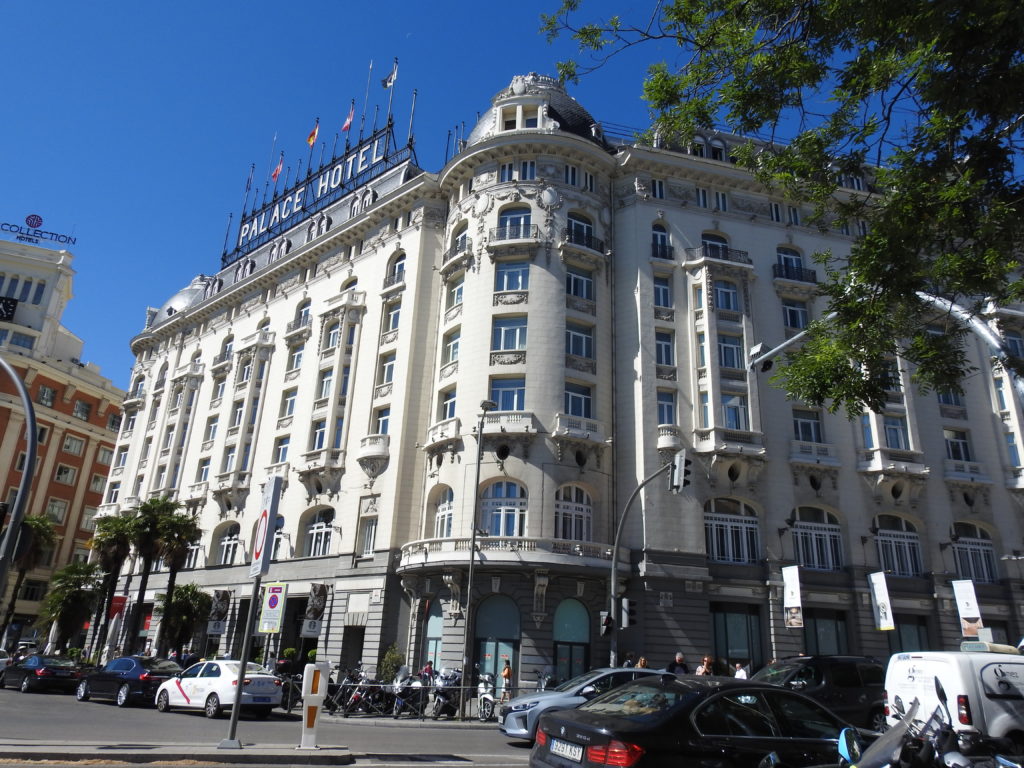

The guys in Madrid, plus new arrival Alphonso the Spanish lynx 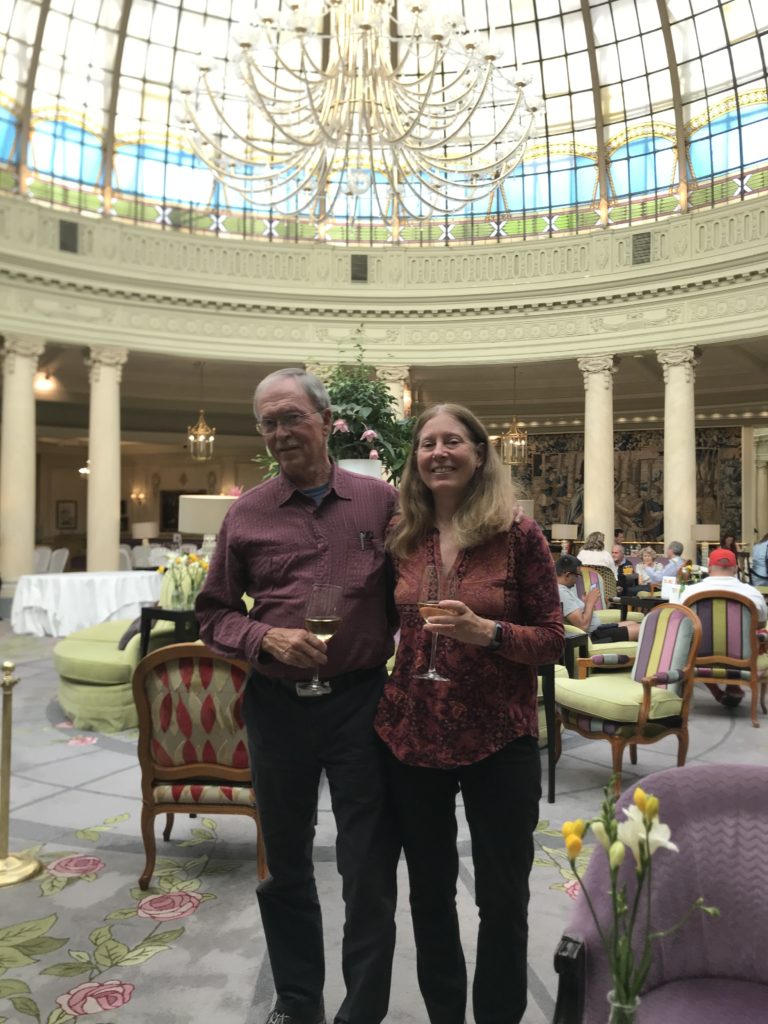
The bar at the Palace Hotel 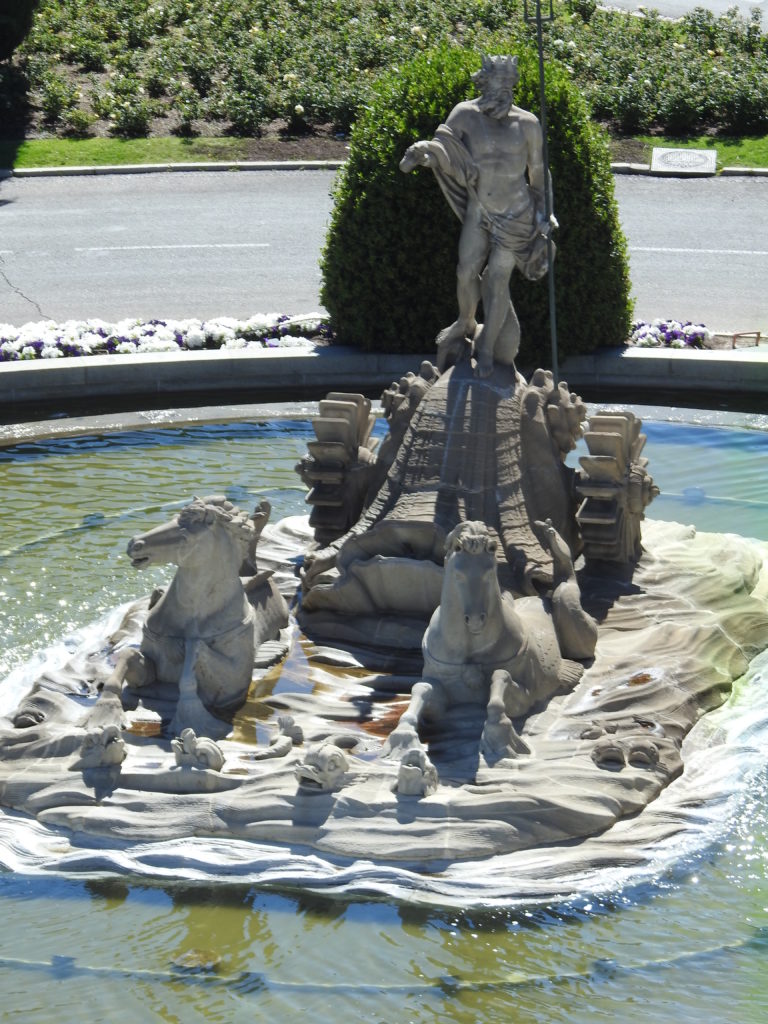
Neptune statue from our window 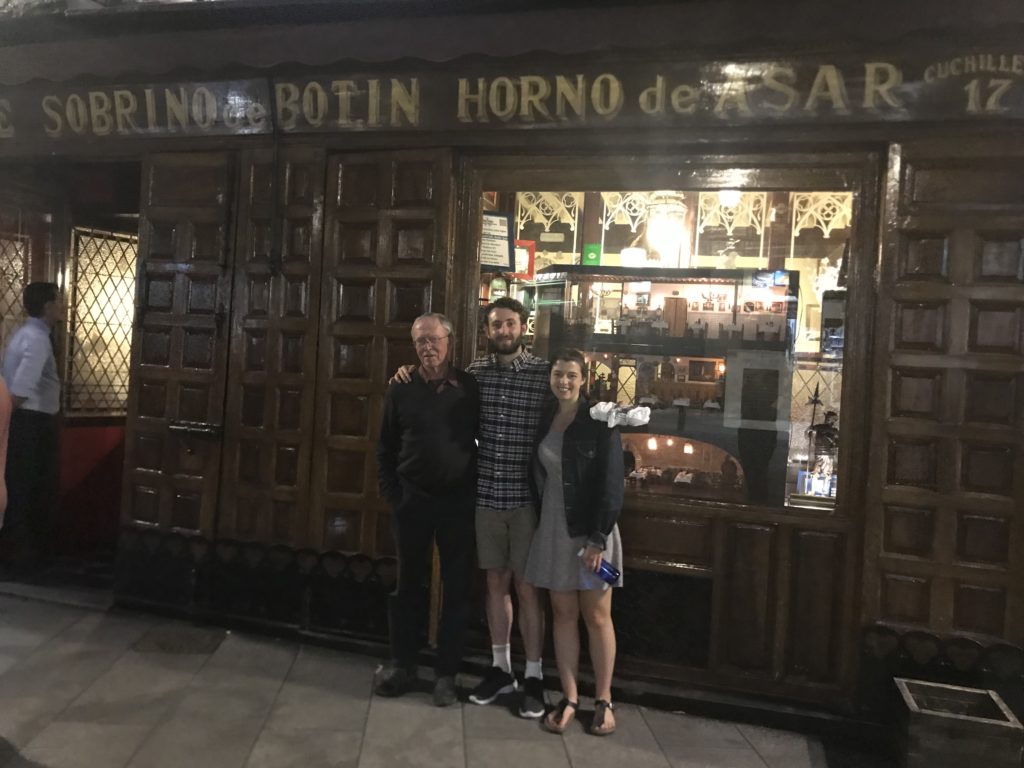
Founded in 1725, this is the oldest operating restaurant in the world! 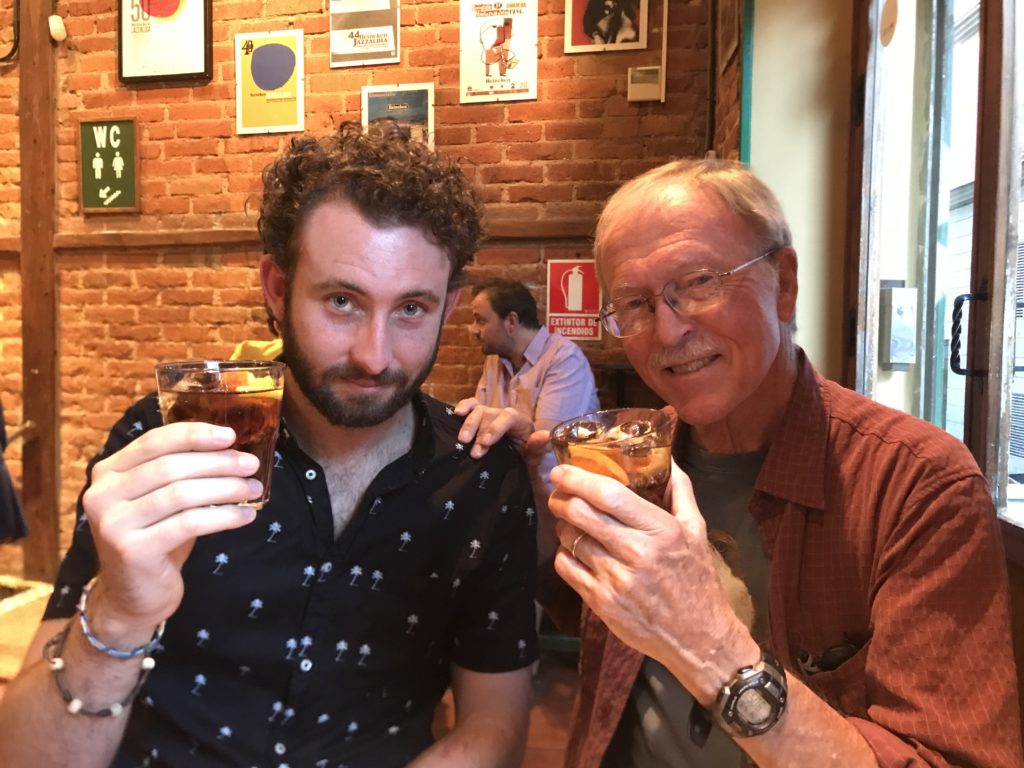
Vermouth 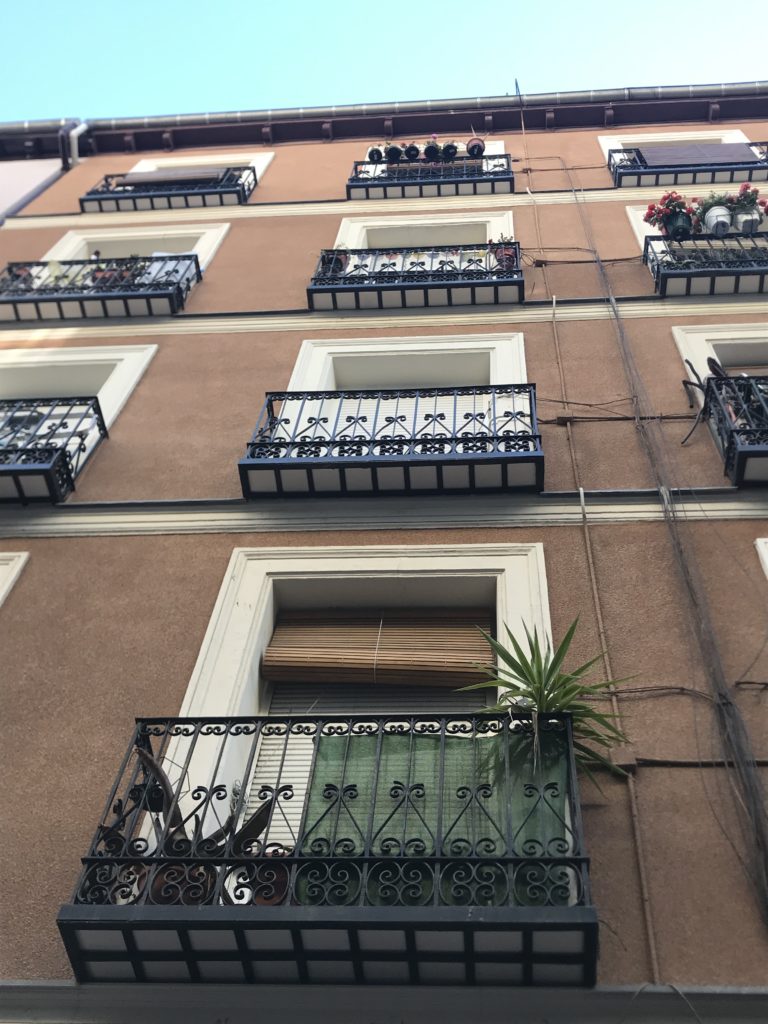
Ty and Leah’s apartment is the one up top … and no stairs 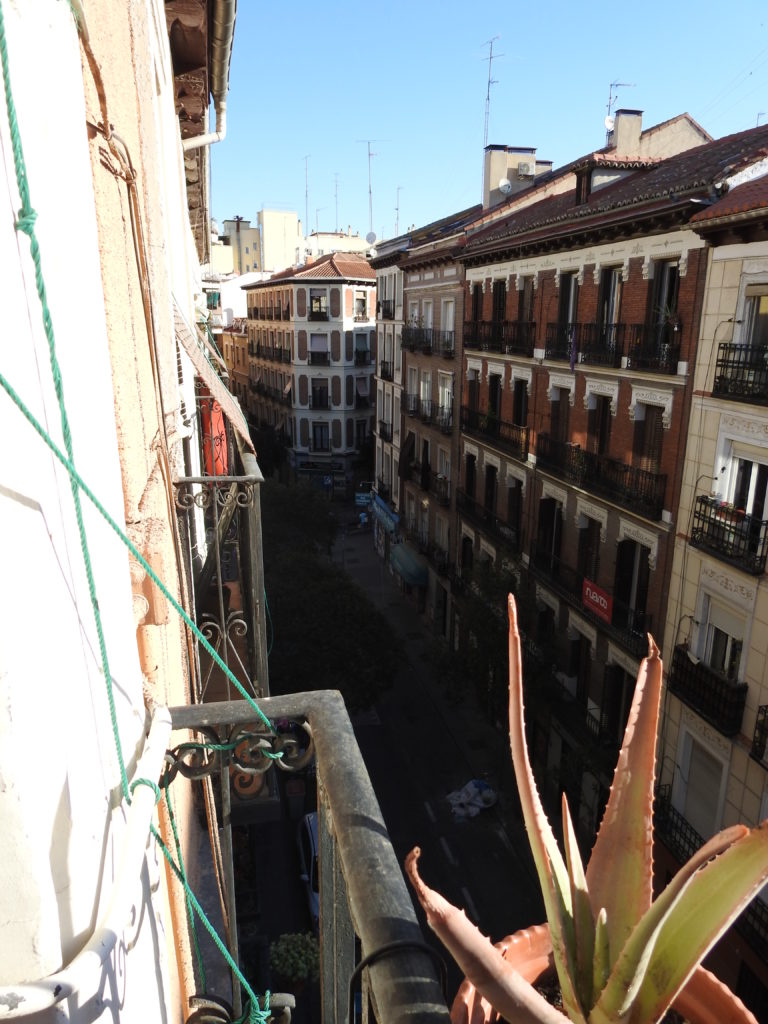
The view from Ty and Leah’s apartment 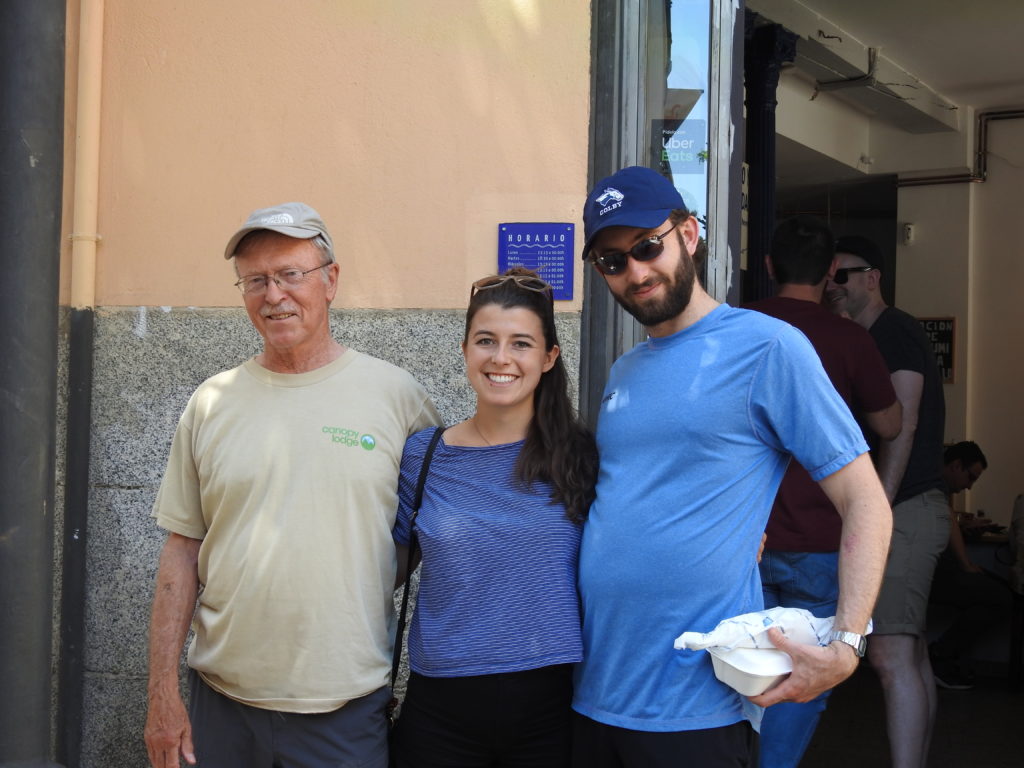
Terry, Leah & Tyler 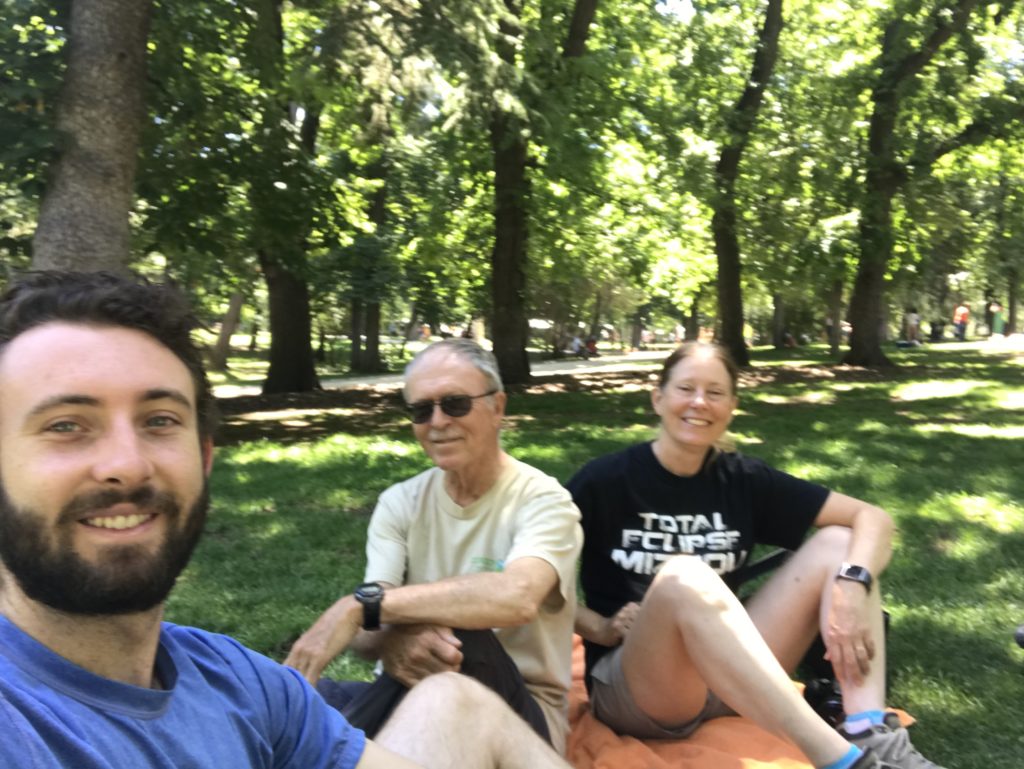
Retiro Park 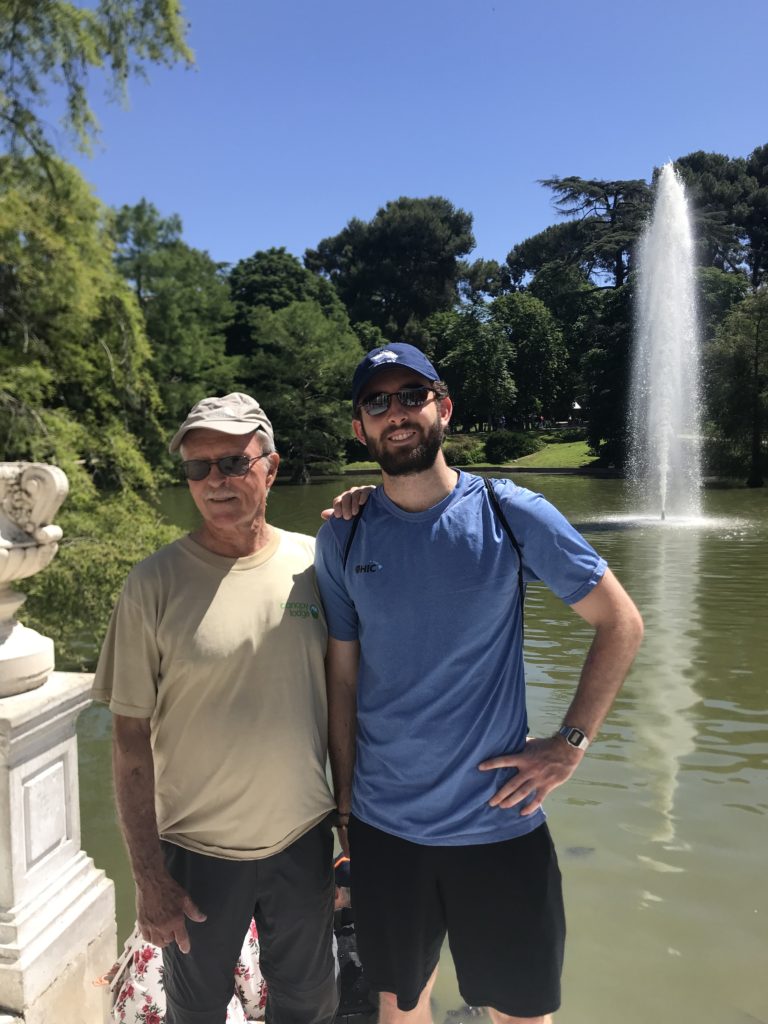
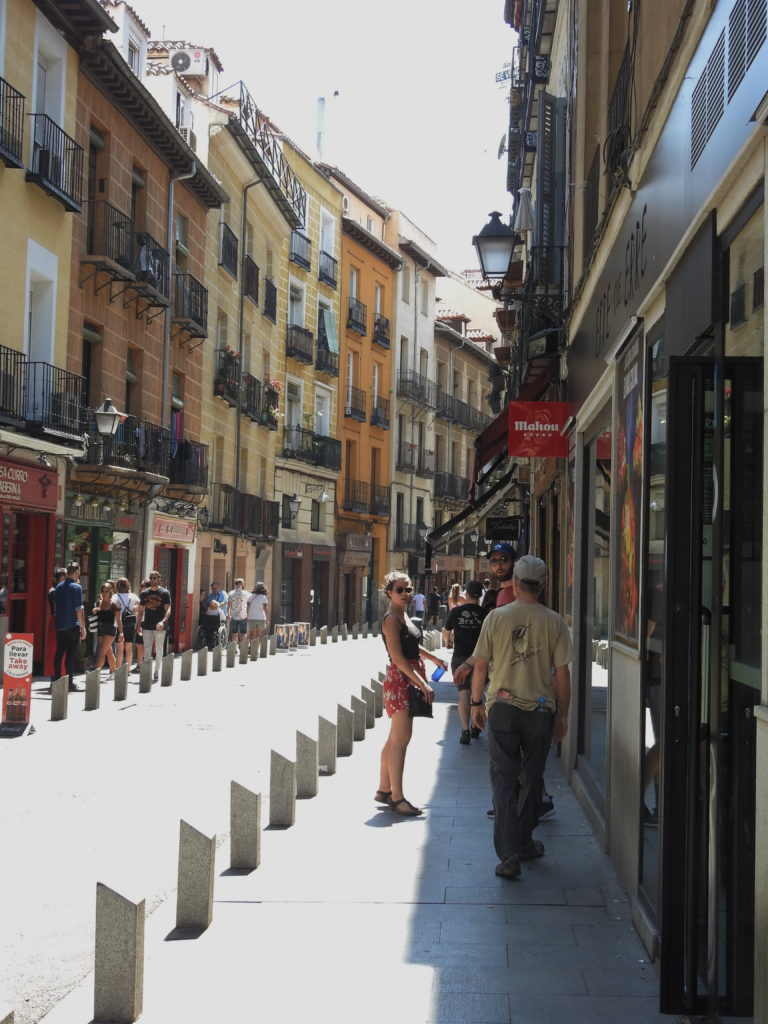
Lavapies neighborhood 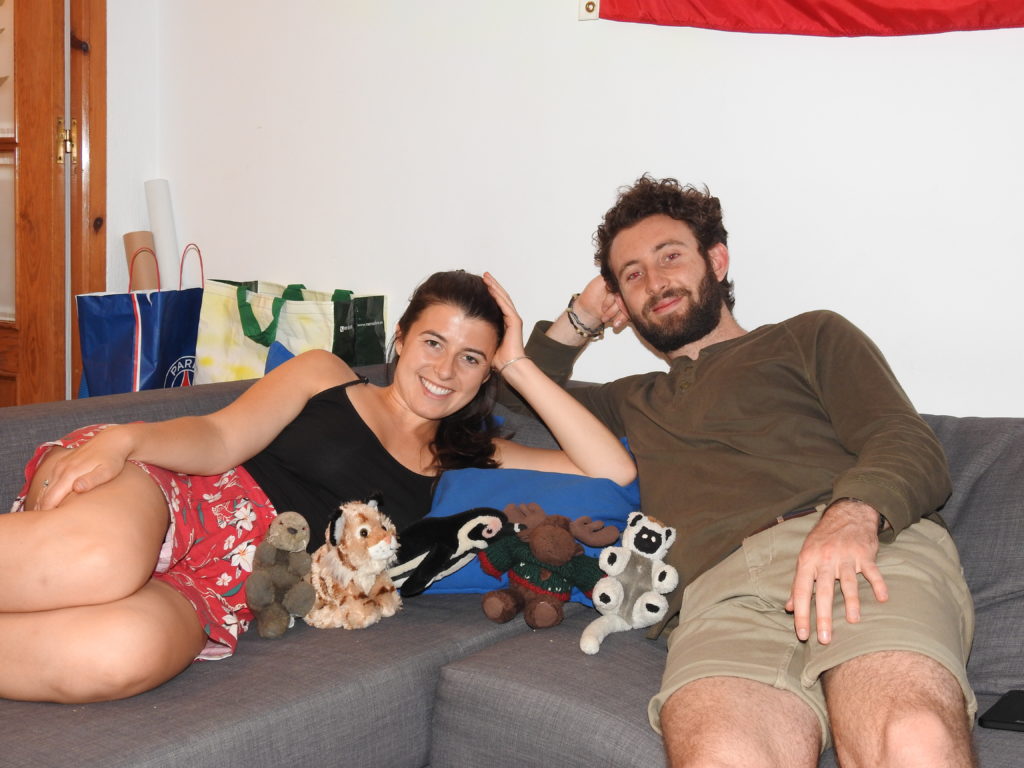
Relaxing at the apartment 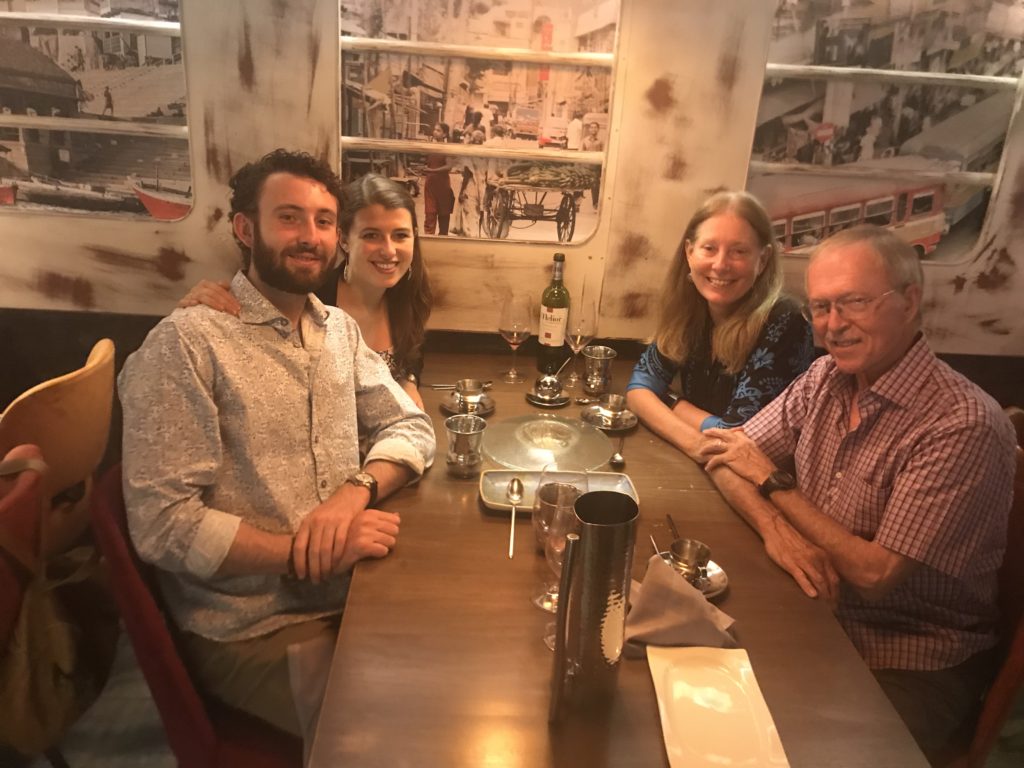
Ty’s birthday dinner at Tandoori Station
We left Madrid and flew to the Canary Islands, the last stop on the trip. Many people go there for the beaches, but we wanted to see the natural areas and the birds. We spent time on Fuerteventura (cold and VERY windy!), Lanzarote (with distinctive lava-bed vineyards), Tenerife (high mountain peaks and meadows in its center) and La Gomera (with remnant ancient laurel forest). The weather was not very cooperative and the birds were challenging. But it was interesting to see these unusual volcanic islands in the Atlantic.

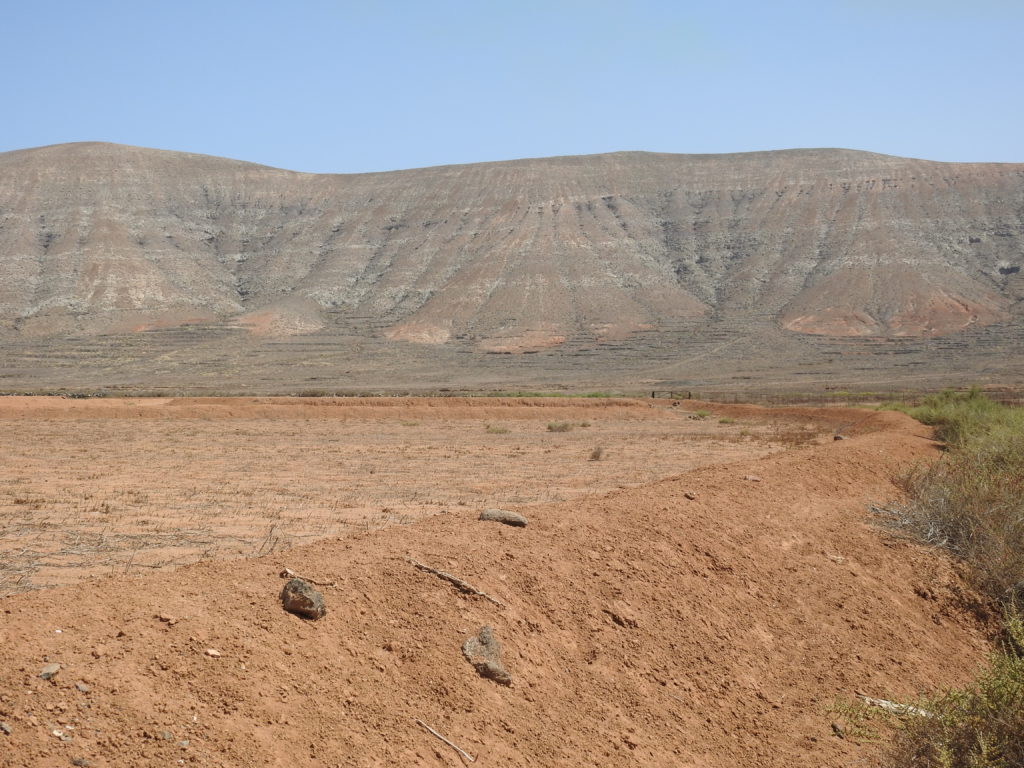
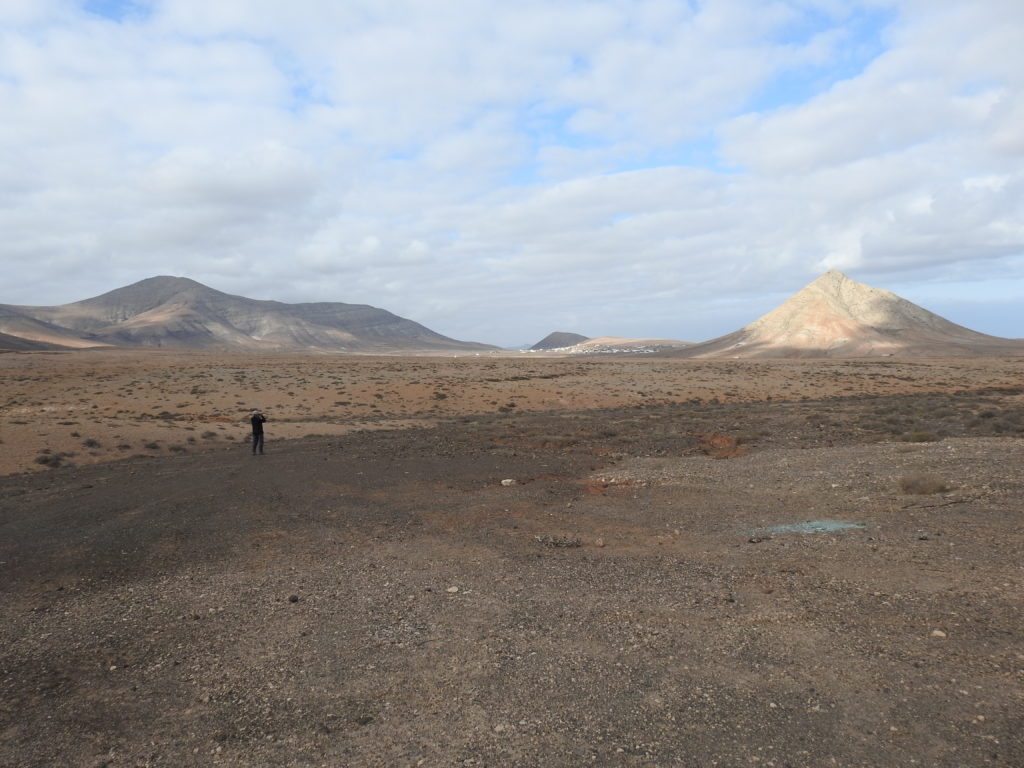
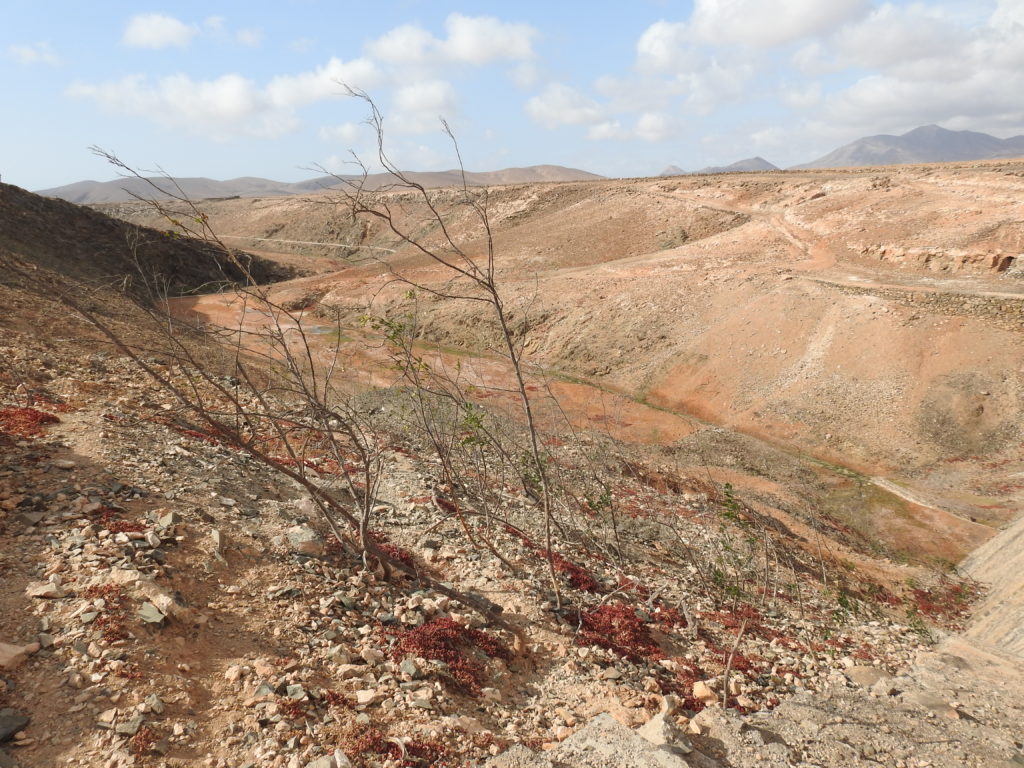
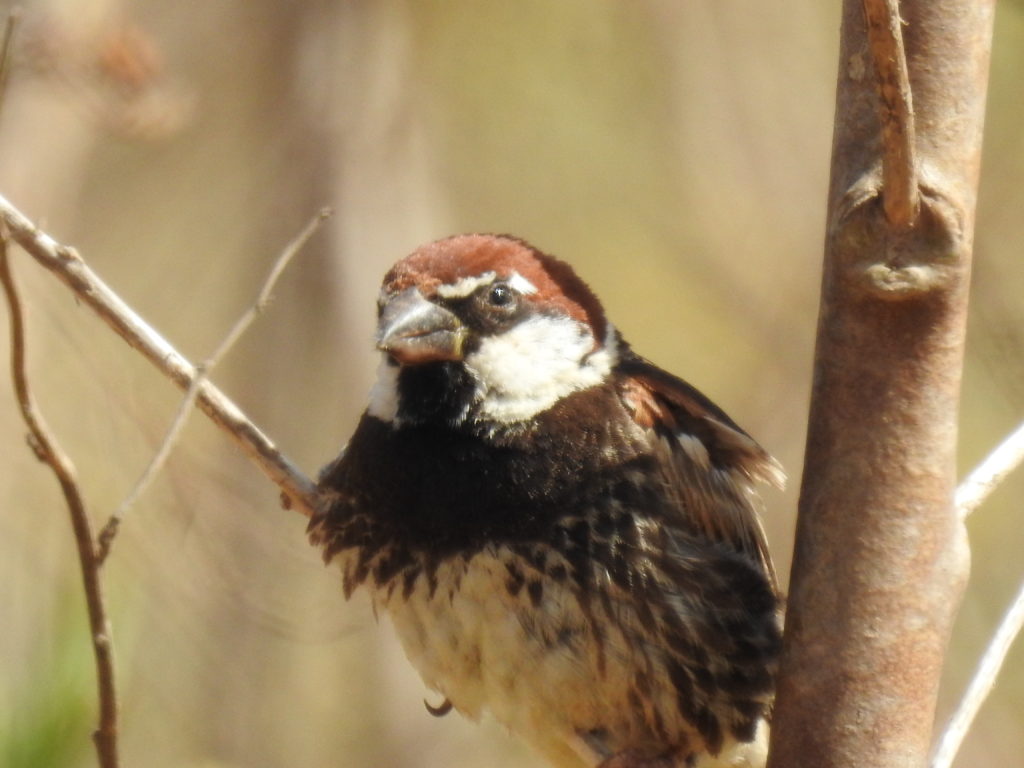
Spanish Sparrow 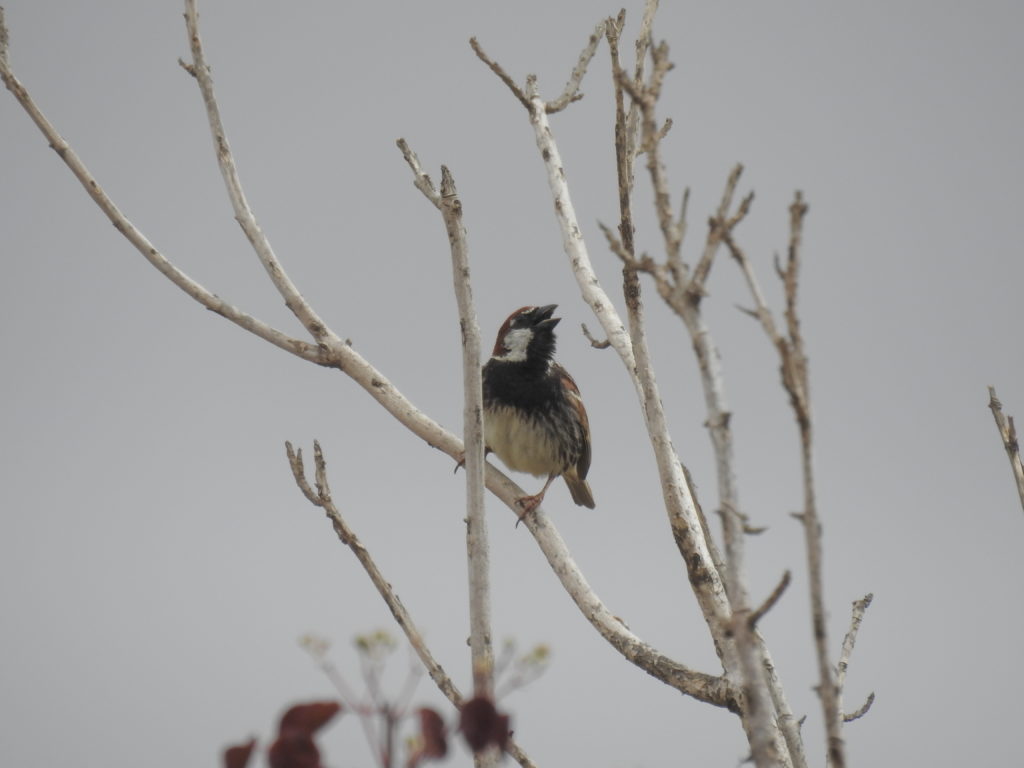
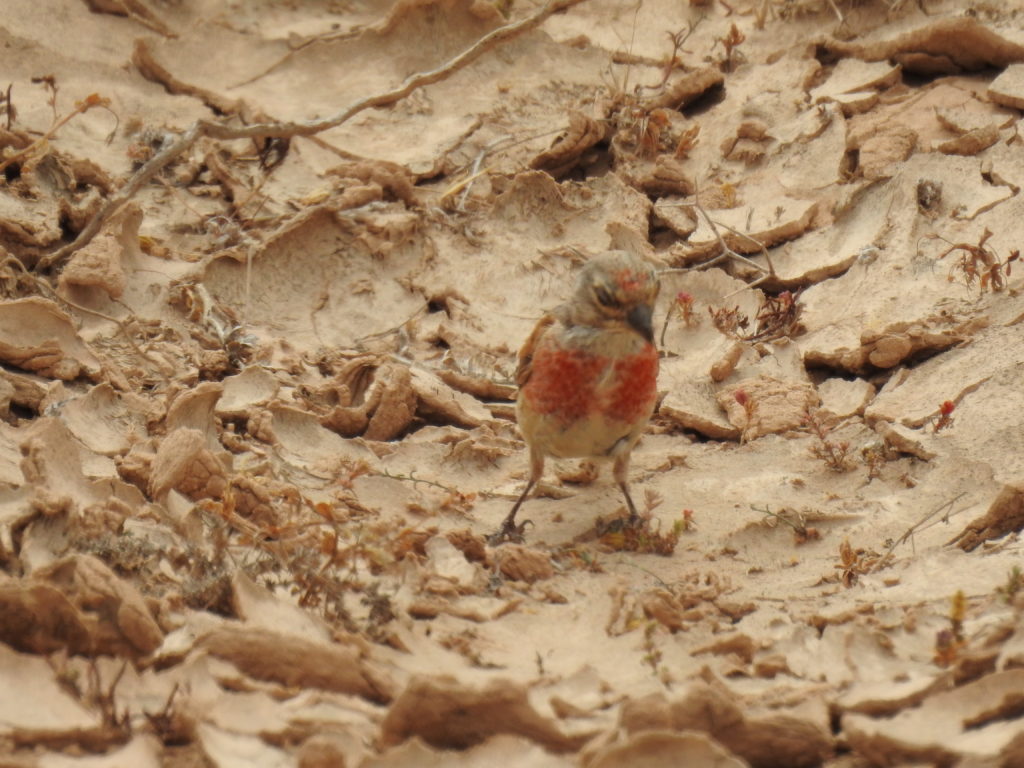
Linnet 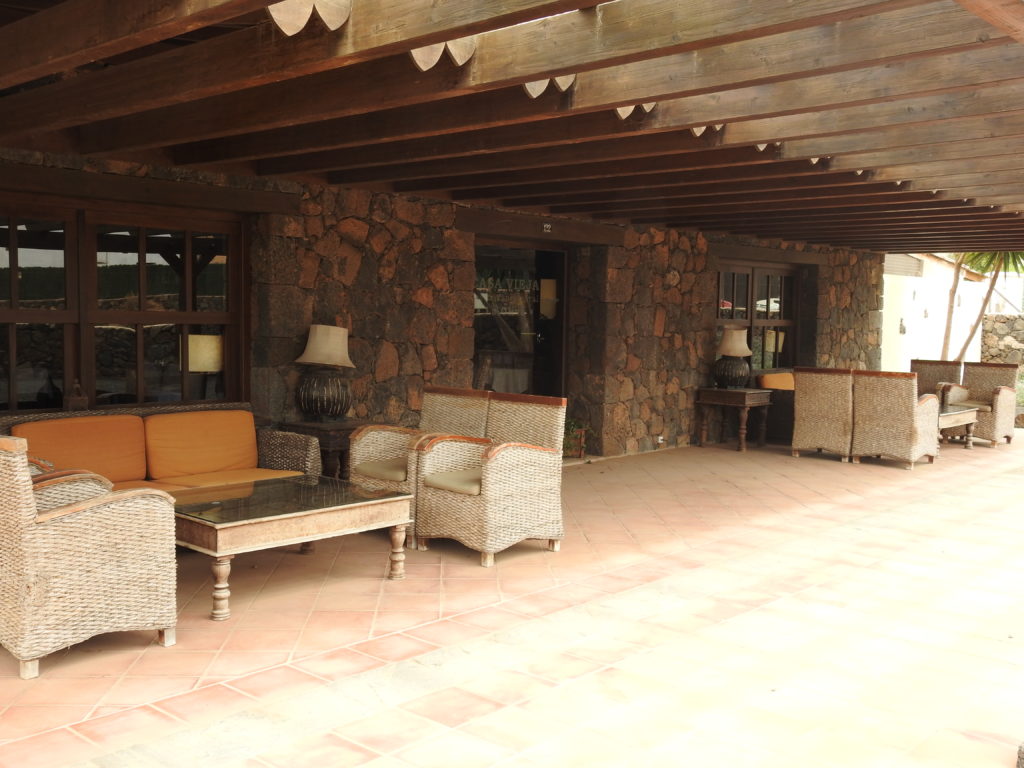
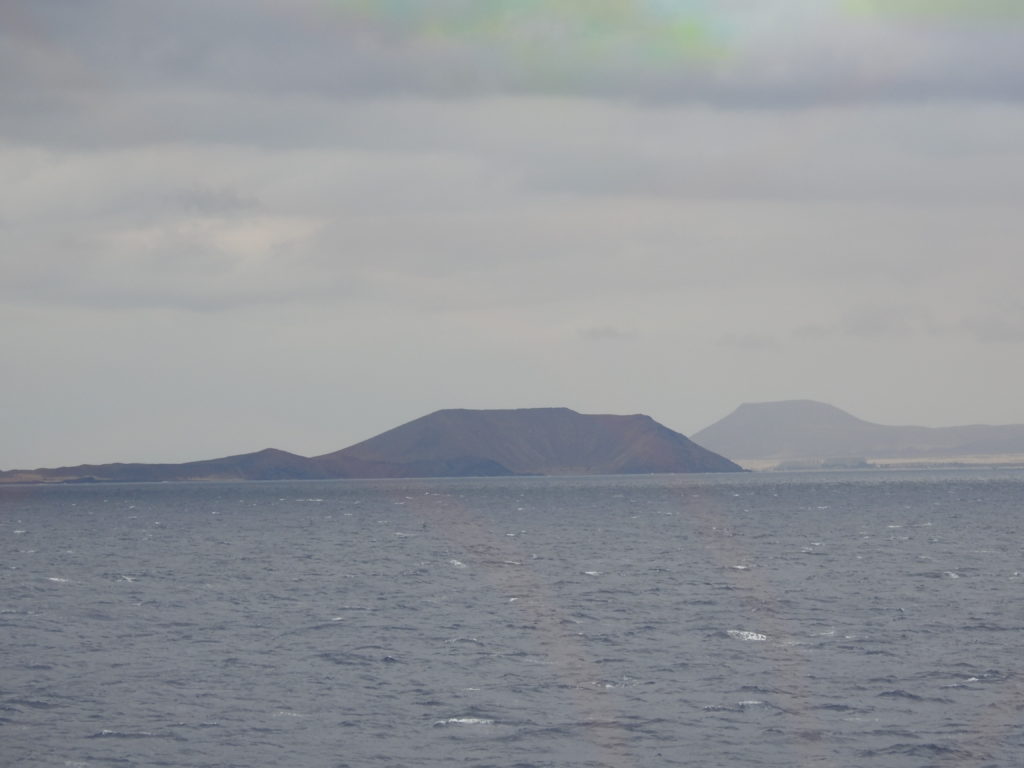
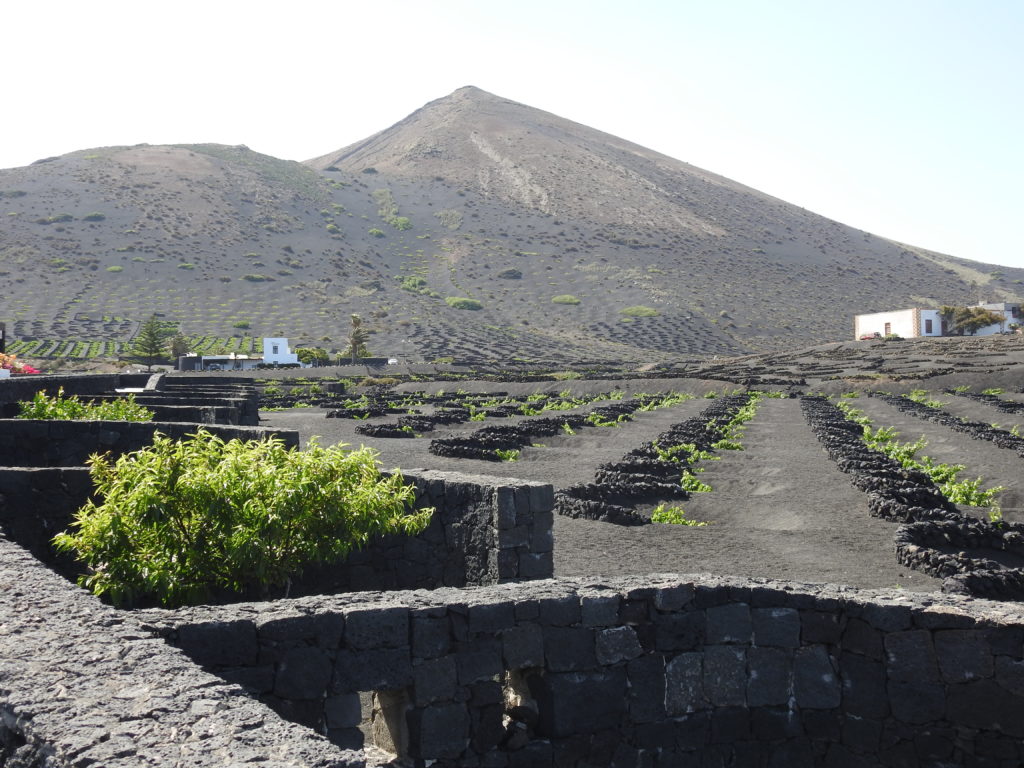
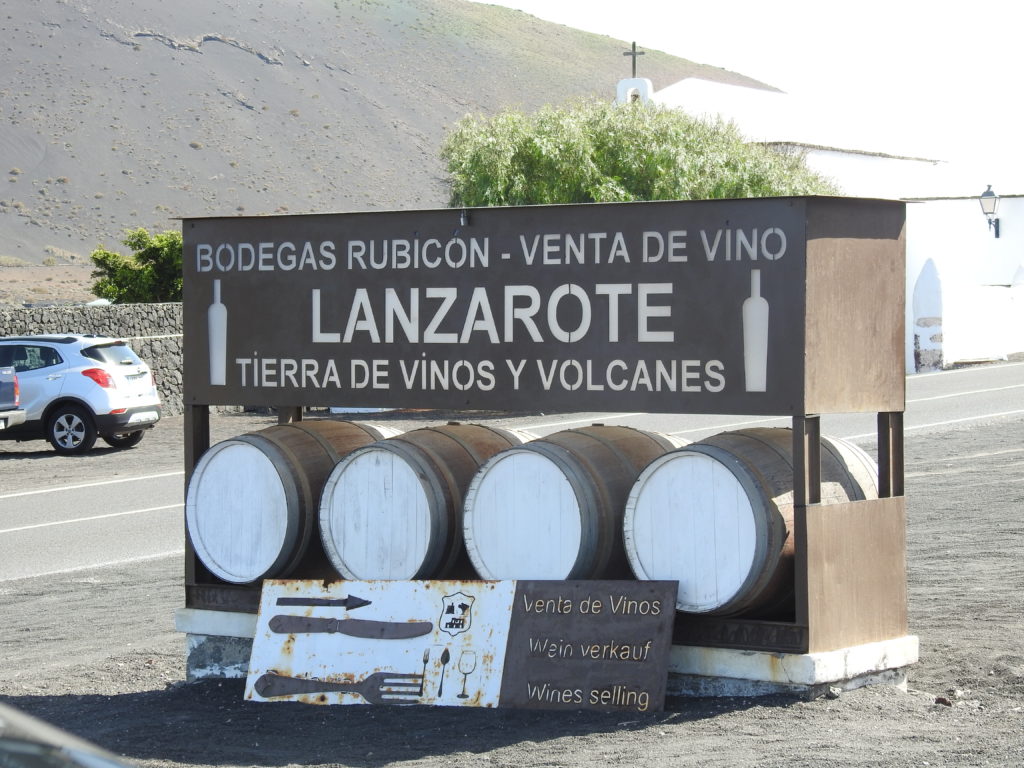
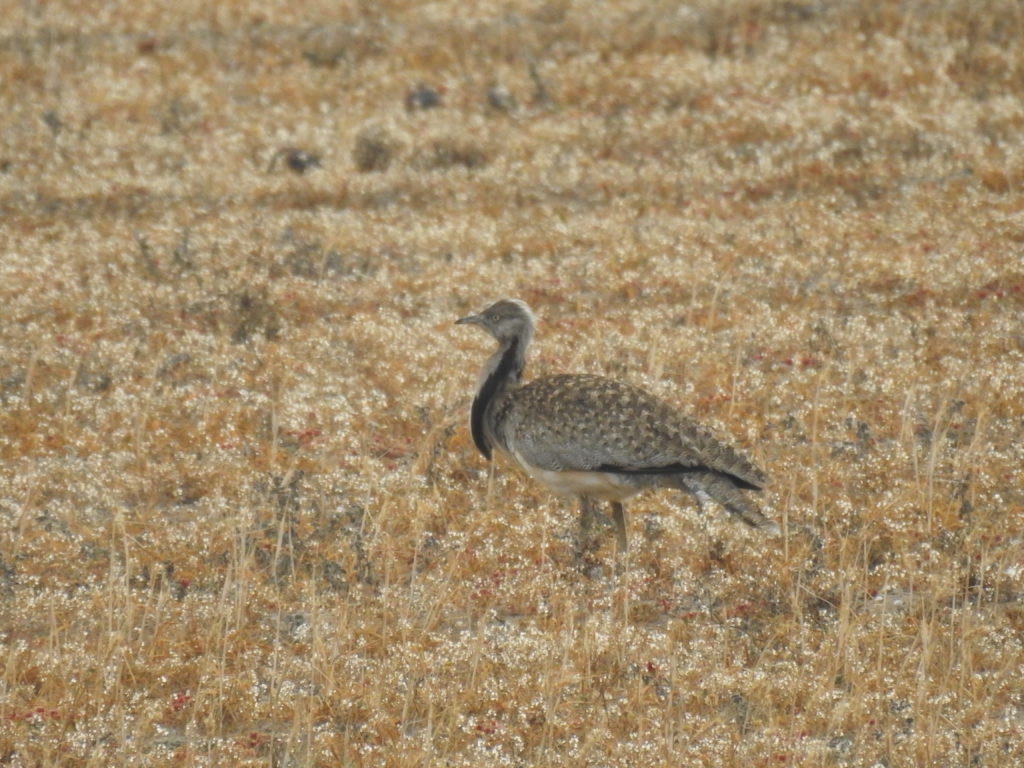
Houbara Bustard 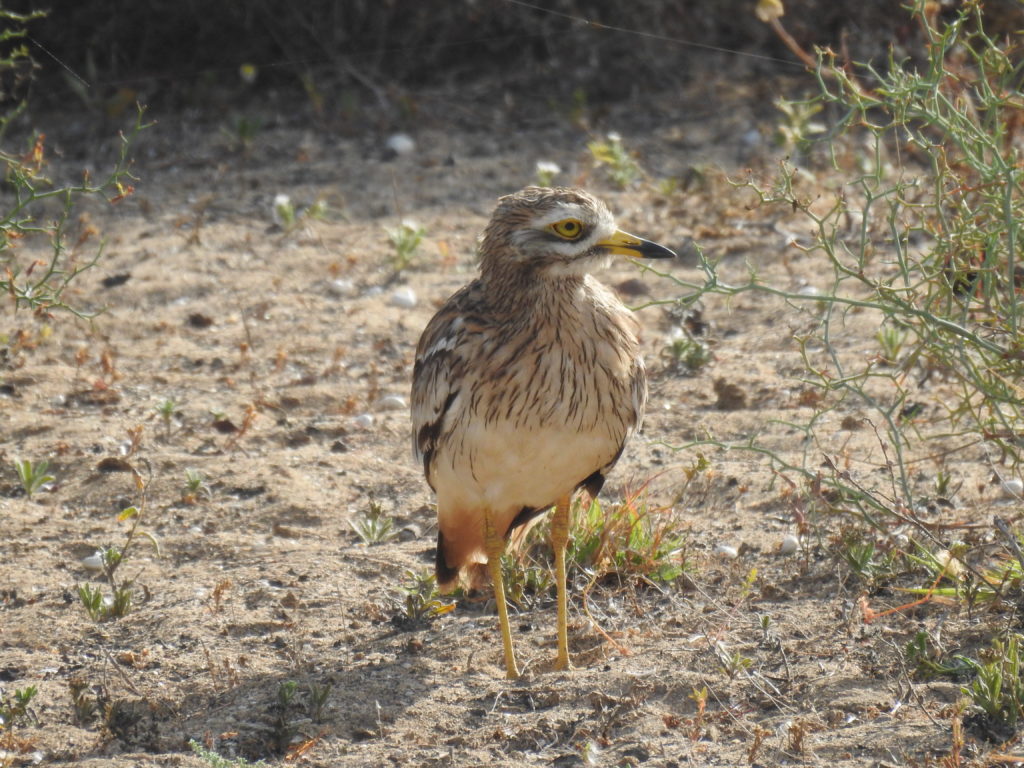
Eurasian Thickknee 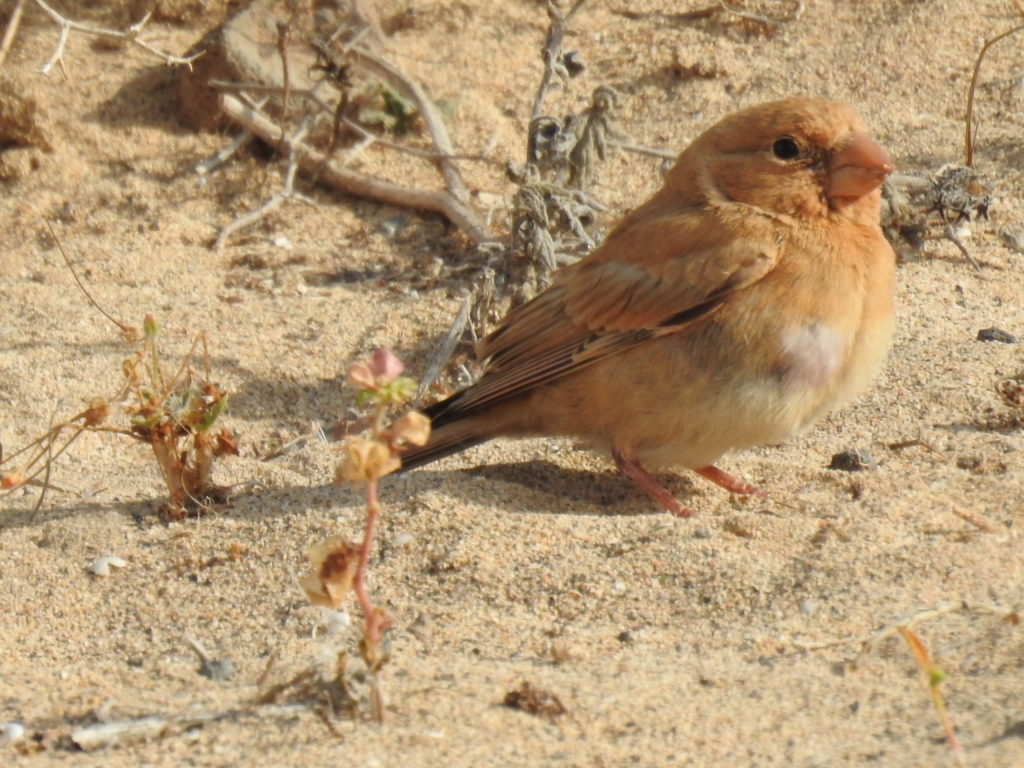
Trumpeter Finch 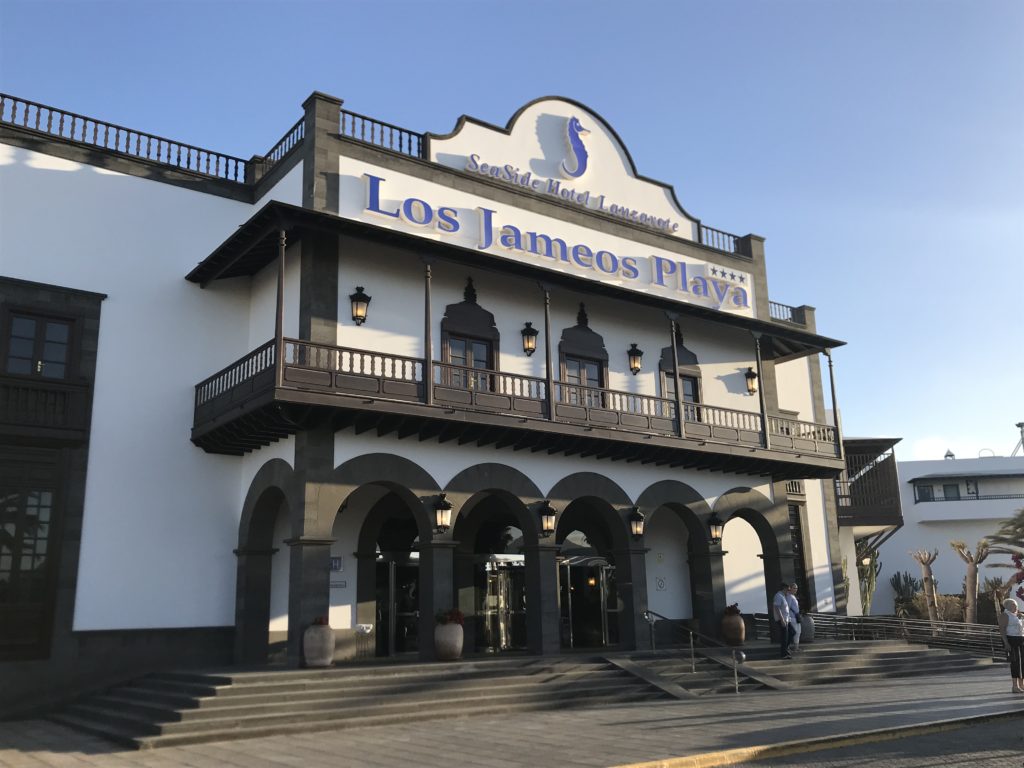
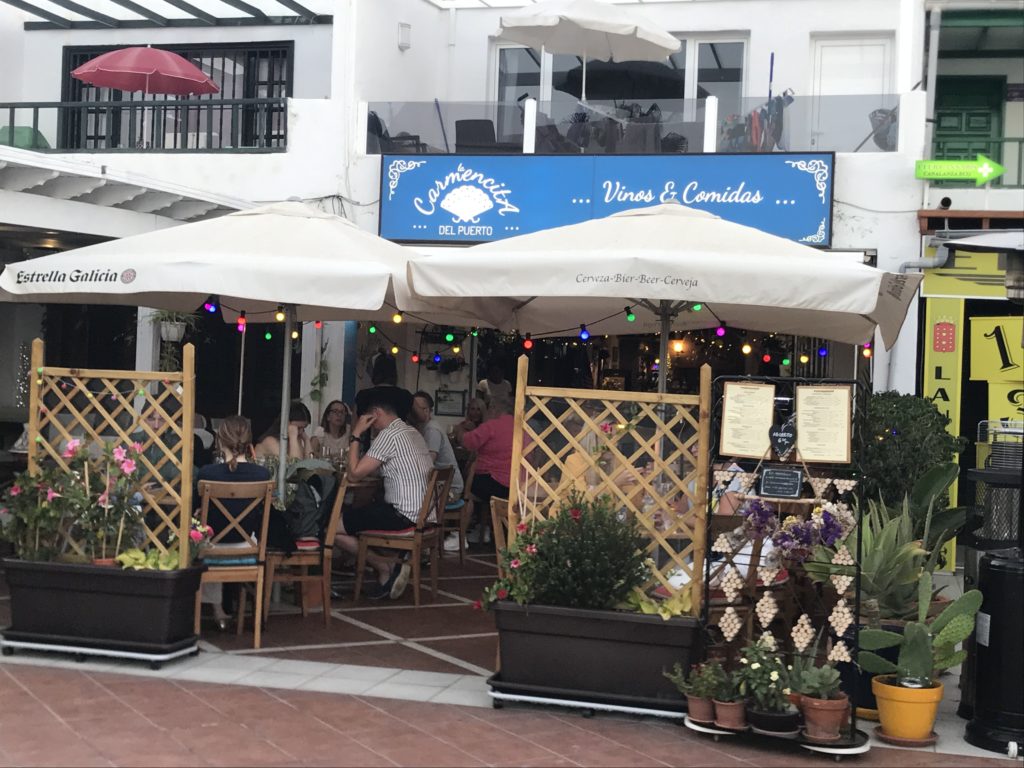
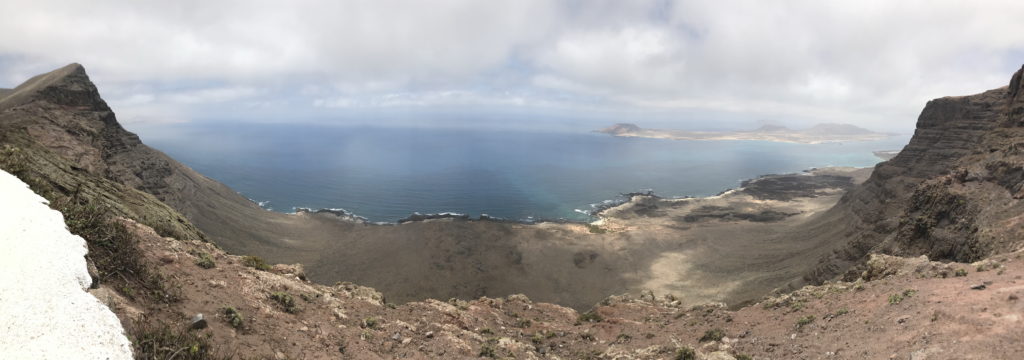
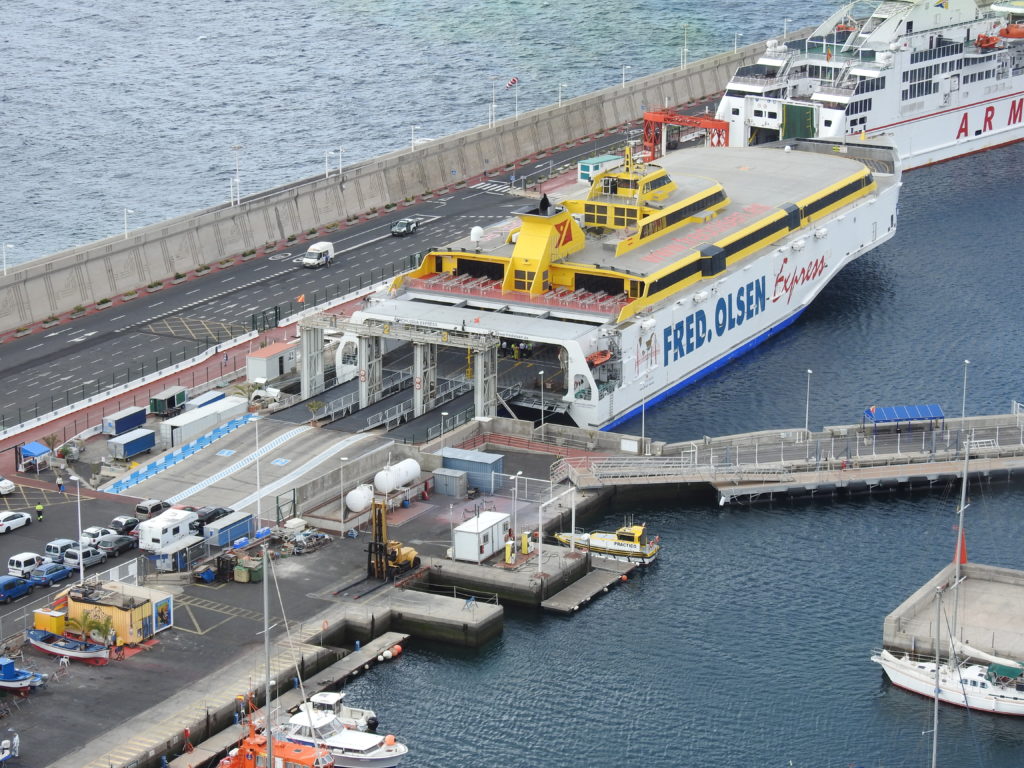
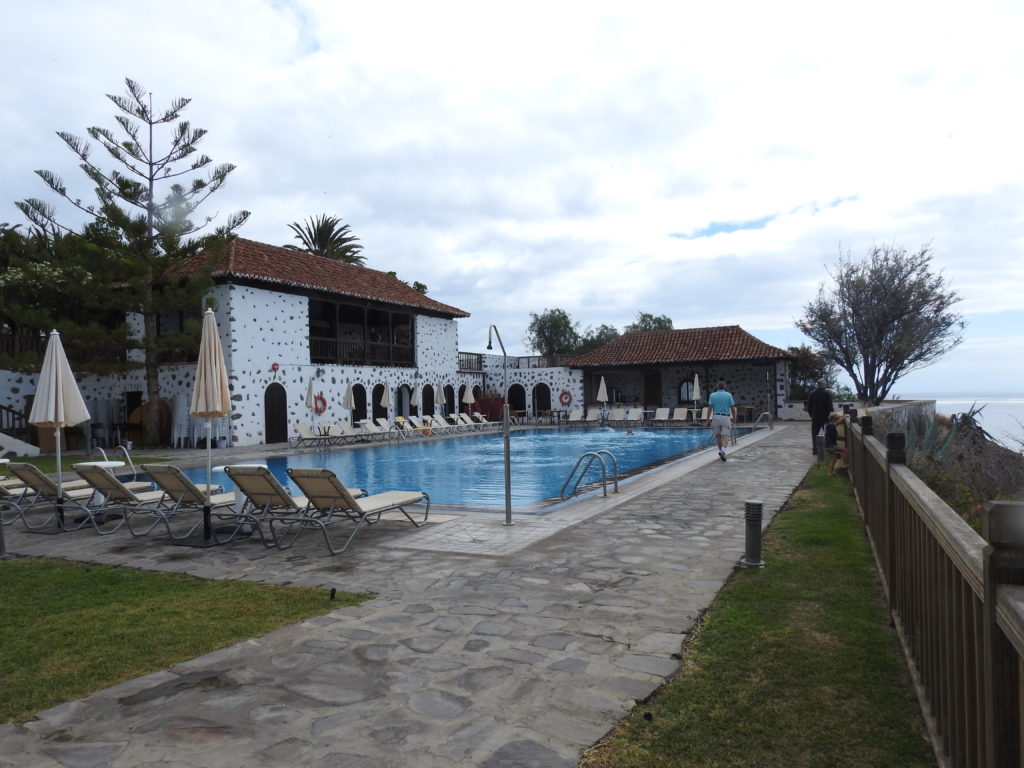
Parador de La Gomera 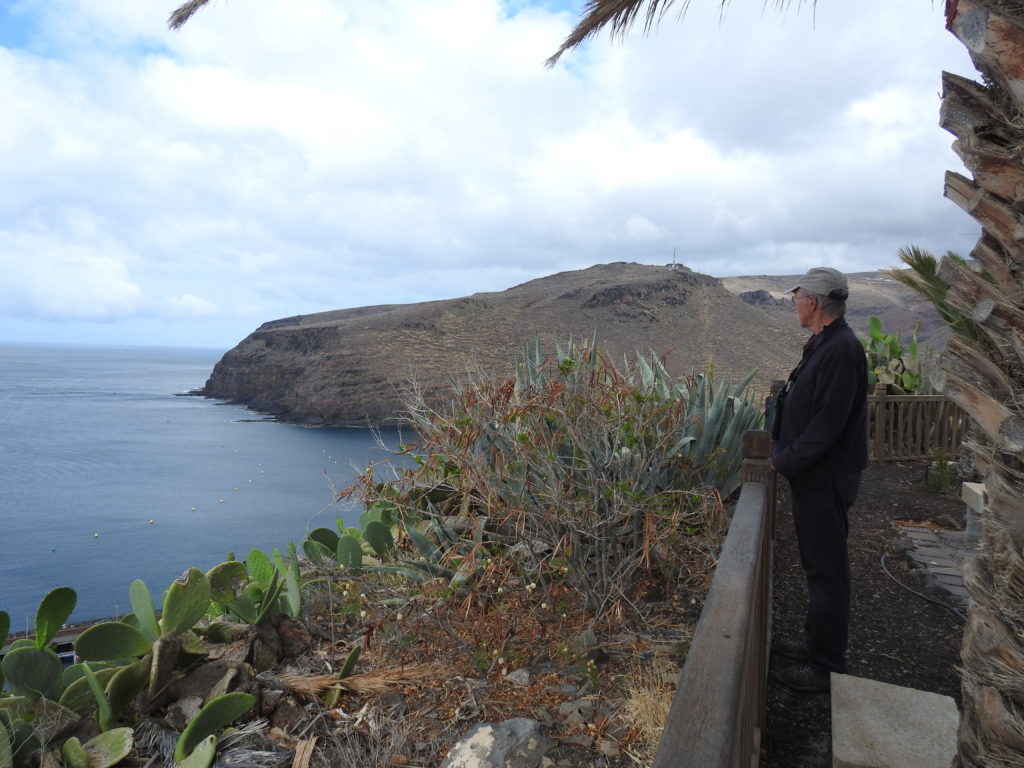
View from the Parador 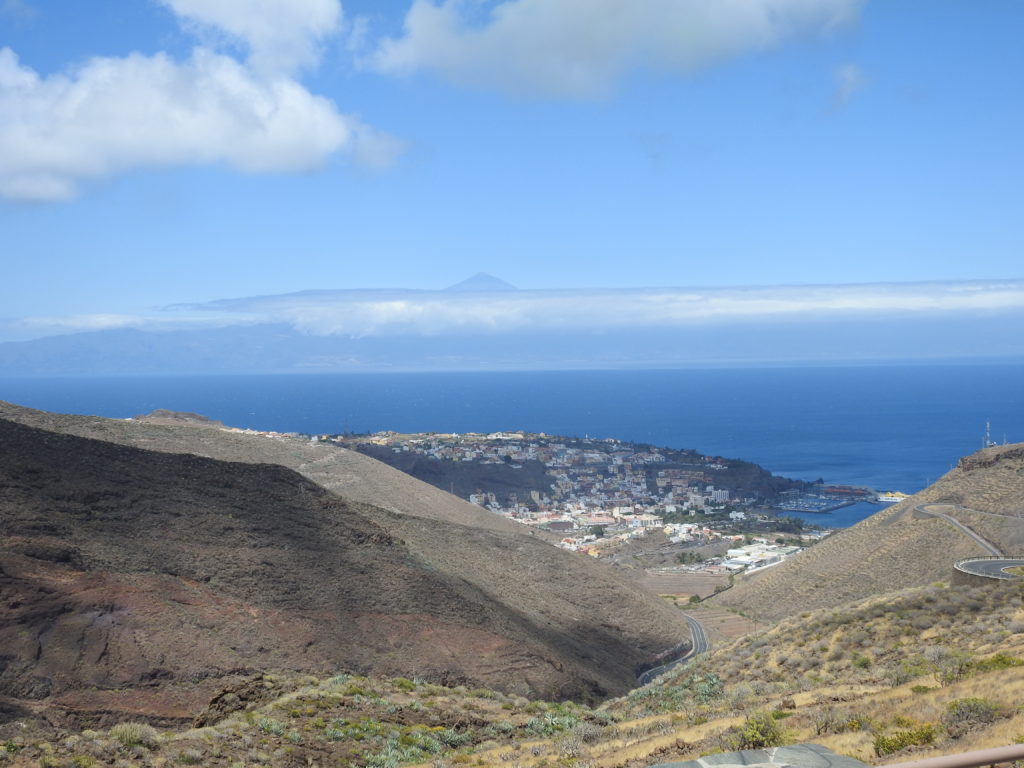
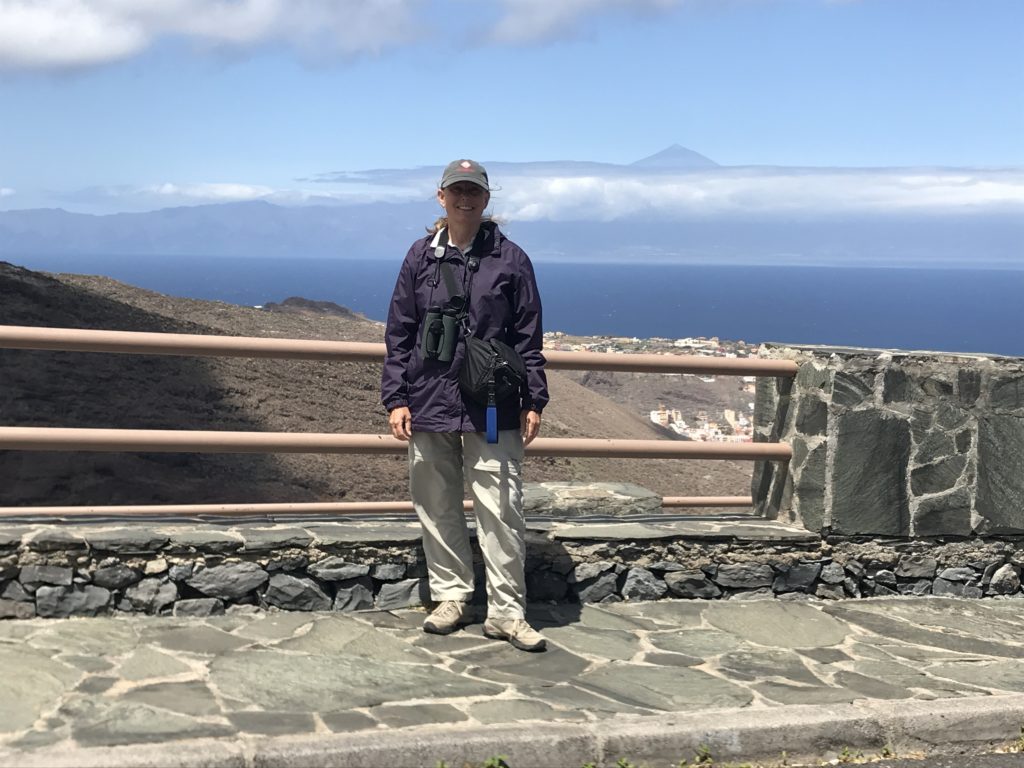
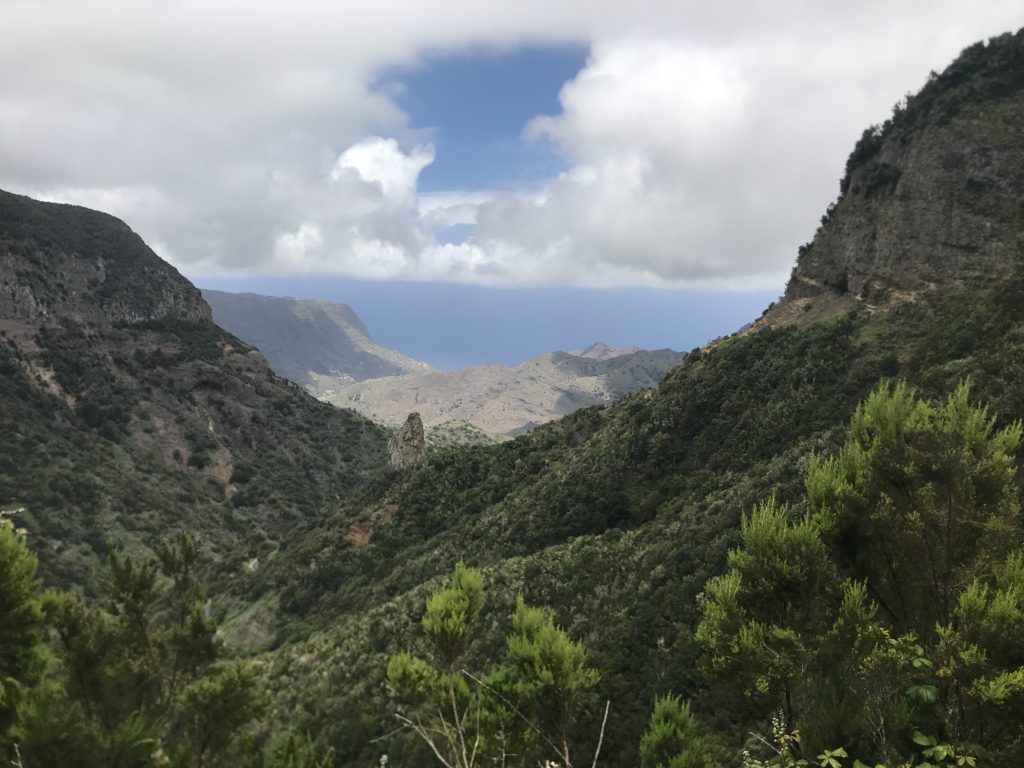
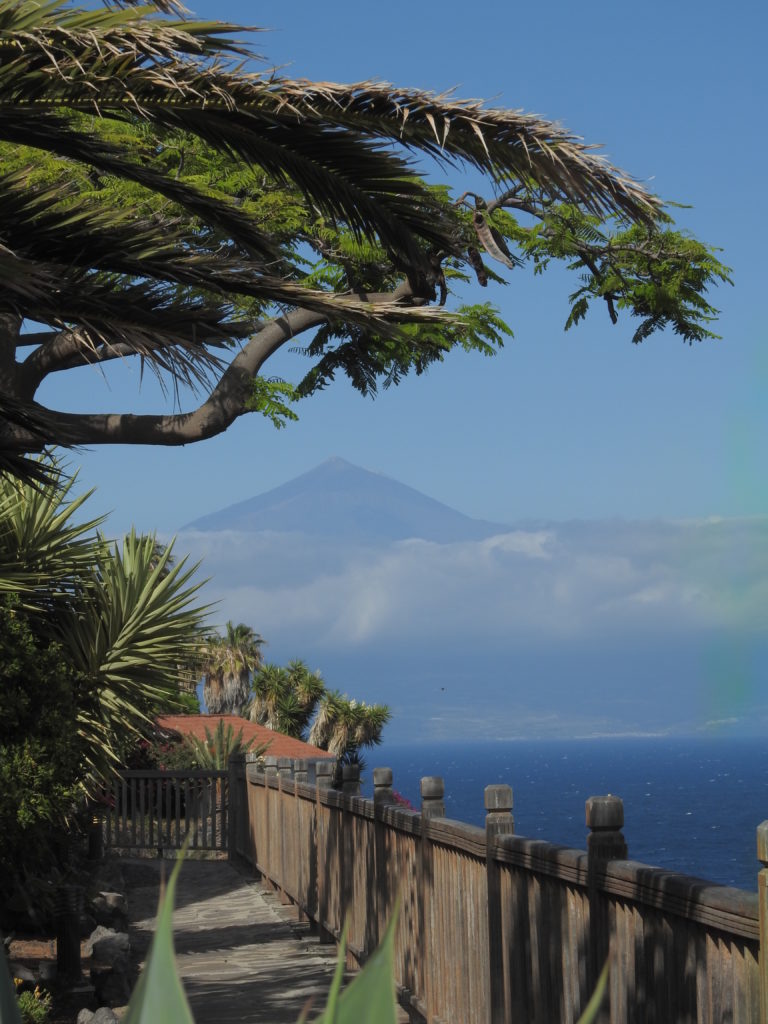
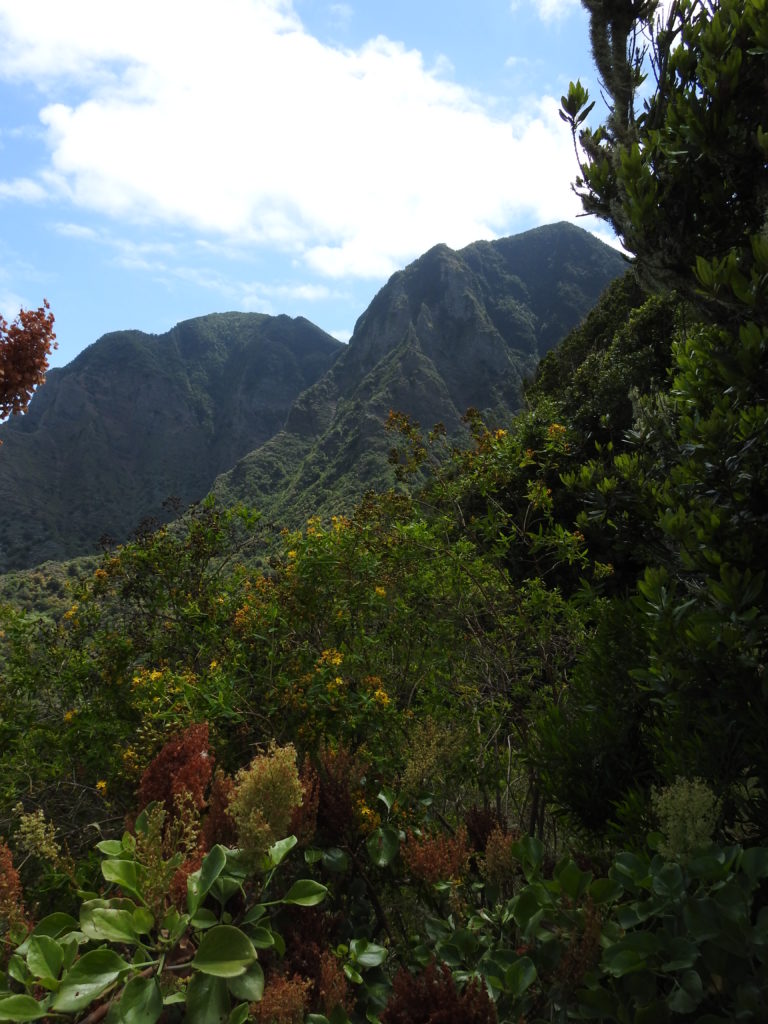
20 million years ago, this laurel forest went from the Atlantic to the Caspian Sea on both sides of the Mediterranean. La Gomera has the largest remnant left. 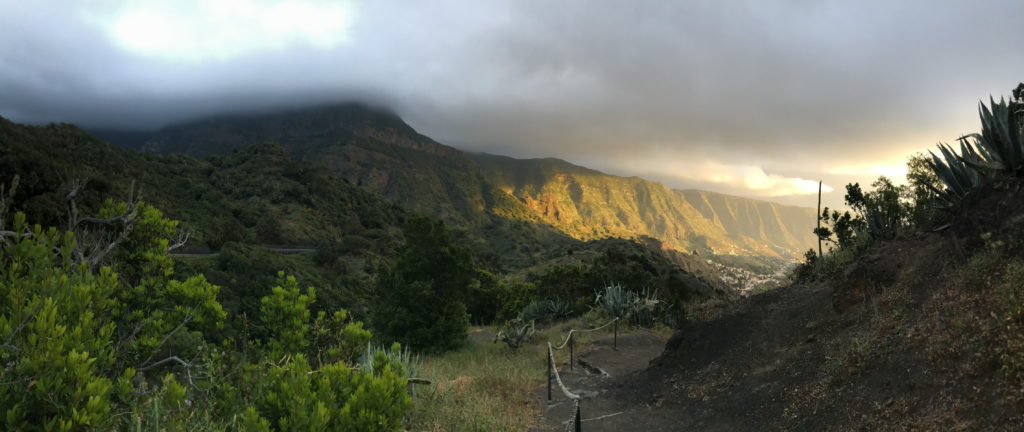
Garajonay National Park
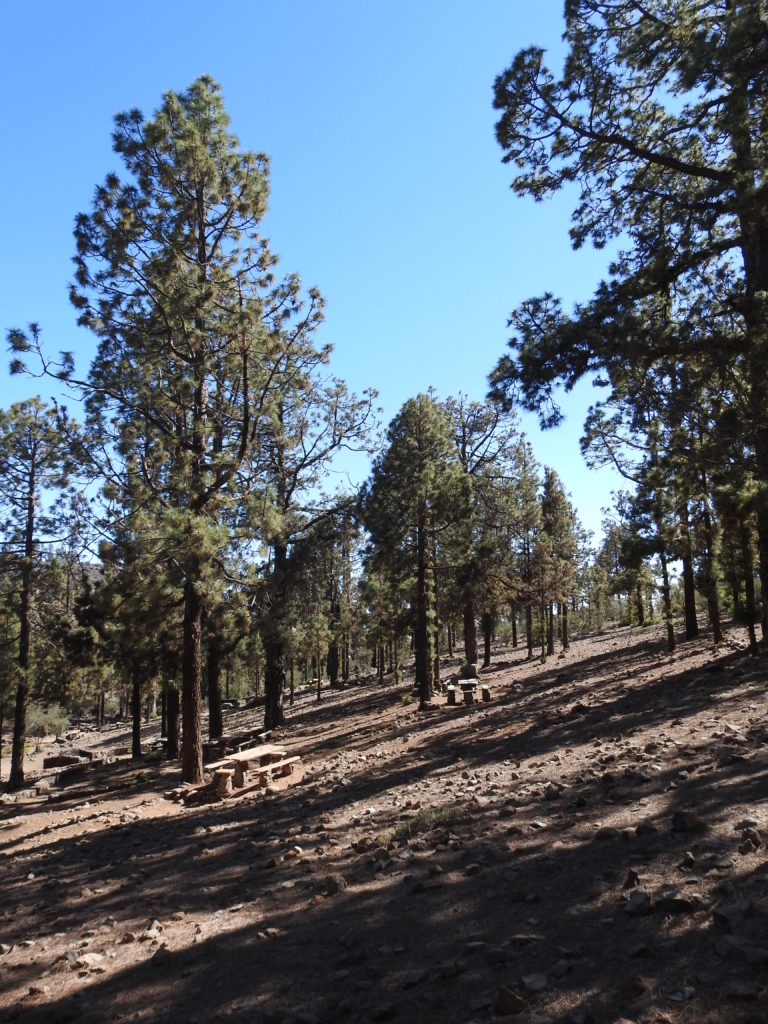
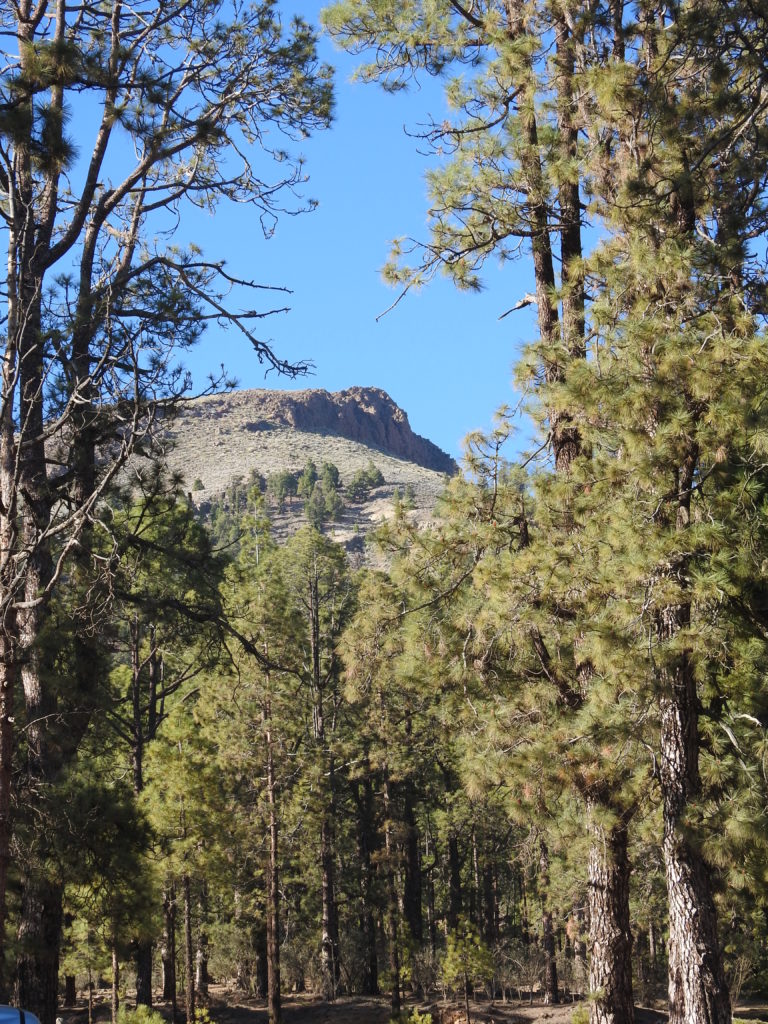
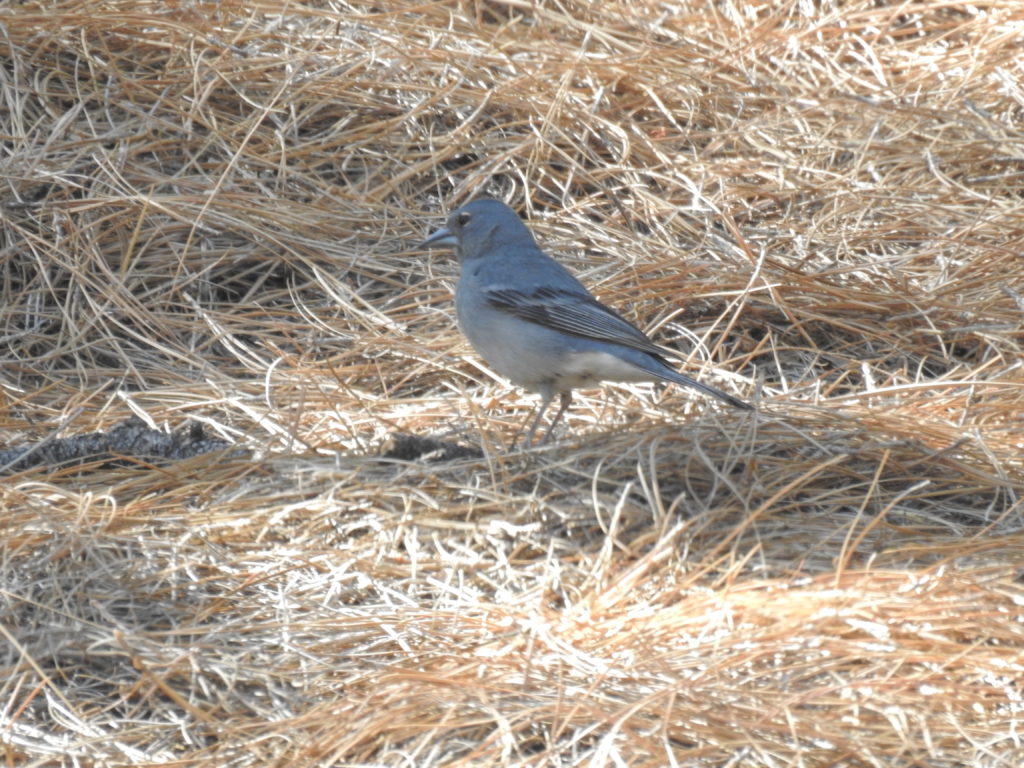
Tenerife Blue Chaffinch 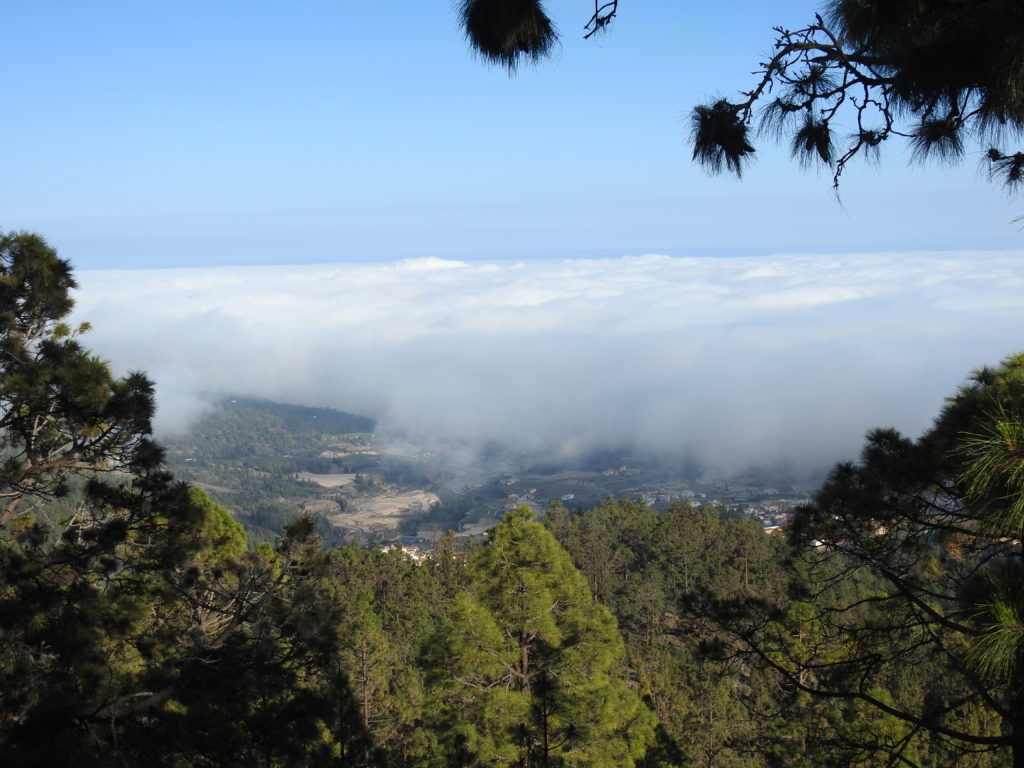
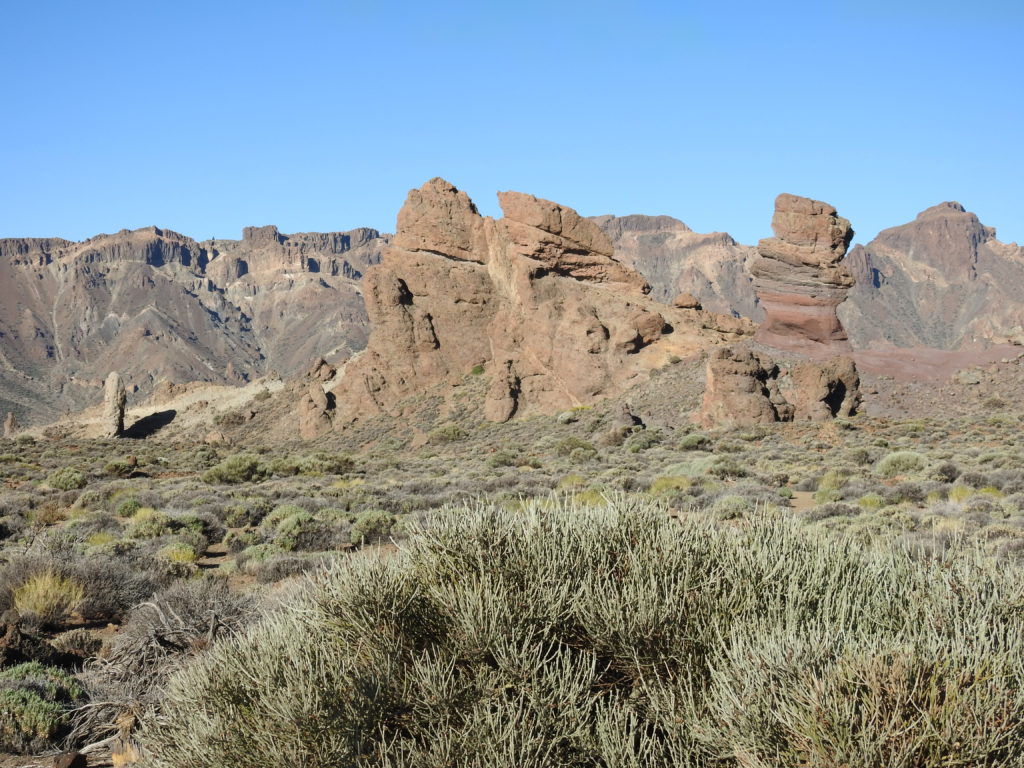
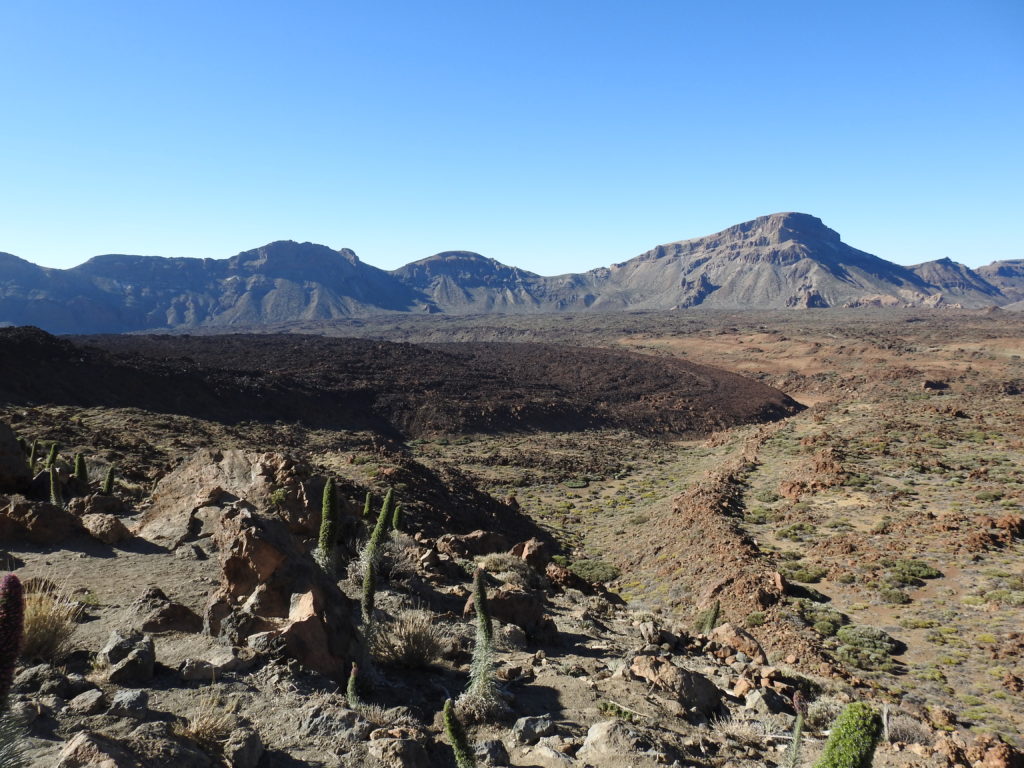
The plants in the foreground are Mount Teide Bugloss, an endemic. 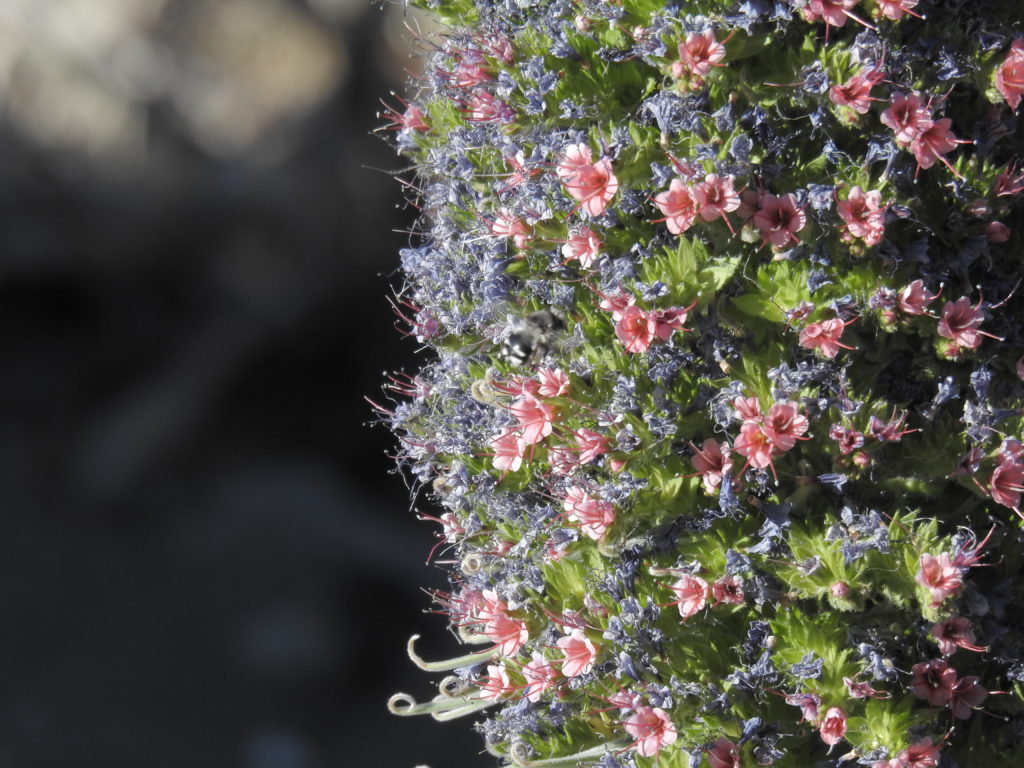
Close-up of Bugloss flowers from these spikes. 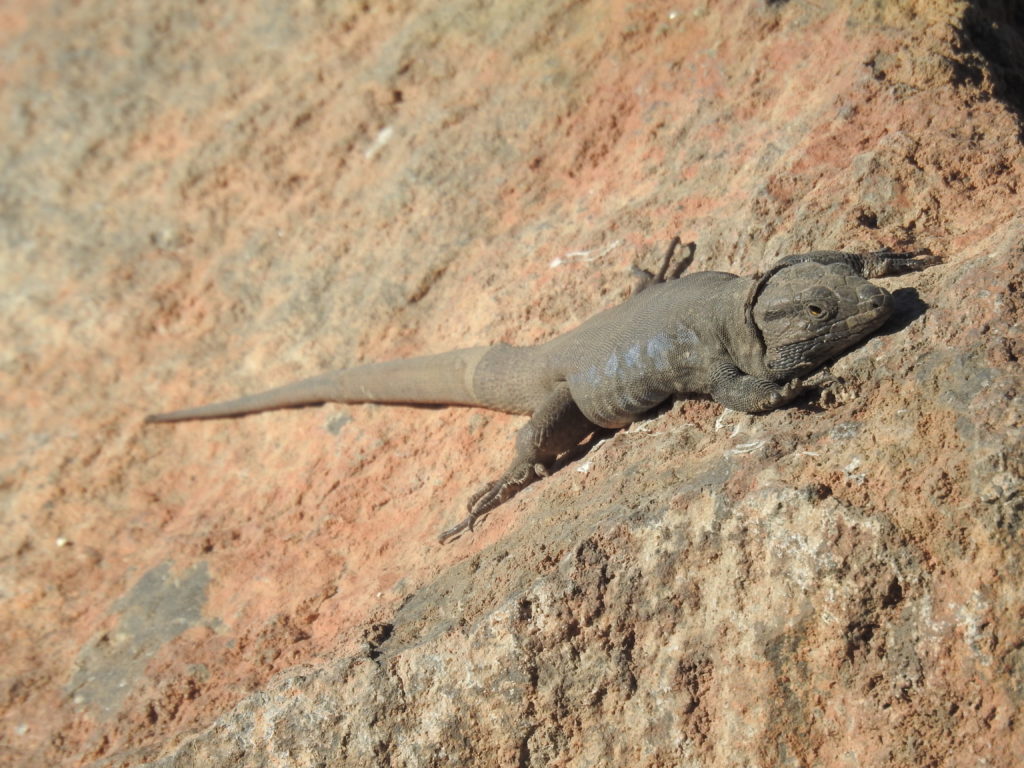
This lizard eats the nectar from these flowers. 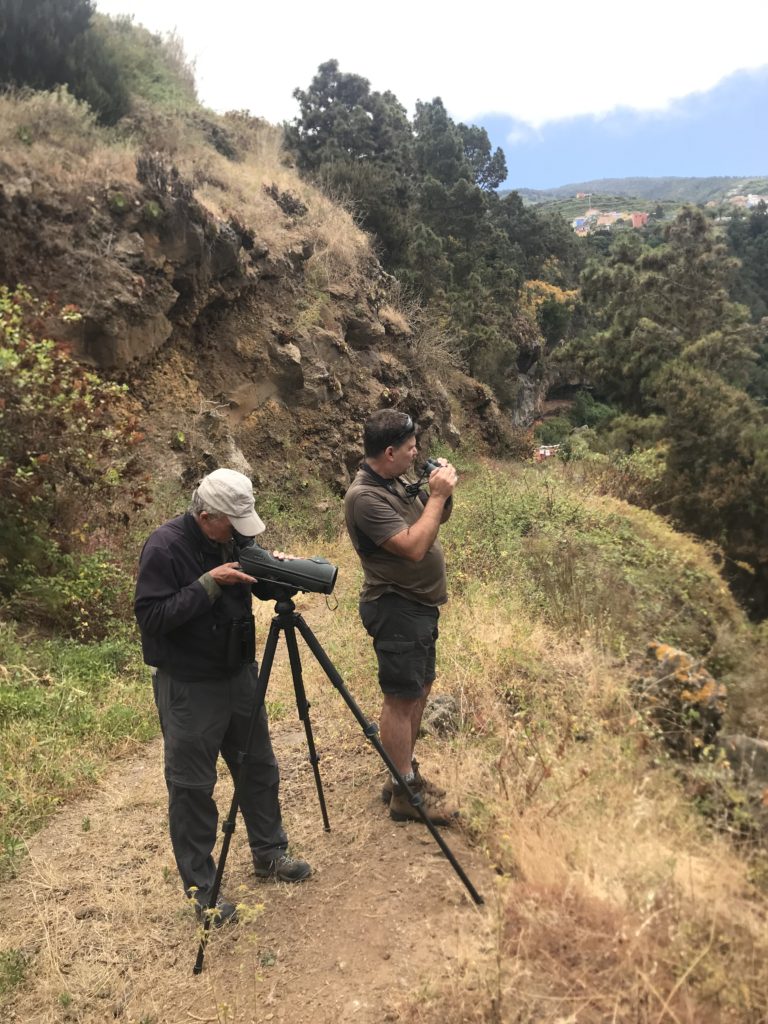
Terry and our Tenerife guide, Felipe Siverio 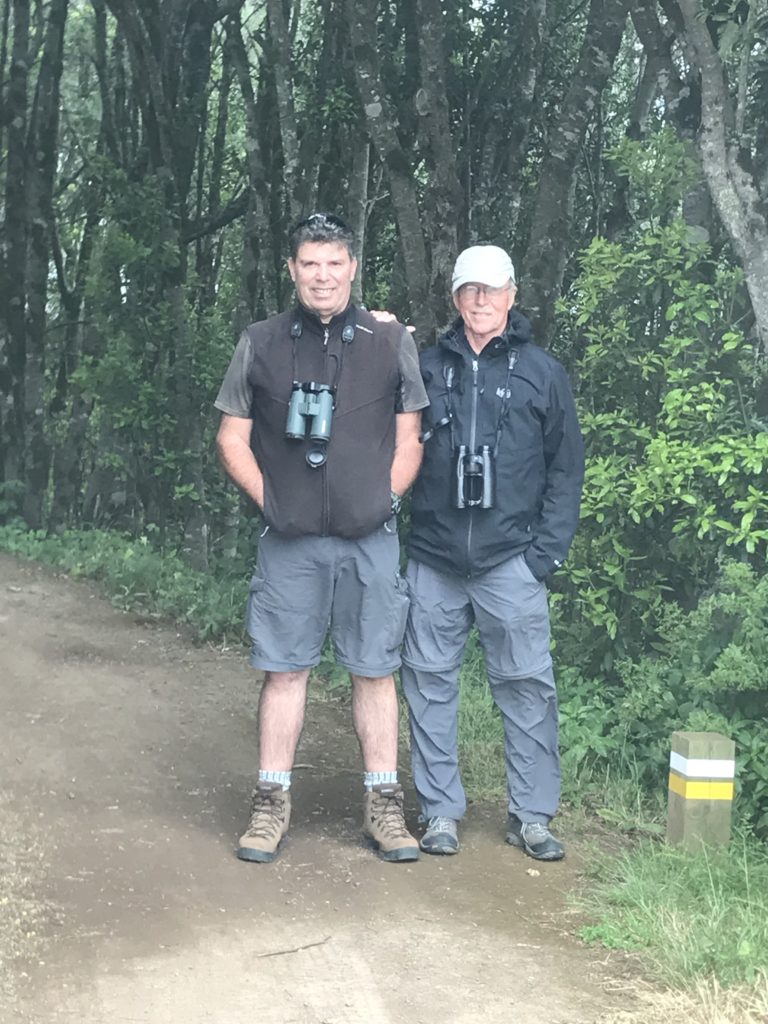
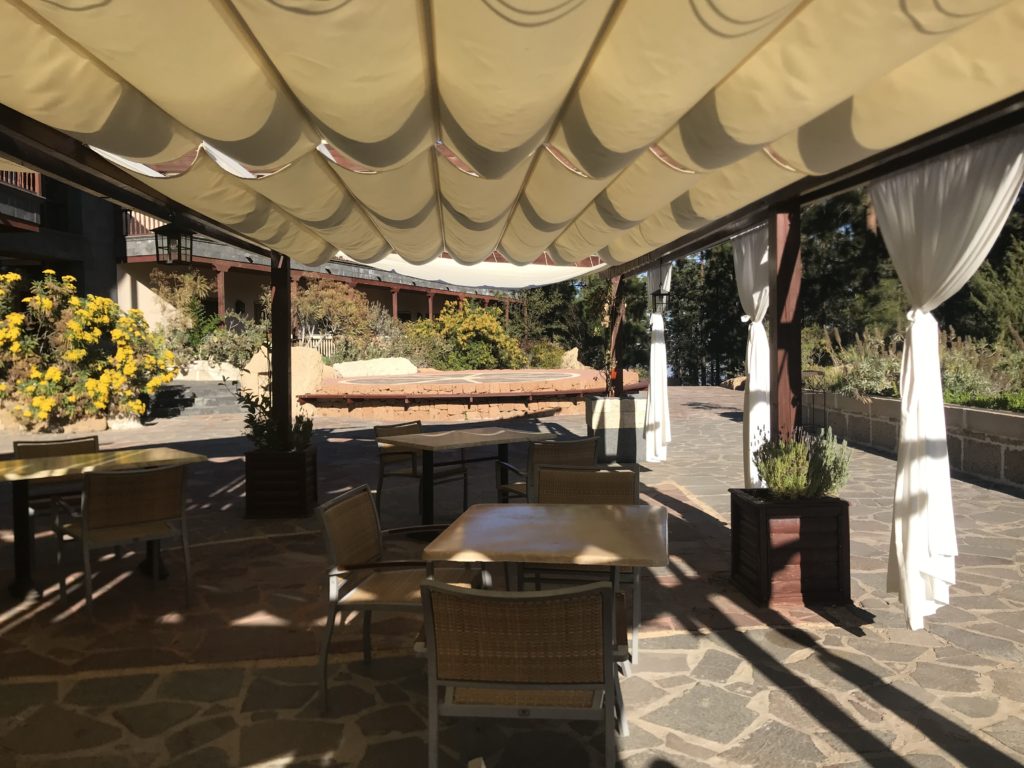
The terrace at Hotel Spa Villalba 